YOU ARE THERE





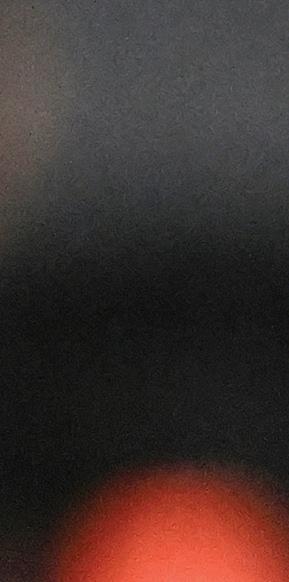

STEVE PALERMO’S BRAVE PITCH



































































B & C STUDENTS BASEBALL MENTOR your voice since 1976 member edition
OMAHA STAKES
THE
FOUR’ THREE SPORTS POINTS RULES YOUR CAREER NEW RULES ME CAN HANDLE THE TRUTH P.32 OCTOBER 2023 // REFEREE.COM
PENALTYFLAG ‘FINAL
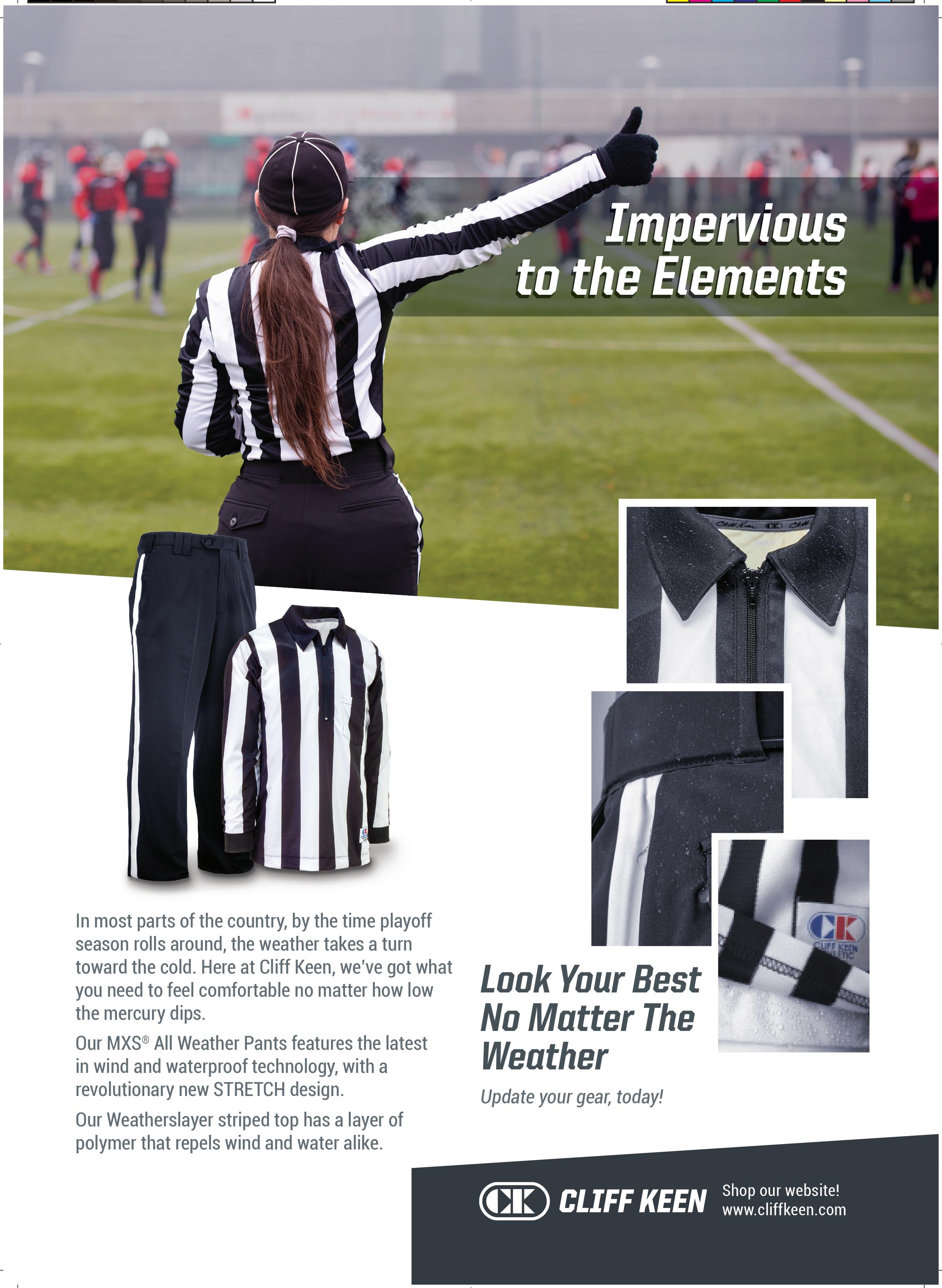
FEATURES
24 THREE-DIMENSIONAL
Working an NCAA final four in one sport is difficult. Mara Wager has done it in three.
36 HOW TO HANDLE CRITICISM
You’re gonna hear it; don’t let it affect your performance.
56 OMAHA!
A stadium in Nebraska is the field of dreams for college baseball umpires.
76 YOU ARE THERE: PALERMO’S FIRST PITCH
Injured umpire honored at 1991 World Series.
ON THE COVER
Age: 35
Officiating experience: 12-year high school football and baseball official; six-year JUCO and NCAA D-III college football official; four-year JUCO, NCAA D-III and D-II baseball umpire.
SPORTS
16 FOOTBALL
Magic Marker: Mechanics, Philosophies Regarding Penalty Flags; Chain Link: Working With the Crew on the Sideline; Seven Overtime Points for You
30 VOLLEYBALL
So Much to Do, So Little Time: R2s Must Remain Focused Between Points; Give Coaches a Little TLC; 5MW Brian Hemelgarn
40 SOCCER
The Mentor Ship: Chart a Course to Strong Relationships; AR = A First Class Assignment; Not So Firmly Rooted on Corners
48 BASKETBALL
RA Going Away to Stay?
NCAAW Redefines Key Element of Legal Guarding Position; Transition Solutions Involve Entire Crew
62 BASEBALL
Know Where to ‘B’ to ‘C’ These Plays: Proper Starting Positions a Must in the Middle; Master the Intangibles, Rule the World; 5MW Alex Skandalis
68 SOFTBALL
Pitching Rules No Longer a Drag: Major NFHS Rule Change Allows Pivot Foot Disengagenment; 5MW Andi Osters
78 ALL SPORTS
Crash Course: Seven Ways to Wreck Your Career; Be Strong When the Game Goes Long
COLUMNS
4 PUBLISHER’S MEMO
The End of an Era
10 THE GAG RULE
Letters: Thank You, Barry Mano; They Get It; Snap Shot; They Like Us
12 THE NEWS
Northwoods League Umpire Killed in One-Vehicle Accident; Three Among Pro Football Hall of Fame Semifinalists; NCAA Names Two Officiating Coordinators
46 GETTING IT RIGHT Not an Easy Road; UMPS CARE in Tampa; ‘Right Start’ RefReps Grant
74 PROFILES
Guest of Honor Never Saw Ceremony Coming;
Nonagenarian Referee Calls It a Career; Deafness Can’t Deter This Softball Umpire

82 FOR THE RECORD NFL Roster; Canadian Football League Roster
84 LAW
The ‘L’ Word; Kentucky Appeals Court Rules Against Referee; Survey Says
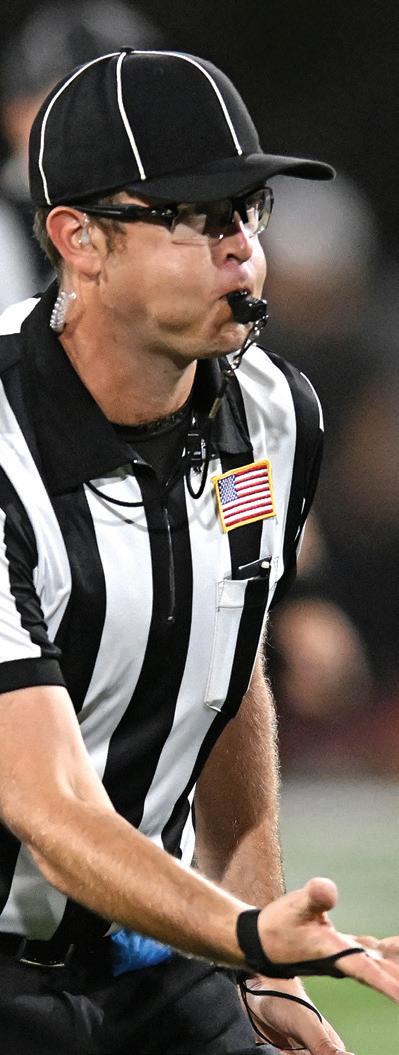
85 CLASSIFIEDS Camps/Clinics/Schools; Equipment/Apparel; Leadership Resources


86 LAST CALL
Best Seat in the House: Get it right and you’ll be successful. Get it wrong and controversy will dog you every step of the way.
BASKETBALL HIGHLIGHT THIS MONTH
A rule change for the 2023-24 NCAA women’s basketball season states the only restricted area on the playing court is directly under each basket.
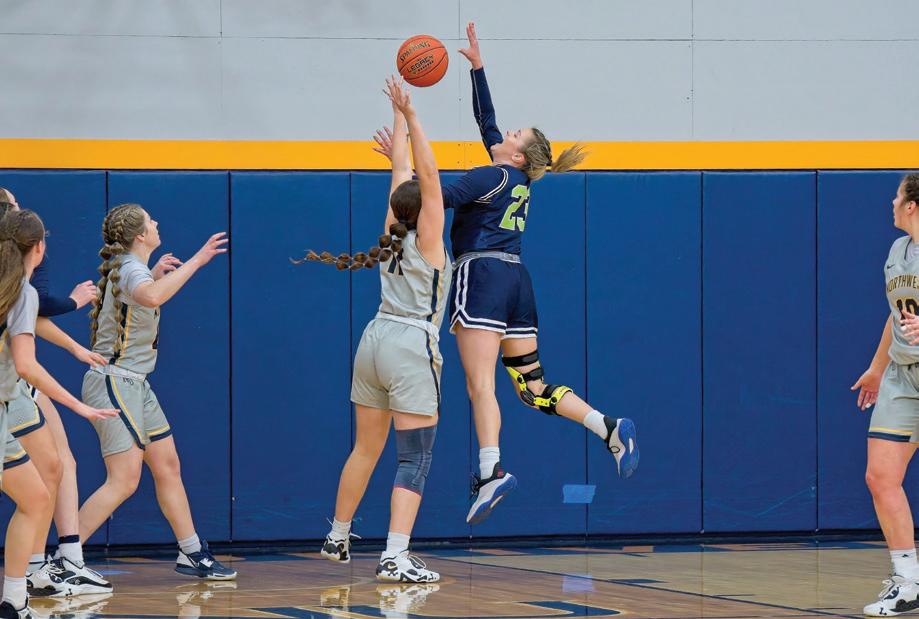
Find Referee Magazine on Facebook and follow RefereeMag on Twitter Volume 48, No. 10 Issue 564 OCTOBER 2023
CONTENTS
COURTESY OF MARA WAGER, DALE GARVEY (BASKETBALL), HESTON QUAN (COVER)
20
MORE, GO TO PAGE 48
FOR
Jeff Osborne Long Beach, Calif.
PUBLISHER’S MEMO
The End of an Era
It was spring 1975. I had just finished working another basketball season, the 15th of my officiating career. Just before the start of the 1974-75 season, I had left my full-time job in the Minority Affairs Department at the Schlitz Brewing Company in Milwaukee. Now the season was over. Now what?
Well, and I remember this like it was yesterday, I was driving over to an auto parts store and bam, “sitting” right there on my dashboard, in “plain view,” was a concept. I was riveted. How about a magazine for sports officials? How about a national association to advocate on behalf of sports officials? Whoa. I was so transfixed, I almost missed the turn to the auto parts store.
When I got back home, I mentioned my “visitation” to my wife, Jean. She said she thought it sounded like a really good idea. But publishing a magazine — huh? Starting a national association — huh?
I mulled the ideas over for a couple of days and decided to get some advice. The guy I chose to talk to was an attorney: Bill Kolbe. Some years earlier, Kolbe helped my brother and me incorporate a drag racing team. That corporation was no longer being used and I thought, if I chose to move forward, I might be able to use that corporation and save the state filing fee. Hah!
I made an appointment with Bill. He asked me what I had in mind. I told him of my vision. After listening to me for about 15 minutes, he voiced his surprise there wasn’t a magazine for officials. He got intrigued. Then, just a few minutes later, he said this: “I think I know some people who might invest in this thing.” I was stunned!
A few months later, we held a meeting at the Racine Country Club for the purpose of putting an investor group together. Bill had decided the group should be held to eight. The meeting concluded and the investor
group committed their checks. Referee Enterprises Inc. (REI) was formed
Three years later, under the continuing guidance of Mr. Kolbe, we launched the National Association of Sports Officials (NASO) as a 501(c)(3) not-for-profit educational association. We did that in late 1979. REI provided the seed money for NASO but did not “own” it. Bill was not too happy with that decision but he could not persuade me otherwise. I felt NASO had to be its own entity, owned by the members, not by a privately held company.
Throughout all the years since we launched Referee, we have been nurtured and supported by a small, tight group of investors. We started with eight. At the end of year one, four of them decided to get out and take the tax write-off. That left us with four shareholders. Those four shareholders continued with us for the next 40-plus years. They became part of the Referee family. They became dear friends.
Then, time started closing doors. The largest minority-shareholder was Bill Law Sr. He passed away in 2003. Kolbe, known to us as our “Coach K,” passed away on June 23, 2022. In both cases, their REI shares were willed to their heirs. That left Denny Waisman and me. Denny let me know he would like to redeem his shares. The old group was no longer.
I felt a desire to put a buyback together for all our minority shareholders. We did that. It was smooth because George Gissell, our CPA and advisor for all these years, guided us every step of the way. It was caring and it was done out of respect for the support this group has given us. Their legacy is summed up in all we have been able to accomplish throughout the past 47 years.
The end of an era has taken place. They will be missed. They are revered by our entire REI and NASO team for the opportunity they gave to serve and support sports officials. There is so much more for us to do.
Chief Strategy Officer/Publisher
Barry Mano
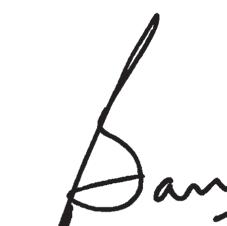
Chief Operating Officer/Executive Editor
Bill Topp
Chief Marketing Officer
Jim Arehart
Chief Business Development Officer
Ken Koester
Managing Editor
Brent Killackey
Assistant Managing Editor
Julie Sternberg
Senior Editor
Jeffrey Stern

Associate Editors
Brad Tittrington
Scott Tittrington
Assistant Editor
Joe Jarosz
Copy Editor
Jean Mano
Director of Design, Digital Media and Branding

Ross Bray
Publication Design Manager

Matt Bowen
Graphic Designer
Dustin Brown
Video Coordinator
Mike Dougherty
Comptroller
Marylou Clayton
Data Analyst/Fulfillment Manager
Judy Ball
Marketing Manager
Michelle Murray
Marketing Coordinator
Ben Wirth
Director of Administration and Sales Support
Cory Ludwin
Office Administrator

Garrett Randall
Client Services Support Specialists
Lisa Burchell
Sierra Miramontes
Trina Cotton
Editorial Contributors
Jon Bible, Mark Bradley, George Demetriou, Alan Goldberger, Judson Howard, Peter Jackel, Tim Sloan, Steven L. Tietz
These organizations offer ongoing assistance to Referee: Collegiate Commissioners Association, MLB, MLS, NBA, NCAA, NFHS, NISOA, NFL, NHL, Minor League Baseball Umpire Development and U.S. Soccer. Their input is appreciated.
Contributing Photographers
Ralph Echtinaw, Dale Garvey, Carin Goodall-Gosnell, Bill Greenblatt, Jann Hendry, Keith Johnston, Jack Kapenstein, Ken Kassens, Bob Messina, Bill Nichols, Ted Oppegard, Heston Quan, Dean Reid, VIP
Editorial Board
Mark Baltz, Jeff Cluff, Ben Glass, Reggie Greenwood, Tony Haire, John O’Neill, George Toliver, Ellen Townsend Advertising 2017 Lathrop Ave., Racine, WI 53405 Phone: 262-632-8855 advertising@referee.com REFEREE
the video at referee.com/pubmemo 4 | REFEREE October 2023
Watch
(ISSN 0733+1436) is published monthly, $49.95 per year in U.S., $84.95 in Canada, Mexico and foreign countries, by Referee Enterprises, Inc., 2017 Lathrop Ave., Racine, WI 53405. Periodical postage paid at Racine, WI and at additional mailing offices. Postmaster: Send address changes and undeliverables to REFEREE, PO Box 319 Congers, NY 10920. Direct subscription inquiries, other mail to REFEREE, PO Box 319 Congers, NY 10920. 1-800-733-6100. © 2023 Referee Enterprises, Inc. All rights reserved. (USPS Publication #107790.) Subscribers: Send address changes to REFEREE, PO Box 319 Congers, NY 10920.
FEATURING THE LATEST FOOTBALL PRODUCTS MADE BY SPORTS OFFICIALS
GOOD CALL OFFICIATING SPEAK EASY HEADSET

GOOD CALL OFFICIATING NFHS GAMEBOOK

Mark B. Skiatook, Oklahoma
“Great equipment addition for our crew. Very clear even over crowd noise. The push button is always there. You’re not fumbling around for a small mic with a small button.”
OFFICIAL REVIEWS
UMPLIFE PROFESSIONAL GARMENT BAG



Tim T. Batesville, Arkansas
“I love this book! It has everything in it you’ll need on the football field. There’s no point in carrying anything else. It’s slick, perfect size for your shirt pocket.”
OFFICIAL REVIEWS
WILLIAMS ULTIMATE FOOTBALL REFEREE INFORMATION CARDS

Nick D. Windsor, Connecticut
“WOW! #GameChanger. The quality of this bag is beyond reproach. Ray has designed this bag with o cials in mind.”
OFFICIAL REVIEWS
Donald P. Virginia Beach, Virginia
“Finally, a game card that has everything an o cial needs to record the game. Thanks.”
OFFICIAL REVIEWS




Preferred vendor
52 Years…And Still Going Strong
By Steve Vedder
All Tom Essenburg could think of was the warmth of a waiting bus.
Five decades later, that’s what Essenburg – then a senior defensive back at Holland High School –remembers most about a stormy Friday night before 2,100 thoroughly drenched fans at Riverview Park. He recalls having a solid night from his position in the Dutch secondary. He remembers a fourth-quarter downpour, Holland eventually winning the game and trudging wearily through the lakes of mud to the team’s bus.

But what never dawned on Essenburg until much later was that he had been the first to accomplish something only three defenders in the history of Michigan high school football have ever done:
Intercept five passes in a single game.

“I knew after the game that I had a bunch of them, but (at the time) we were in a 0-0 game and my mind was on just don’t get beat (on a pass) and we lose 7-0,” he said of the Sept. 21, 1962, contest against Muskegon Heights.
It wasn’t until the next morning’s story in the Holland Evening Sentinel that Essenburg grasped what exactly had happened. He didn’t realize until
then that he had picked off five passes in all, including two over the last 1:52 that sealed a 12-0 win over Muskegon Heights. One of the interceptions went for a 37-yard touchdown, which Essenburg does vividly remember.
“I remember thinking to myself that I had to score,” said Essenburg, who has been involved with high school sports in one fashion or another for more than 60 years. “There was a Muskegon Heights guy who had the angle on me and I pretty much thought I was going to get tackled, but I got in there.”
Essenburg’s recollection of the first three interceptions is a bit hazy after 61 years, but the next day’s newspaper account pointed out one amazing fact. The Muskegon Heights quarterback had only attempted six passes during the entire game, with five of them winding up in the hands of the 5-foot-8, 155-pound Essenburg – who had never intercepted a single pass before that night. He would later intercept two more in the season finale against Grand Rapids Central.
It wasn’t until the middle 1970s that Essenburg began wondering where the five-interception performance ranked among Michigan High School Athletic Association records. What he remembers most about the game was the overwhelming desire to find warmth and dry out.
“I just wanted to get to the bus and get warm. We were all soaked,” he said. “For me it was like, ‘OK, game over.’ I was just part of the story.”
Curiosity, however, eventually got the better of Essenburg. A decade later he contacted legendary MHSAA historian Dick Kishpaugh, who in an attempt to confirm the five interceptions, wrote to Muskegon Heights coach Okie Johnson, who quickly verified the mark.

It turns out that at the time in 1962, nobody had even intercepted four passes in a game. And since Essenburg’s record night, only Tony Gill of Temperance Bedford on Oct. 13, 1990, and then Zach Brigham of Concord on Oct. 15, 2010, have matched intercepting five passes in one game.
Three years after Essenburg’s special night, Dave Slaggert of Saginaw St. Peter & Paul became the first of 17 players to intercept four passes in a game.
Essenburg laughs about it now, but his five interceptions didn’t even earn him Player of the Week honors from the local Holland Optimist Club. Instead, the club inexplicably gave the honor to a defensive lineman.
It was that last interception Essenburg cherishes the most. His fourth with 1:52 remaining at the Holland 17-yard line had set up a
6 | REFEREE / MHSAA October 2023
Tom Essenburg holds up a copy of the program from the 1962 game during which he intercepted a record five passes for Holland against Muskegon Heights.
Essenburg, left, and Al Noles officiate an Addix all-star game in Grand Rapids.
MEMBER BENEFITs & services
Any Game, Any Time, Anywhere — You Are Covered

Insurance
(Sports Officials Security Program)
$6 million General Liability Coverage

Excess coverage for claims for bodily injury, property damage and personal and advertising injury (defined as slander or libel) up to $6 million per occurrence general liability limit with a personal aggregate of $14 million.
Assault-Related $15,500 Coverage
Provides coverage for certain legal fees and medical expenses and game fee losses resulting from injuries suffered when an official is the victim of an assault and/or battery by a spectator, fan or participant while officiating.

$100,000 Game Call and Assigners’ Coverage
Up to $100,000 coverage for claims involving a challenged game call which resulted in a claimed financial loss or a suit against an assigner by a disgruntled official.
Referee Digital Magazine

Allows you access to a digital customized MHSAA-version of Referee magazine to read wherever you’re on the go. MHSAA NASO members will receive exclusive MHSAA content through the digital magazine. Referee is the number one source of information for sports officials, written by officials. Each issue includes news columns and journalof-record reports and deep-coverage sport-specific sections complete with rule interpretations and caseplays.




Referee Magazine (NASO Print Edition)
MHSAA members have the option to upgrade to the print version of the magazine, delivered to your mailbox every month. 84 pages of in-depth feature stories as only Referee can report them.

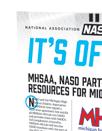




It’s Official Newsletter









Monthly 16-page newsletter providing association news, information, caseplays and educational product discounts.
Marriott VIP Card
Provides discounted rates at Marriott & Starwoodbranded hotels within the US and Canada, subject to availability.













With the VIP card, NASO members may receive a room rate of up to 25 percent off the regular price at participating hotels where space is available. The Athletic VIP card must be shown at check-in.
Registration Discount to The Sports Officiating Summit Members only registration discounts.
Ump-Attire.com
10% discounts
Member Information & Consultation Program (MICP)
LockerRoom
NASO LockerRoom
Online newsletter includes latest news on NASO, officiating techniques and philosophy.



Interactive Sport Quizzes
Online access to sport quizzes that will help you improve your knowledge of the rules.


Officiating Resources
Special Members-only buying discounts on Referee and NASO publications. Savings up to 20%.
Provides help when you need to sort out an officiating related issue, includes both free information and free consultation with a knowledgeable person.
Address:
Phone:



Web:


Email:
















2017 Lathrop Ave Racine, WI 53405
262-632-5448
naso.org
naso@naso.org
Publications Discounts & Savings Information Services Contact NASO wherever you’re on the go.
NASO covers common gaps in other officiating insurances, protecting you when other officiating coverages come up short.
NATIONAL ASSOCIATION OF SPORTS OFFICIALS
seven-play, 83-yard drive that snapped a scoreless tie. Then on Muskegon Height’s next possession, Essenburg grabbed an errant pass and raced 37 yards down the sideline to seal the game with 13 seconds left.
In those days, running games dominated high school football and defensive backs were left virtually on their own, Essenburg said.
“I kept thinking don’t let them beat you, don’t let them beat you. No one can get beyond you. In those days, once a receiver got in the secondary, they were gone,” said Essenburg, who describes himself as a capable defender but no star.
“I wasn’t great, but I guess I was pretty good for those days,” he said. “I’m proud that I’m in the record book with a verified record.”
Essenburg’s Holland High School career, which also included varsity letters in tennis and baseball, is part of a lifelong association with prep sports. After playing tennis at Western Michigan, he became Allegan High School’s athletic director in 1971 while coaching the tennis team and junior varsity football from 1967-73.
But he’s most proud of being a member of the West Michigan Officials Association for the last 47 years. During that time, Essenburg estimates he’s officiated more than 400 varsity football
games and nearly 1,000 freshman and junior varsity contests. In all, he’s worked 83 playoff games, including six MHSAA Finals, the most recent in 2020 at Ford Field. An MHSAA-registered official for 52 years total, he’s also officiated high school softball since 1989.
Essenburg also worked collegiately in the Division III Michigan Intercollegiate Athletic Association and NAIA for 35 years, including officiating the 2005 Alonzo Stag Bowl.
Essenburg said the one thing that’s kept him active in officiating is being a small part of the tight community and family bonds that make fall Friday nights special.
“I enjoy being part of high schools’ Friday night environment,” he said. “All that is so good to me, especially the playoffs. It’s the small schools and being part of community. I used to say it was the smell of the grass, but now, of course, it’s turf.
“I can’t play anymore, but I can play a part in high school football in keeping the rules and being fair to both teams. That’s what I want to be part of.”
While it can be argued high school football now is a far cry from Essenburg’s era, he believes his eventempered attitude serves him well as an official. It’s also the first advice he
would pass along to young officials.
“My makeup is that I don’t get rattled,” he said. “Sure, I hear things, but does it rattle me? No. I look at it as part of the game. My goal is to be respected.
“I’ve never once ejected a coach. It’s pretty much just trying to be cool and collected in talking to coaches. It’s like, ‘OK Coach, You’ve had your say, let’s go on.”
While Essenburg is rightly proud of his five-interception record, he believes the new days of quarterbacks throwing two dozen times in a game will eventually lead to his mark falling by the wayside. And that’s fine, he said.
“It’ll get beaten, no question. It’s just a matter of when,” he said. “Quarterbacks are so big now, like 6-4, 200 pounds, and they are strong-armed because of weight programs. They throw lots of passes now, so there’s no doubt it’s going to happen.”
Until Essenburg is erased from the record book, he’ll take his satisfaction from his connection with Friday Night Lights.
“I love high school sports and being with coaches and players,” he said. “My goal was once to work for the FBI or be a high school coach, but now I want to continue working football games on Friday nights until someone says no more.”
MHSAA 2023-24 Officials Registration Underway
The Michigan High School Athletic Association is accepting registrations online or by mail for game officials for the 2023-24 school year.
The MHSAA registered approximately 8,300 officials for the 2022-23 school year as building back the ranks continues after the number of registrations decreased during the height of COVID-19.
All officials who register may sign up for up to two sports as part of their registration. Officials also will receive membership in the
National Association of Sports Officials (NASO), which comes with a variety of educational and training resources including a subscription to an MHSAAbranded “Referee” digital magazine, and the NASO’s Shield liability insurance that will provide $6 million in coverage for officials while they are working both MHSAA and non-MHSAA events.
For new and returning officials, a $70 fee covers registration for up to two sports. Officials may register for additional sports at $16 per sport.
To avoid a $30 late fee, all fall sport registration applications must be received by Aug. 16, 2023. Winter sports registrations must be received by Nov. 11 to avoid the late fee, and spring sports registrations must be received by March 17, 2024.
Online registration can be accessed by clicking “Officials” of the MHSAA Website. More information about officials registration may be obtained by contacting the MHSAA by phone at (517) 332-5046 or by e-mail at register@mhsaa.com.
8 | REFEREE / MHSAA October 2023
That Report? Get It Write
Tell the truth. Write the report as soon as the game has ended. Don’t discuss your report with anyone but your association supervisor, your fellow officials or your attorney (if the situation merits).
Simple enough? Hardly.
We’ve all been tasked with writing reports, usually because a technical foul was issued, there was an ejection or perhaps players were involved in a fight.
But sometimes those reports are more grave, because the official was bumped by a player, a coach accosted an official in a negative way after the game or because fans interfered with play.
Then we encounter situations where common sense tells us the report is going to be heavily scrutinized: a player is seriously injured during play; the official makes a crucial rules error; the game needs to be stopped because of a brawl; or police need to escort the official from the game site.
The fact is, no matter how seemingly mundane the report and the incident might be, the written account you provide will be scrutinized no matter what. A flagrant foul call or targeting ejection that passes quickly with no complaints can bite you in the hindquarters later. Coaches will watch video later and won’t hesitate to call and/or send a clip to your supervisor if they believe your call was erroneous.
If supervisors have your report in hand when coaches call, they can present your side of the story.
But only if you write the report.




Every assigner in the world is going to tell you the first phone call you make had better be to them, or they should find your report in their inbox first thing the next morning. Here’s how to do it.
GET IT ON PAPER
As soon as possible after the game, write down everything you remember about the game, the incident and anything that was said, to you or to others. Keep your notes in your permanent officiating file and show them only to your attorney unless otherwise instructed.
DON’T PARAPHRASE
Remember to use the actual language spoken by the offender. Don’t be shy about relating curse words, threats or other statements which may be against your moral code. Your supervisor has to be able to share exactly what happened, especially when video can’t pick up the conversation or there were no other witnesses. Avoid the sort of mistake made in a recent report in which the official reported the player was disciplined for “disrespectfully addressing an official.” Spell it out.
BE THOROUGH
Remember also to note what other officials were doing during the play or moment in question. Write the rule you applied and why you applied it. Be sure to ask crewmates for their input on any incident — things may have happened while you were busy handling other matters.
In the case of a serious player injury, note the juncture of the game and a description of the play involved.
REMAIN DISPASSIONATE
Leave your emotions out of your report. Phrases like, “I was highly offended,” or, “The player was trying to get under my skin,” may adequately describe your feelings, but they are not helpful to someone trying to defend your actions.
DON’T EDITORIALIZE
Avoid hyperbolic phrases like, “In my 27 years of officiating, this is the worst behavior I’ve ever seen.” The actions you describe will speak for themselves. Also, do not offer your opinion on what action should be taken. If a suspension is warranted, the league or conference will handle it.
GET OUTSIDE INPUT
If there’s time, have someone else read your report for accuracy, spelling and grammar before you submit it.

Put your copy of the information in a safe place; in today’s litigious society, your handling of such a situation may become questioned by an attorney.
EXCLUSIVE ACCESS
ONLY FOR NASO MEMBERS
As an official, only NASO membership gets you into Marriott’s exclusive athletic discount program, which provides a discounted rate at Marriott and Starwood branded properties in the US and Canada.



With the VIP card, NASO members are able to stay at those participating hotels for a room rate up to 25 percent lower than the regular price, based on availability.

REFEREE / MHSAA July 2023 | 9
LETTERS
Thank You, Barry Mano
I first met Barry Mano almost 60 years ago when I photographed his gas-burning dragster as part of a photo shoot for the Midwest United Drag Racers Association. I have absolutely no recollection of that encounter, but I still have the photos to prove it took place. My second encounter with him came decades later after he’d been asked to advise and assist a group of racers in their efforts at organizing themselves into a cohesive unit. As he’s always done, he provided that group with yeoman’s service.
Truth be told, I am not now, nor have I ever been, a sports official, but I’ve been a close observer of Mr. Mano’s work with NASO and Referee for longer than I care to mention. The announcement of his stepping down as president of NASO kind of caught me off guard, but in thinking about it, few are more deserving of taking a step back than Barry. Thankfully, he’ll remain publisher of this fine publication. Five decades of dedication is more than enough to have earned him the right to cut back on his involvement with NASO.
The lengths to which Mano has gone to protect not only the integrity, but the physical welfare, of his fellow referees is remarkable. Every time a referee has been verbally or physically assaulted, Barry has beaten the phone lines into submission as he’s worked tirelessly to generate the kind of publicity about these incidents that will hopefully bring them to an end. I know how those assaults have impacted him because I can “see it” in the tone of his messages. He may not come right out and say it, but his dismay is evident in his words.
No, I’m not a sports official. But if I were, I could think of no better organization to represent me than NASO under the leadership of Barry Mano.
Jon Asher Glorieta, N.M.
THEY GET IT
“We do take responsibility. These are the best in college baseball. Not perfect, but they nailed the play at the plate.”
–Retired three-time College World Series umpire Scott Erby, in a Twitter response to irate fans during the 2023 NCAA D-I Men’s College World Series
SNAP SHOT
Ford Field Interception
Yes, as officials we often refer to ourselves as the third team on the field during any given contest. It does not usually mean we are required to make sensational, highlight-reel type plays very often. Marcus Williams, Redford, Mich., did just that on Nov. 26, 2022, during the Michigan High School Athletic Association Division 1 state championship game between Caledonia and Belleville. Sign him up!

THEY LIKE US
SURVEY SAYS
Have you ever had a cheerleader, mascot, photographer or athletic trainer removed/ejected from a contest?
23.7 %
76.3 %
SOURCE: SURVEY OF 126 REFEREE READERS
“We say that people are good at their jobs relative to the rest of the human population. You’re only supposed to be so good at your job that you are better than most if not all other people, and I believe that [MLB umpires] are.”
— Yahoo Sports MLB writer Hannah Keyser
COURTESY OF MHSAA
yes
no
WHAT PEOPLE ARE SAYING 10 | REFEREE October 2023 Tell Us What You Think Send email to letters@referee.com Send letters to: Editor, Referee, 2017 Lathrop Ave. Racine, Wis. 53405 Opinions expressed in “The Gag Rule” are not necessarily those of Referee. Unless otherwise stated, letters sent to Referee are intended for publication and become the property of Referee
THE GAG RULE

Northwoods League Umpire Killed in One-Vehicle Accident

Conor McKenzie, a baseball umpire in the Northwoods League, died July 9 from injuries sustained in a onevehicle car accident. He was 29.
According to the Wisconsin Department of Transportation, the Deatsville, Ala., native was traveling with two umpiring partners to a game in central Wisconsin when their vehicle, a 2003 Ford Expedition, went out of control while traveling southbound on Interstate 39 approximately 80 miles north of Madison. The vehicle went into the grassy center median and rolled over, ejecting McKenzie from the front passenger seat. He was pronounced dead at the scene.
The two other umpires — Andrew Thomas, 31, of Bellflower, Calif., and Andrew Chumley, 21, of Kingwood, Texas — were not ejected from the vehicle. They were transported to the University of Wisconsin Hospital in Madison with non-life-threatening injuries.
The trio had worked the previous night’s game in the summer collegiate wood-bat baseball league between the host Wausau Woodchucks and Madison Mallards, and were scheduled for the July 9 game between those same two teams in
THE WIRE
Football Officiating Alliance Announced
The Big 12 Conference announced July 6 it has entered into a football officiating alliance with the American Athletic (FBS), Mountain West (FBS) and Southland (FCS) conferences. The alliance will be in effect for the 2023 season. Each conference will have its own coordinator of officials to manage its respective officiating programs, with the
Madison. That game was postponed following the accident.
“It is with deep sadness and a heavy heart that the Northwoods League announces the passing of umpire Conor McKenzie in a tragic car accident this morning,” said the Northwoods League in a written statement released the day of the accident. “The league and its entire community are devastated by this loss and extend their deepest condolences to Conor’s family, friends and colleagues during this difficult time.”
“Conor was an amazing man with a heart of gold and a personality to match,” said Northwoods League Umpire Supervisor Larry Rose. “He had a special zest for life that’s unmatched. He left us today on his way to do what he loved doing more than anything, umpiring a baseball game, which he was extraordinarily good at. The Northwoods League lost not just an umpire but a dear member of our family. He will be missed in many, many ways but never forgotten.”
The league paid tribute to McKenzie by holding a moment of silence before each of its games played July 10. His funeral was held July 19 at Hunter Hills Church of Christ, followed by his burial at Brookside Memorial Gardens in Millbrook, Ala.
See “McKenzie” p.15
Three Among Pro Football Hall of Fame Semifinalists
CANTON, Ohio — Three former referees were among the 29 semifinalists nominated for induction into the Pro Football Hall of Fame for 2024.

alliance overseen by Big 12 Coordinator of Officials Greg Burks. More than 300 officials will be under the alliance’s umbrella. The goal is to ensure consistent training, evaluation and grading processes across the conferences, which will use this pipeline to develop a “bench” of officials that have been trained and evaluated under consistent philosophies and mechanics, the conferences said in a news release.
Jerry Markbreit, Jerry Seeman and Jim Tunney are being considered. The Hall’s 12-person Coach/Contributor Committee selected the trio from a longer list of nominated candidates to advance for further contemplation.
That committee will now consider the semifinalist candidates and vote to advance 12 through to the next round of the election process, the finalists stage. Those elected to the Hall of Fame’s class of 2024 will be announced during Super Bowl week in February.
Markbreit worked in the NFL from 1976-98, garnering 25 postseason assignments: two Wild Cards, 10 Divisionals, eight Conference Championships, one Pro Bowl and four Super Bowls.

See “Hall of Fame” p.14
Patriot League Names Basketball Coordinator

In mid-July, the Patriot League named Michael Schmidt as the supervisor of women’s basketball officials. Schmidt will recruit, assign and evaluate officials for the league and work with its coaches and institutions to evaluate game performances during the season and communicate rules changes
and interpretations. He will also coordinate officiating-related educational opportunities for officials and coaches.
Schmidt previously served as the coordinator of women’s basketball officials for the America East Conference since 2016.
Schmidt, who co-founded the Referee Academy in 2012, recently retired as chief operating officer for the Rochester (N.Y.) City School District.

THE NEWS
12 | REFEREE October 2023
DAVE STOCK (MARKBREIT, DENNIS HUBBARD (SEEMAN), LEE CALKINS (TUNNEY)
MarkbreitSeemanTunney














Everything you need to know about the new front court throw-in process for high school basketball. Make sure you’re fully ready for the 2023-24 season with this handy guide. Featuring easy-to-understand language and Referee’s exclusive MechaniGrams® and caseplay scenarios. *NASO Member & Bulk Discounts Available. $395 * DIGITAL $595 * PRINT $795 COMBO 2023 rule change WHAT YOU NEED THROW-IN RULES available now STORE. /BASKETball 5.5”x8.5” 16 pages BULK DISCOUNTS AVAILABLE STARTING AT JUST 10 COPIES FOR ORDERS OF 300 OR MORE, CALL 1-800-733-6100 FOR DEEPER PRICE BREAKS!
NCAA Names Two Officiating Coordinators
INDIANAPOLIS —
The NCAA in July named new national coordinators of officials in wrestling and women’s ice hockey.
Krissy Langley was named the NCAA national coordinator of women’s ice hockey officiating and Michael McCormick Jr. was named the NCAA national coordinator of wrestling officials.
Langley, who officiated NCAA ice hockey games from 2005-21, will work with the National Collegiate and Division III Women’s Ice Hockey Committees to select officials for national championships. She also will collaborate with conference coordinators from throughout the country and is tasked with developing consistent officiating nationally and working to increase the pool of women’s ice hockey officials.

Currently, Langley serves as USA Hockey’s national referee-in-chief of female development. She has held that position since 2022.
Langley’s NCAA on-ice officiating experience includes four NCAA
THE WIRE
IHSA Partners with Officially Human
The Illinois High School Association (IHSA) on July 25 announced a partnership with Officially Human, a Lombard, Ill.-based organization aimed at restoring respect for game officials. The IHSA said poor sportsmanship was “the prevailing reason officials leave the vocation” and

Women’s Frozen Fours (2010 and 2013-15). She also refereed the 2019 NCAA Division III women’s national championship game.
Langley, a quality engineer at General Mills in Minnesota, officiated 12 International Ice Hockey Federation Women’s World Championships.
”I am honored and excited to have the opportunity to lead officiating efforts of women’s hockey,” Langley said in a news release. “I have focused on building strong relationships, creating education and recruiting programs, and strengthening the network of officials across the country in women’s hockey. I look forward to this next chapter with the NCAA.”
McCormick began his new role Aug. 1 and will work alongside the retiring national coordinator, Tim Shiels, during a transition period.

McCormick, a college wrestling official for more than 30 years, officiated the Division I wrestling championships 25 times. He has served as the president of the National Wrestling Officials Association since 2014.
A former collegiate wrestler, McCormick continues to give back to the sport as a youth and high school coach. A general dentist since 1997 in Hampton, Va., he was inducted into the National Wrestling Hall of Fame for lifetime achievement in officiating in 2011.
it was hoped the partnership would help. Officials and member schools will be granted access to the “Elevate Respect” program and encouraged to share the program with students and fans. The IHSA and Officially Human will recognize and support officials on social media and at IHSA state finals events, and recognize teams and fan bases that exhibit the highest levels of sportsmanship throughout the year.
Hall of Fame continued from p.12
He is the only referee to earn four Super Bowl assignments. NASO named Markbreit the recipient of its Gold Whistle Award in 2007.
Seeman officiated in the NFL for 16 seasons, working 15 playoff games, two Pro Bowls and two Super Bowls. In 1991, he moved from the field to the front office, serving as senior director of officials for 10 years. He was the inaugural recipient of NASO’s Mel Narol Medallion Award in 2001. He died at his home Nov. 24, 2013, at the age of 77.
Tunney officiated in the NFL from 1960-90. He received 29 postseason assignments, including 10 Championship Games and three Super Bowls, including two in a row (XI and XII), the only referee to be accorded that honor. Tunney received the Gold Whistle Award in 1992. Tunney was also nominated for the Hall of Fame in 2013.
No onfield official had been inducted into the Hall until last year, when Art McNally became the first. McNally spent nine years as a field judge and referee before joining the league office in 1968 to oversee the officiating department. During his tenure, he brought technology to NFL officiating, including introducing a film study program and instant replay.
WhistleStop, RQ+ Announce Partnership


WhistleStop and RQ+ announced a partnership “committed to timing and game management solutions for sporting events” effective for the 202324 season.
WhistleStop plans to offer wearable
devices for officials for game clock control in the coming seasons in basketball, baseball and softball. The Raleigh, N.C.based company plans to launch a system for officials to control the play clock in football ahead of the 2024 season.
WhisteStop is a new player in the timing system marketplace, competing against Precision Time Systems, which was founded in 1993.
THE NEWS
14 | REFEREE October 2023
COURTESY OF NCAA
Langley
McCormick
NFHS, Referee Ink Publishing Agreement
The NFHS and Referee Enterprises Inc., the publishers of Referee magazine, announced in mid-July a new six-year publishing agreement starting this school year (2023-24) and continuing through the 2028-29 school year.
Under the agreement, Referee will continue to produce and publish the official NFHS Simplified and Illustrated rulebooks and the Refereecreated line of NFHS Preseason Guides. Additionally, Referee will produce and publish NFHS Officials Manuals in several sports with upgraded graphics and a significant increased focus on mechanics.
The new-look Officials Manuals
will also be fully customizable for state associations and their designees starting next year, meaning those states may put their own logos on the covers, provide state-specific instructions, policies and philosophies, and include state-specific mechanics.
“We’re very excited to continue our longstanding relationship with Referee and expand the offerings for the benefit of our member state associations,” said Dr. Karissa Niehoff, NFHS chief executive officer, in a statement. “Referee’s nearly 50-year track record in providing officiating education, and the NFHS’s own 20-year publishing agreement with Referee, makes this an easy call.”
The agreement calls for producing NFHS Preseason Guides for additional sports throughout the term of the agreement. Currently, Referee produces NFHS Preseason Guides for the sports of football, volleyball, soccer, basketball, wrestling, baseball and softball. New NFHS Preseason Guides will be introduced in stages through the next few school years in track and field, field hockey, swimming and diving, lacrosse, spirit, girls’ gymnastics and ice hockey.
“The NFHS has been doing some wonderful things for officials, and we’re proud to be a part of that,” said Referee publisher and founder Barry Mano.
Basketball Referees Attacked at Tournament
FAIRLAND, Ind. — Two referees were attacked by fans and players July 23 at the Next Level Classic girls’ youth basketball tournament in Fairland, Ind. Witnesses told WLWT-TV that players from the Cincinnati Indians Elite team started threatening opposing players and using profanity.
The referees ended the semifinalround game amid rising tensions and with the Dynasty Sports Performance Heat from Owensboro, Ky., leading, 44-10. Shortly after, the Cincinnati team players and fans attacked the referees. In video of the incident, a male referee can be seen wrestling with a youth in a black hoodie and players attacking a female referee, including kicking her and pulling her
hair while she is on the ground. One referee was treated by medics at the scene, according to the Cincinnati Enquirer. The players were escorted from the Triton Central High School
gym. The Shelby Sheriff’s Office had an open investigation.
Reports did not indicate the age level of the players, except that it was a high school level tournament.
McKenzie was the longest-tenured umpire in the Northwoods League, which features 24 teams located in the upper Midwest and plays a 72-game schedule between late May and midAugust. He made his Northwoods League debut in 2019 and worked almost 350 games, including each season’s all-star game and postseason during his four seasons in the league.
He began his umpiring career working youth, travel and high school baseball games, and attended the Wendelstedt Umpire School in 2020, after which he began working at the NCAA Division I and II levels.

He is survived by his parents, Mark and Lisa McKenzie, his grandmother, Joyce McKenzie, two brothers, two nephews and one niece.
SOURCES: WRCITYTIMES.COM, BROOKSIDEFUNERALHOMEAL.COM
Jim Keen
Inducted into HOF
Jim Keen, who was instrumental in the growth of Cliff Keen Athletic, was inducted into the National Sporting Goods Hall of Fame Class of 2023. Keen, who died in 2020, was recognized May 23 during an induction ceremony in Nashville, Tenn.. His father, Cliff Keen, was inducted in 2012.
Argentine Soccer Player Dead After Attack
An amateur soccer player in Buenos Aires was found shot to death July 18 shortly after he was charged with attempted homicide for a violent assault of a referee during a match a few days prior. Williams Alexander Tapon, 24, gained notoriety when video of his attack on referee Cristian Ariel Paniagua went viral. The video shows the player knock down the referee
with a punch, then kick the referee in the head while the referee was on the ground. The referee was treated at a local hospital. Had he been convicted, Tapon faced 10-15 years in prison.
NFHS, RefReps Enter Agreement
The NFHS and RefReps entered a three-year agreement in which RefReps will be recognized as an education content collaborator.

RefReps works with 32 NFHS member state associations in various capacities, including providing online officiating training as well as curriculum for high schools and colleges wanting to provide officiating education to their students.
SOURCES: RQ+, PATRIOT LEAGUE, YAHOO SPORTS, WTHR-TV
REFEREE October 2023 | 15
McKenzie continued from p.12
MAGIC MARKER Mechanics, Philosophies Regarding Penalty Flags
By George Demetriou and Jon Bible
In the early days of football, officials used horns to signify a foul had occurred. They were strapped to the official’s wrist, were about eight inches long and were blown to let everyone know an infraction had been seen. In the 1940s, flags came into vogue and horns went by the wayside. Since then, there have been differences of opinion and new thinking on where flags should be positioned, how obtrusive they should be and how they should be thrown.
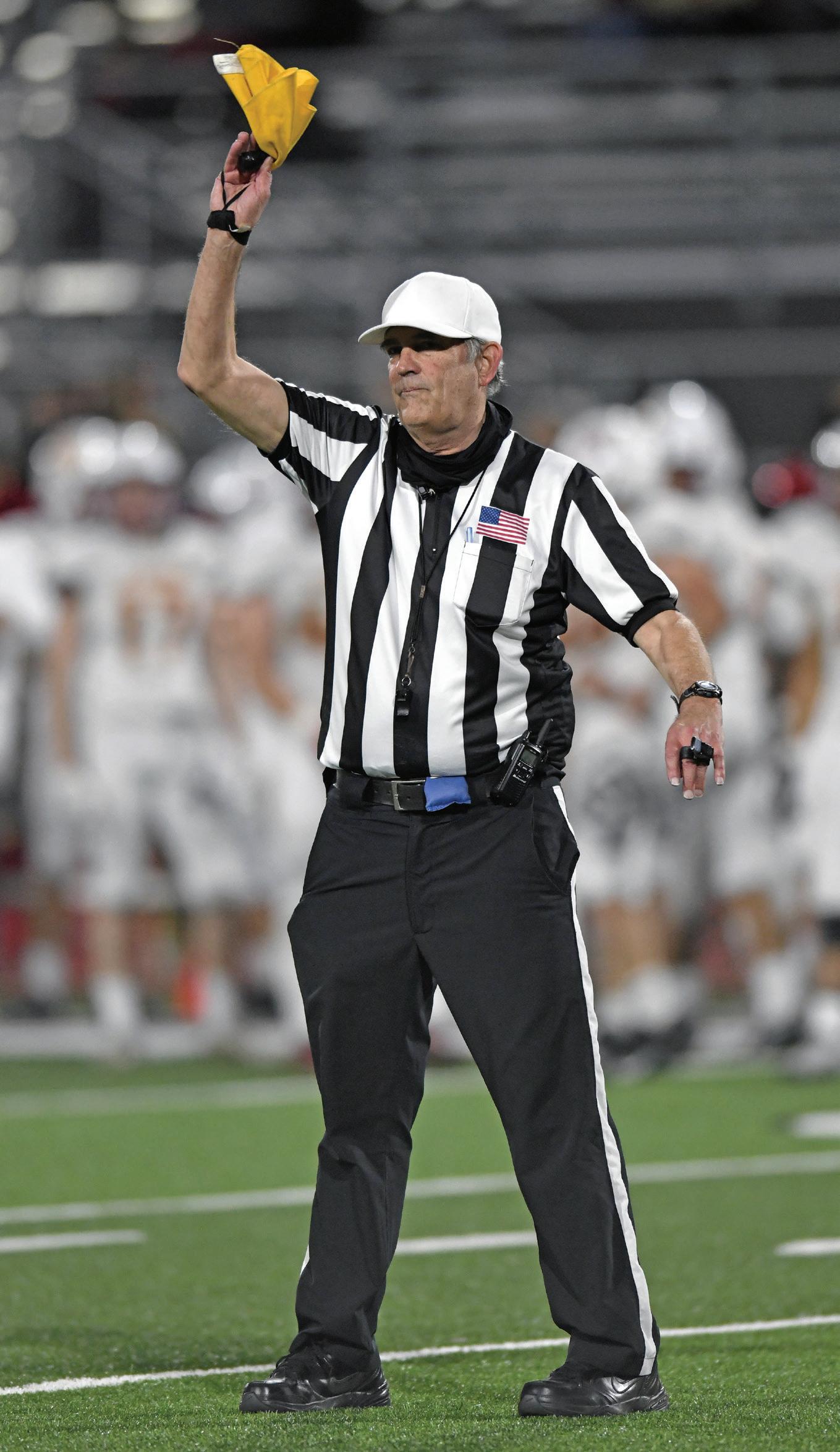
Attitudes about the location and visibility of flags also changed. The new thinking was that having visible flags sent the message we were “locked and loaded,” hoping a player would commit some offense so we could wing the flag his way. That didn’t fit well in an era in which a premium was (justifiably) put on handling coaches, players and situations with good people skills instead of meting out justice.
Most officials put the flag in the front of their pants, with only the ball visible so it can be easily grabbed; sometimes the ball is sheathed in tape so it blends in with the uniform.
Theories about how to throw flags have also changed. In the old days, we sent them sky-high. Now, we don’t aggressively launch it. Even when the flag is caused by a venting coach, just toss it out in front of you.
The flag is thrown carefully to a spot when a spot foul occurs. Since the spot of the foul may be the
FOOTBALL RULES, MECHANICS, PHILOSOPHY EDITOR: JEFFREY STERN jstern@referee.com 16 | REFEREE October 2023
HESTON QUAN
John Holmberg, La Habra Heights, Calif., signals a flag thrown on the previous play should be disregarded. While some may think picking up a flag indicates indecision or inaccuracy on the part of a crew, it is a fail safe to ensure the correct ruling is made.
enforcement spot, the official must get the flag as close as possible to the location the foul occurred. If the flag is off target, the official should relocate the flag as soon as possible after the play by picking it up and moving it definitively.
If there are multiple flags for the same foul and the flags are more than a yard apart, the difference must be quickly reconciled. Either moving both flags to the same spot or picking up the off-target flag works. The longer you delay making the correction, the more it will appear you are manipulating the situation. Also, attempting to kick it to the correct spot denotes laziness and calls the accuracy of the call into question.
A few techniques to avoid: slam dunking the flag to the ground; looking angry when you toss it; holding the flag and waving it, instead of throwing it; or throwing it at the fouling player. On late hits, the latter looks confrontational and worse yet, might hit the player in the face.
Be careful on fouls around the offensive goalline, e.g. grounding or offensive holding in the end zone. Don’t let your flag end up in the end zone unless the foul is there. It’s hard to explain when you enforce a foul as if it occurred in the end zone when your flag is in the field of play, and vice versa.
Picking up flags and throwing late flags. Picking up a flag or throwing a late flag should not be done very often and it certainly is not a crutch to compensate for weak officials. The risks entail antagonizing a thin-skinned official and raising the ire of a coach who thought a call went against the opposing team. The important thing is to get the call right. That may mean having a brief crew discussion that affirms the original call.
Certain plays are rife for conferences, which lead to picking up a flag or throwing one after the play has ended.
Ineligible receiver downfield/ offensive pass interference. Whether an ineligible simply goes downfield or goes beyond
the allowable limit and initiates a block against an opponent, a flag is appropriate when a forward pass is thrown and it’s possible the ball crossed the neutral zone. If it is subsequently determined the pass did not cross the line, the flag must be picked up. Under NFHS rules, a pass deflected by a team B player behind the line is considered to not have crossed the line while in NCAA play that applies for a tip by any player. Depending on crew size, a specific official is responsible for determining if a pass crosses the line, and that probably won’t be the official who observes the possible illegal act.
Defensive pass interference. There are multiple ways for pass interference to occur and in many cases, no one official can see exactly what transpired, including which player initiated the contact.
The flag should be picked up if the pass was tipped before the illegal contact. Pass interference restrictions end for all players once a team B player touches the pass. If a team A player tips the ball, restrictions also end for all team B players and for eligible team A players.
Two forward passes. An apparent second forward pass should be flagged and picked up if discussion reveals the first pass was ruled backward.
Illegal participation. When a player is observed returning inbounds (NFHS) or returns inbounds and is the first to touch a pass (NCAA), the flag should be thrown and picked up if discussion reveals the player was blocked out of bounds (in NFHS the player must have returned immediately).
Delay of game. A flag for a delay of game foul can be picked up if another official had granted a timeout request before the play clock expired.
Blindside blocks. If open hands are used, the blindside block is legal. The covering official may be screened by the blocker’s back.
Roughing the kicker. If the referee calls a roughing foul, but the player is blocked into the kicker or the ball is tipped, the contact is
BY THE NUMBERS
89 Combined years of previous NFL onfield experience on John Hussey’s crew, the most experienced.
85 Combined years of previous NFL onfield experience on Brad Allen’s crew, the second-most experienced.
46 Combined years of previous NFL onfield experience on Shawn Hochuli’s and Carl Cheffers’ crews, the least experienced.
DID YOU KNOW?
Washington and Jefferson College (Pa.) was first to put numbers on uniforms in 1908, but the idea was quickly dropped. The University of Chicago wore numbered jerseys in a game against Wisconsin in 1913, but numbers didn’t become commonplace until after World War I.
SIDELINE
Positive Numbers in Tennessee Officiating Ranks
The shortage of officials is still being felt nationwide. Games traditionally played on Fridays are being moved to Wednesdays and Thursdays. Although the ranks of football officials in Tennessee are thinner than they once were, the state is enjoying an upward trend in registrations for 2023. Matthew Gillespie, Tennessee Secondary School Athletic Association assistant executive director, says there are about 1,200 football officials in the state. “We’re still hundreds less than what we had 10-plus years ago,” Gillespie said, “but we’re better than we were a few years ago.”
SOURCE:WSMV-TV, NASHVILLE
REFEREE October 2023 | 17
TEST YOURSELF
In each of the following you are given a situation and at least two possible answers. You are to decide which answer or answers are correct for NFHS and NCAA rules, which might vary. Note: In kicking situations, K is the kicking team, R the receiving team. Solutions: p. 85
1. On the kickoff, the ball bounces high near the sideline. R1 leaps from inbounds and grabs the ball while he is airborne over the field of play. R1 alights so that he lands on the sideline at team R’s 15 yardline.
a. Foul for a free kick out of bounds.
b. Team R will put the ball in play at its own 15 yardline.
2. First and 10 at team A’s 30 yardline. B1 is flagged for roughing the passer. B2 intercepts the pass, and on the return he fumbles. A3 recovers and is tackled inbounds at team A’s 35 yardline.
a. First and 10 for team A at team A’s 45 yardline. Clock starts on the ready.
b. First and 10 for team A at team A’s 45 yardline. Clock starts on the snap.
c. First and 10 for team A at the 50 yardline. Clock starts on the ready.
d. First and 10 for team A at the 50 yardline. Clock starts on the snap.
3. First and 10 on team A’s 20 yardline. A1 completes a pass to A2 for a gain to team A’s 40 yardline. Before the pass was thrown, B3 was flagged for grasping and twisting guard A4’s facemask at the line of scrimmage.
a. The penalty is enforced from the end of the run. It will be first and 10 at team B’s 45 yardline.
b. Because the penalty would be enforced from the previous spot, team A will decline the penalty and take the result of the play.
4. R1 catches a free kick at his own seven yardline and runs horizontally across the field. When he reaches team R’s 12 yardline, R1 hands the ball to teammate R2, who is at team R’s 13 yardline. R2 can’t handle the ball, which rolls to team R’s 16 yardline. R3 recovers the ball by falling on it there. The next play will be:
a. First and 10 at team R’s six yardline.
b. First and 10 at team R’s eight yardline.
c. First and 10 at team R’s 16 yardline.
excused. In NCAA, only the player who touched the ball is excused from contact.
Counting error. If a team is flagged for too many players in the formation and a recount reveals there were only 11 players, the flag must be picked up. Likewise, if a belated count indicates more than 11 players participated, a late flag should be thrown.
Illegal blocks. Officials should not call a foul when they don’t see the whole play. Examples where an official can get a wrong picture of what transpired include blocks in the back where the player abruptly turns on the blocker, and blocks below the waist where the initial contact is high and the blocker slides down on the opponent.
Intentional grounding. Referees can rarely make that call without assistance because they will not see where the ball landed. Other members of the crew should immediately volunteer information regarding whether or not the ball
was thrown into an area occupied by an eligible offensive receiver. When a referee believes the passer’s intent was to intentionally ground the ball to avoid a sack, it should be flagged. If an eligible receiver was nearby, the flag can be picked up. If the referee does not throw his flag and is told the ball went into an area not occupied by an eligible offensive receiver, it is acceptable to throw a late flag.
The debate over whether it is better to pick up a flag is a valid one and is subordinate to getting the play right. There are times when each is appropriate, but in the majority of cases, the pick-up is preferable if for no other reason than a late flag feeds coach paranoia that the officials are plotting against that team.
Jon Bible is a replay official in the Southeastern Conference. A resident of Austin, Texas, he formerly officiated collegiate and pro football. George Demetriou has been a football official since 1968. He lives in Colorado Springs, Colo.
NFHS Issues Clarification
In early July, the NFHS issued a clarification to its rule change regarding penalty enforcement spots. If onfield game situations involving a loss of possession create a conflict between the end of the run or related run and the succeeding spot, officials should apply the standard related to the end of the run as intended by the cleanup in rule 10-4-8. That does not apply to fouls as detailed in 10-4-5a through 10-4-5d, which explicitly call for succeeding spot enforcement. Rule 2-41-9b will help clarify those situations in which conflict might exist. Here are some plays to illustrate the clarifications.
Play 1: First and 10 on team A’s 40 yardline. A1 advances to team B’s 40 yardline, where he fumbles. The ball rolls forward and out of bounds at team B’s 30 yardline. During the run, A2 holds at team B’s 38 yardline. Ruling 1: The holding penalty is enforced from the end of the run
(team B’s 40 yardline, the fumble spot). It’s team A’s ball, first and 10 at the 50 yardline.
Play 2: First and 10 on team A’s 40 yardline. A1 advances to team B’s 40 yardline, where he fumbles. The ball rolls forward and out of bounds at team B’s 30 yardline. During the run, B2 commits a facemask foul anywhere on the field. Ruling 2: The 15-yard penalty is enforced from the end of the run (team B’s 40 yardline, the fumble spot). It’s team A’s ball, first and 10 on team B’s 25 yardline.
Play 3: First and 10 on team A’s 40 yardline. A1 advances to team B’s 40 yardline, where he fumbles. B2 recovers at team B’s 30 yardline. During A1’s run, B3 commits a facemask foul anywhere on the field. Ruling 3: The penalty is enforced from the end of the run (team B’s 40 yardline, the fumble spot). It’s team A’s ball, first and 10 on team B’s 25 yardline.
18 | REFEREE October 2023 FOOTBALL
NO BULL FOOTBALL ESSENTIALS
There’s through
Every real official knows there are calls you just have to get right. There’s no way to B.S. your way through them. The Ultimate Series books are the complete guide to football’s toughest calls, and that’s no bull.

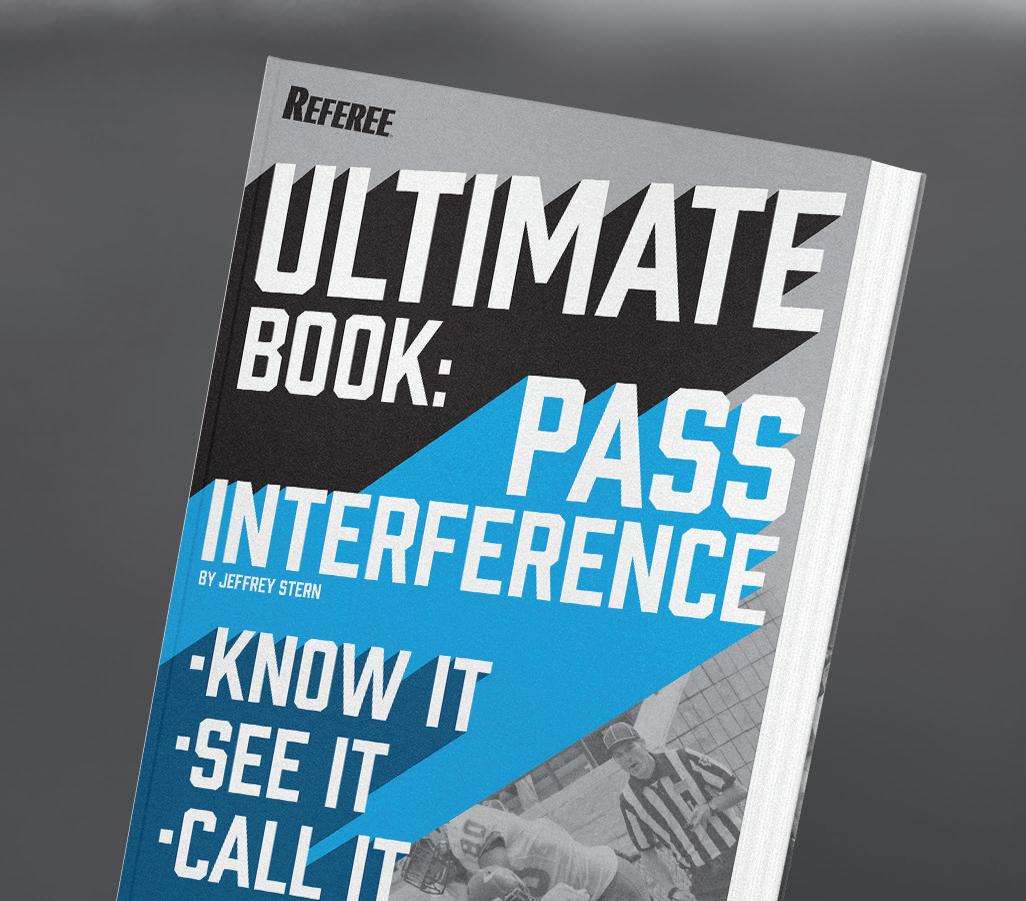





LEARN MORE STORE. /FOOTBALL



$1595

























5.5” x 8.5”
5.5” x 8.5”
$1595
$1595
5.5” x 8.5”
5.5” x 8.5”
$1595
Illegal Substitution
Play: Second and three for team A from its own 20 yardline. As the ball is being snapped, B12 realizes his team has too many players on the field. The situation has not been recognized by the officials. B12 attempts to run off the field to his own sideline, is on the field while the ball is live but does not participate in or influence the play. A1 carries the ball and is downed at team A’s 27 yardline. An official recognizes the situation and properly throws his flag. Ruling: Team B is guilty of a live-ball illegal substitution foul. Since the five-yard penalty is enforced from the previous spot, the penalty will likely be declined. It will be first and 10 for team A from its own 27 yardline (NFHS 3-7-4 Pen.; NCAA 3-5-2b Pen., AR 3-5-2 I).
Onside Kick
Play: K1 attempts an onside kick and kicks the ball on the ground toward the sideline. As R2 goes to recover the ball two yards in advance of his free-kick line, he is blocked by K3. R4 recovers the ball at the 50 yardline. Ruling: K3 is guilty of an illegal block. Team K players may not block an opponent until team K is eligible to touch the kick. In NFHS, the 10-yard penalty is enforced from the 50 yardline, the spot where the subsequent dead ball belongs to team R. The penalty in NCAA is five yards from the 50 yardline (NFHS 6-1-5, 9-3-8; NCAA 6-1-12 Pen.).
Numbering Exception
Play: Team K lines up in scrimmage kick formation. The line includes players numbered (from left) 85, 77, 33, 31, 64, 75 and 84. In the backfield, number 44 is in the deep position as the apparent punter, 30 is to the punter’s left and numbers 5 and 36 to the punter’s right. Which players are eligible receivers?
Ruling: Numbers 33 and 31 have eligible numbers but are being used as interior linemen under the numbering exception and are ineligible by position. The eligibles are numbers 85, 84, 30, 44, 5 and 36 (NFHS 7-2-5a Exc. 1, 7-5-6a; NCAA 7-1-4a-5, AR 1-4-2 I).
Chain Link: Working With the Crew on the Sideline
By Martin Cleypool
Football officials know how important the chain crew is to the game flow. A stellar chain crew helps make the officials look competent, while a careless crew can easily make officials look unprofessional and disorganized. NCAA chain crews usually have consistency in their members and often include individuals who have officiating experience at some level of the game. In the NCAA, both wing officials oversee the chain crew due to switching at halftime, a procedure now adopted by some high school associations. It’s beneficial if both wing officials are available to have a pregame meeting with the chain crew. This column will deal with NFHS chain crews.
The crew often includes community members, parents of players, school employees and occasionally players or students from the host school. They include those who’ve done many games, as well as first-time participants. More experienced
members can be cooperative listeners, or “do it my way” types. First-timers are often eager to learn but lacking in knowledge. In either case, good wing officials will take the initiative to get a sense of the crew and adjust the pregame meeting to ensure consistency and accuracy during the contest.
Wing officials should greet the chain crew long enough before game time to review expectations. For high school games, that should occur at least 30 minutes before kickoff or whenever the officials have assumed responsibility for the game. If the chain crew has not arrived, ask the PA announcer to have the chain crew report to the chains.
Make it a priority to tell all chain crew members how important they are and how they impact the overall image of the officials. Remind them, “You are assistant officials, not fans,” which goes a long way to earning their attention.
It is beneficial to start by having the chain crew members set the equipment as they would for a touchback. As that occurs, identify who will be on the

FOOTBALL 20 | REFEREE October 2023
CASEPLAYS VICTOR CALZADA
Wes Johnson, El Paso, Texas, signals the chain crew to move for a new series. Ensuring there are no flags on the field before having the chains move is crucial.
down box, the two markers and the clip. Setting the equipment identifies any issues and provides a chance to correct any that exist. Verify the chain is 10 yards long by stretching it between the 20 and 30 yardlines and is marked with tape halfway in between. Remind the clip operator the clip is placed on the back side of the appropriate five yardline closest to the back stake whenever a new series begins.
Setting the chains also provides visual training and often eliminates concerns with “rookie” chain crew members. If you feel you need to test less-experienced chain crews, you can ask them to reset the chain as if the ball had been punted and returned to a specific yardline, such as the 32 yardline. Allow the crew to reset the chain on their own. Review where the back stake and clip should be placed.
Reviewing with the down box operator the importance of delaying movement of the box can be a gamesaver. Tell that individual to scan the field for flags after a change of
possession. Urge them to inform you if they see a flag on the field when you’re saying move the box. That can prevent incorrect movement of the chains.
Instruct the down box operator and stake holders how you will mark the yardline with the heel of the foot in the direction the ball is going. Remind the crew to set the chains two yards off the sideline, at the back of the restricted area.
Remind the chain crew members they need to be attentive to their safety, as well as that of the players. Tell them to drop the stakes backward and get out of the way when action brings players close to the sideline.
Since the chains will not be set when there is a first down at or inside team B’s 10 yardline, the chains should be placed on the ground well off the sideline. One seemingly minor technique that makes a wing official superior is to supply the down box operator with a beanbag for firstand-goal situations. The bag can be dropped behind the box before the
snap. If the box operator needs to take evasive action to avoid contact with players, the previous spot can be recalled by going back to the beanbag. Advise the chain crew that once requested to reset the chains, their prompt and brisk movement can have a dramatic impact on game flow. Instruct the chain crew how measurements and end-of-quarter changeovers will be handled.
It is possible other officials have their own methods of accomplishing all that is addressed here. The most important points to cover are safety, proper movement, accuracy and professionalism.

Let them know they’re part of the crew and they are appreciated. Correct them when they’re wrong but praise them when they do a good job, and you’ll find you’re doing more praising than complaining.
Martin Cleypool is a high school football and basketball official. He lives in Alpharetta, Ga.
Whistle! Hold That
A player in possession of a live ball is not down until any part of his person other than a hand or foot touches the ground. Any official covering this play would need to hold the whistle to see what happens next.
The runner could roll off of this mini pile and land on a knee, elbow or other body part that would cause the ball to become dead.
The defender on the bottom of this configuration could conceivably reach up and grab the runner or some part of his uniform. If he had enough strength, the defender could pull the runner off from the top and have part of him touch the ground and end the play. Depending on how much momentum the runner had
built before landing in this position, the defender might be able to hold on long enough for the covering official to rule forward progress had been stopped. Those scenarios are possible but not probable.
The more likely outcomes are either the runner regains his balance and resumes his advance, or he is paused long enough for one of the upright defenders to come along and make a tackle.
Note the offensive player in the middle of the sandwich. His hands are on or near the ground and his arms aren’t encircling the opponent. Again, a photo is only a moment in time. But nothing here merits a flag for holding or illegal use of hands.

FOOTBALL 22 | REFEREE October 2023
GARVEY
DALE
Eight Overtime Points for You
The NFHS and NCAA have adopted procedures to determine a winner when regulation time ends in a tie. NFHS calls it the Recommended Resolving Tied Games Procedure. The NCAA calls it extra periods. Most people refer to it as overtime.
Regardless of terminology, here are eight things to remember when a game goes beyond the fourth quarter.
1. Timeouts. Each team receives one timeout for each overtime period.
2. Line-to-gain. In NFHS, the line-to-gain is always the goalline and cannot be altered by enforcement of any penalty. In NCAA, the rules regarding the line-to-gain in overtime are the same as they are in regulation play.
3. Carryover penalties. The spot from which the ball is first snapped in overtime is a succeeding spot from regulation play. Thus, a penalty for




a dead-ball foul after the end of the fourth period may carry over. That is significant because it will affect the choice of the team that wins the toss.
If the fouling team goes on offense first, it will have the ball first and goal on the 25 yardline in NFHS or first and 10 on the 40 yardline in NCAA. If the offended team starts on offense, it will get the ball first and goal on the five yardline in NFHS, or first and 10 on the 12-1/2 yardline in NCAA.
4. Possession by team B. In NFHS, the ball is dead whenever team B gains possession. In NCAA, the ball remains live when team B gains possession, so the defense has a much greater opportunity to score.
5. Winning score. If a touchdown is scored that determines the winner, the try is canceled.
NCAA has three distinct rules regarding scoring plays. If a

touchdown or a safety is scored by the defense on the first series of an overtime period, the game is over.
Beginning with the second overtime period, the try must be attempted for two points.
Also, beginning with the third extra period, a team’s possession series will be one play for a two-point try from the three yardline, unless relocated by penalty.
6. New series. In NCAA, when the ball remains live after team B gains possession, team A is not awarded a new series if it regains possession during a down.
7. Coin toss. There is only one coin toss, regardless of how many overtime periods are needed.
8.Both teams foul. In NCAA, if both teams foul during the down and team B did not foul before a change of possession, the fouls cancel and the down is not repeated.
YOUR KEY TO BETTER COVERAGES


$1595 only
HIGH SCHOOL FOOTBALL CREW OF 5 KEYS MAP
A fast way to easily identify the keys and determine coverages in a crew of 5. The convenient laminated map is perfect to use at home or to throw in your bag for easy pregame meetings with your crew.




GET YOURS TODAY STORE. /footBALL SIZE: 18”X16.5” 16 PANEL LAMINATED MAP
THREEDIMENSIONAL


















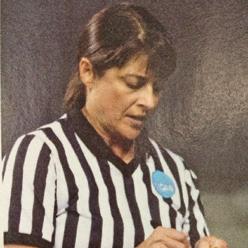
 BY RICK WOELFEL
BY RICK WOELFEL
24 | REFEREE October 2023 ALL PHOTOS COURTESY OF MARA WAGER
DIMENSIONAL T


osay Mara Wager is a busy woman is an understatement. If it’s a fall weekend, she’s likely working a women’s college volleyball tournament. If it’s a Thursday in January, she’s likely whistling a women’s college basketball game. When spring arrives, her attention turns to women’s lacrosse, where she’s working a college game or perhaps traveling to an international tournament.
It’s no secret working multiple sports requires a serious commitment of time and energy. Working three sports at the collegiate level requires an even greater level of commitment.
But Wager has been doing all this for nearly four decades now. She currently works Division I volleyball and lacrosse and Division III basketball (she previously worked Division I in that sport as well). She is regularly assigned to various NCAA tournaments and has been to final fours in all three sports (D-I in lacrosse and volleyball and D-III in basketball, lacrosse and volleyball).
Wager says her success stems in part from her ability to compartmentalize and concentrate on the task at hand.


“You walk in the door and it’s, ‘I’m here, this is what I have to focus on,’” she said. “This is what I need to do.”
For much of her officiating career, Wager balanced her officiating commitments with a career as an elementary school teacher. She retired from teaching fifth grade in the summer of 2018 after a 30-year career.




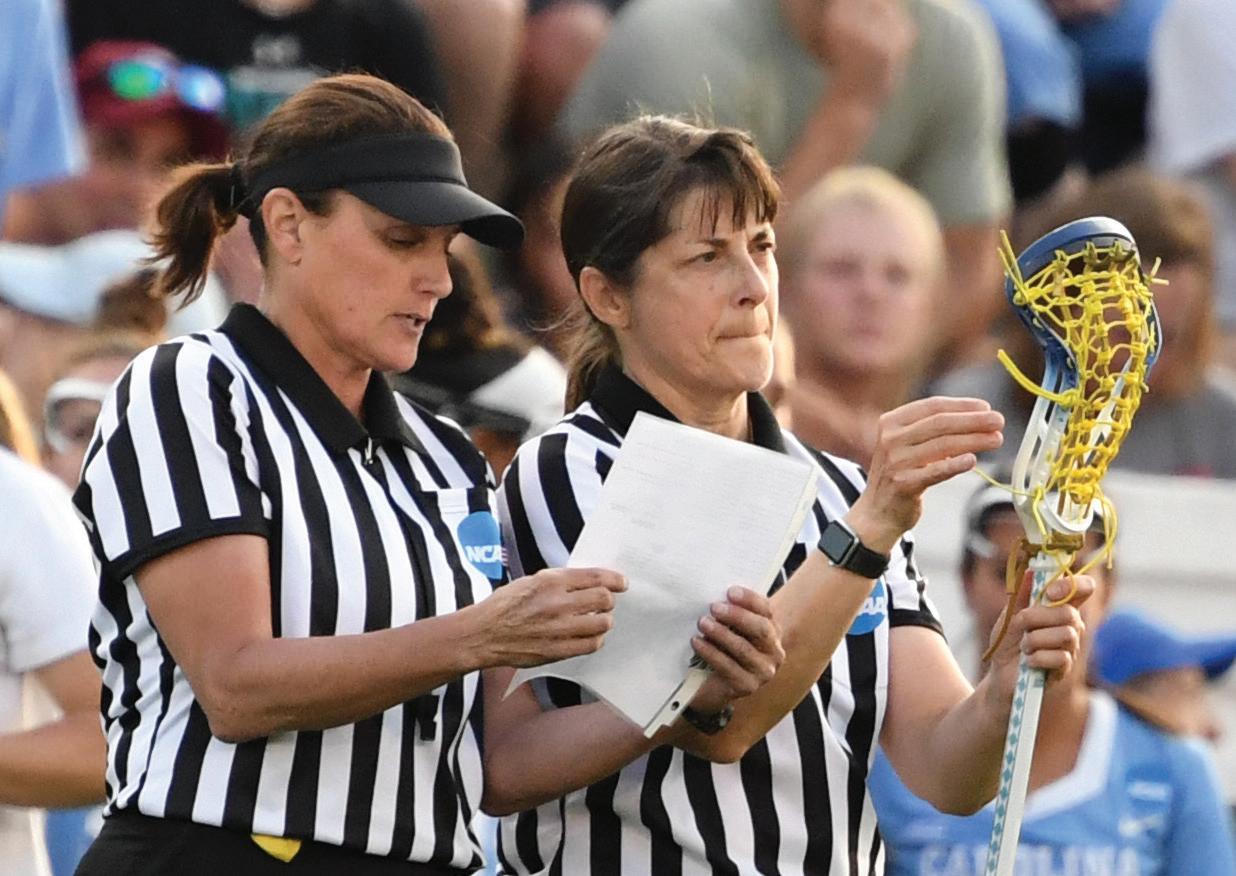
She was able to make it

REFEREE October 2023 | 25
WORKING AN NCAA FINAL FOUR IN ONE SPORT IS DIFFICULT. MARA WAGER HAS DONE IT IN THREE.
all work because her volleyball assignments were largely on weekends, while her basketball and lacrosse trips kept her close to home when necessary.
“I don’t know how I was able to do that for as long as I did,” she said, “but I just had that ability to kind of be in the here and now in terms of, it doesn’t matter where you came from or where you’re going. For two hours, you can do anything for two hours.”
Growing up in Troy, N.Y., Wager was an all-around athlete. She played four sports in high
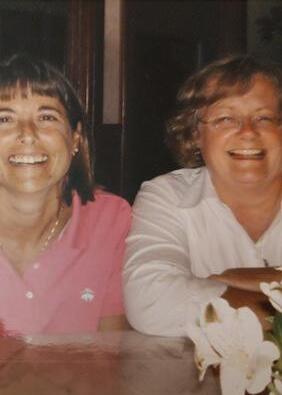
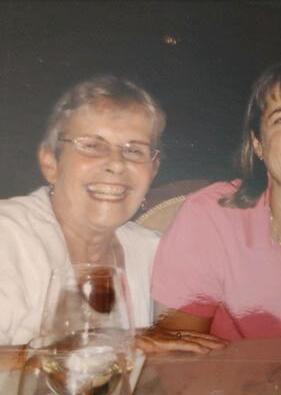
school and was also a skater and ski racer (today she is a certified skiing instructor).
For her and her siblings (an older sister and a younger brother), sports offered a refuge from a sometimes-difficult home life. Her father, who worked in a Ford factory, had issues with alcohol.
“Sports was one of those things in high school that kept me on the straight and narrow as a student-athlete, as well as my siblings,” she said, “and helped us kind of get through a rough patch.”
Today, Wager sees officiating as a vehicle for serving studentathletes who may be facing difficult circumstances of their own.
“There really have to be some other kids out there that sports are really that important to,” she said. “And to this day, that’s what I feel.”
Wager played volleyball at
what was then St. John Fisher College (now University) in Rochester, N.Y., at a time when the Association for Intercollegiate Athletics for Women (AIAW) was gradually ceding its control of women’s athletics. Her last two years of college, the school competed at the NAIA level and Wager was part of two teams that qualified for the NAIA national tournament.
Following graduation, she applied to the Peace Corps but wasn’t selected because she had never traveled outside the U.S. and did not speak a second language.
She returned to what had been a summer job at a community recreation center teaching swimming and water safety. She worked as a director at a day camp while also enrolling in graduate school.

Eventually, Wager parlayed a master’s degree into a career in education.
She took up officiating at the suggestion of one of her high school coaches. Naturally enough, she made her debut on the volleyball court. That experience whetted her appetite for more. At the time, girls’ volleyball in New York was a second-tier sport with a “mini-season” slotted between the traditional fall and winter seasons. Looking for additional officiating challenges, Wager turned her attention to football, which her brother had played in high school. After being encouraged to take an officiating class, she spent the next decade working high school games, primarily on the wings.
Even today, a woman in a striped shirt on a football field is not a common sight. When Wager was getting started in the sport, she was a rarity. But she says she always had the support of her crewmates.

“I rarely, if at any time, had any issues with any of the crews I worked with,” she recalls.
“(The schools) knew I was coming. There was always a separate locker room for me. My
26 | REFEREE October 2023
THREE-DIMENSIONAL
(Top, from left to right)
Mara Wager with her dad, Jim, brother, Jim and sister, Paula. (Bottom) Wager and partner, Shelley Maher. (Right) Wager, middle, with her mom, Phyllis, and sister, Paula.
association made sure of that. The assigner and any referee that I worked with — they went above and beyond.”
When Wager was getting started on the gridiron, one of her compatriots was John Soffey, who went on to become perhaps the premier collegiate referee in the East and later served as the coordinator of officials for the Big East.

“People revered him,” Wager said. “He was one of the finest officials I’d ever been in a room with and the Capital District Football Officials Association kind of took on that professionalism that John exuded.”
Wager’s appetite for officiating proved to be insatiable.
Over the years, she has worked no fewer than eight different sports — boys’ and girls’ volleyball, football, soccer, basketball, lacrosse, softball, track and tennis.
Her passion was fueled by her and her family’s interest in sports and the fact many of the people offering her encouragement and support were fellow educators, some of them her former teachers, who would encourage her to add another sport to her résumé.
“I think what really helped me was the variety of experiences,” Wager said. “I played high school soccer, so soccer came easily. My brother played football so I had some understanding of the game.
“Initially, it was my athletic background, my family’s participation in sports in general.
“The other interesting thing is a lot of officials, at the time I got into each and every sport, were principals, there were assistant superintendents. There were professional educators that were in the sports officiating world.”
As Wager climbed the ranks, however, decisions and tradeoffs had to be made. By 1993, she was working collegiate
volleyball, basketball and lacrosse. Three years later, she was handling D-I assignments in three sports while continuing to work high school football and continuing her teaching career.
Something had to give. Following the 1996 season, Wager stepped away from football, despite the fact she had been approached by the ECAC about working college games.
“I really loved volleyball,” she said, “and it was something that when I was in high school, helped keep me on track.
“I realized, when I started working collegiate volleyball, that I couldn’t work a Friday night (football) game and then turn up at Syracuse and work a volleyball tournament at the Division I level and have my act together. I couldn’t be the best that I needed to be. When my volleyball schedule started taking off, I gave up high school football. My volleyball career was taking off a little faster. I’m a bit of a perfectionist perhaps, and I just wanted to be the best I could be doing what I was doing.”
Today, Wager works D-I volleyball in the Big Ten, Big East, Atlantic 10, Ivy League and the Coastal Athletic Association (formerly the Colonial Athletic Association).
Working multiple sports requires spending time pouring over various rules codes and absorbing an assortment of casebooks and manuals. And Wager does additional juggling when seasons overlap; in late fall she might work volleyball and basketball the same week. In late winter/early spring she’s likely doing double duty with basketball and lacrosse.
But she is quick to point out many of the standards and practices that make for good officiating translate from sport to sport.
“Initially when I started working volleyball, the precision of the signals and the timing of the whistles would roll you into basketball,” she said. “And then the demands on the signals for women’s basketball in particular, in terms of describing the fouls and reporting to the table and the method of talking to the coaches, that was an easy rollover to lacrosse. More so than I really ever thought. Coming out of basketball, my whistle was very sharp because you’re making decisions on similar plays; block/charges, identifying defenses, man-to-man or zone.”
Whatever the sport, Wager, 60, makes it a point to maintain her fitness level, and notes it is particularly important in lacrosse.
“You really have to have it going on by lacrosse season,” she said, “because you’re only running 94 feet for basketball, whereas you’re running a football field and more for lacrosse.”
Wager’s colleagues are quick to point out she possesses intangibles that transcend rulebooks and manuals.
Mike Schmidt worked D-I basketball with Wager in the Patriot League, America East and the Big East. Today, he’s the coordinator for women’s basketball in the America East as well as the D-III Northeast Consortium and assigns Wager’s games; she has been a fixture in NCAA D-III for more than two
REFEREE October 2023 | 27
In 2019, Mara Wager was selected to work the NCAA D-I Women’s Lacrosse National Championship game. From left, Lynn Bowers, Wager, Melissa Coyne, Liz Brush and Ericka Leslie.
decades and worked the Final Four in 2014.
“As an official, she’s always got your back,” Schmidt said. “Especially in some of the environments we referee in, I think that’s certainly number one. You don’t have to worry about her taking care of her primary area.
“She certainly has a great feel for the game and is also a great decision-maker.
“I think she just naturally has that ‘It’ factor and has always had that ‘It’ factor. And I think the third area where she really excels is earning the trust and confidence of coaches with her communication style.”
Schmidt says Wager’s natural athleticism has been instrumental in her success.
“I think she’s a tremendous athlete,” he said. “That’s first and foremost. She can get up and down the floor. She’s always in the right position and that certainly helps her (credibility) with coaches.
“She has the ability to focus on her primary matchup but also
to be able to balance that with the big picture. I think that’s what probably helps her excel. She can kind of see plays develop and make decisions.
“Her mechanics have always been rock solid. And when you think about the mechanics and doing different sports, that’s not by accident. You have to spend some time in the book.”
“She has a no-nonsense kind of personality out there,” said Marcia Alterman, coordinator of volleyball officials for seven D-I conferences, including the Big Ten, AAC, Big East, Conference USA, MAC, Horizon League and the Missouri Valley. She notes Wager, who has worked an NCAA tournament match every year since 2007 (save for the pandemic year, 2020) and worked the D-I Final Four in 2013, has a communication style that might best be described as straightforward.
“She’s happy to explain if a coach deserves an explanation on a situation. But on the other hand, she suffers no fools and is able to manage crises very well because of that persona that says, ‘I’m not going to mess with you. I’m going to answer your questions, I’m going to give you your due regards,’” Alterman said. “She pulls that off because those characteristics have been developed by working multiple sports.”
It’s not uncommon for Alterman to pair Wager with a less-experienced partner.
“I have her mentor younger officials because she’s good in that role,” Alterman said. “But on the other hand, they need to come prepared. They need to come ready to be an open book and listen and pay attention.
“She’s not going to pamper or take it easy on anybody. She’s going to tell you pretty forthrightly what you did well and what you need to work on. That’s her persona. She’s not going to tell you you’re OK when you’re not.”
Wager also serves off the court. She was an at-large member of the PAVO Board of Directors from 2008-11 and today heads the organization’s National Rating Team, while also assigning officials for several D-III conferences.

“She’s extremely professional,” Katy Meyer, PAVO’s executive director, said. “She’s extremely rules knowledgeable.
“One of the things I think makes Mara great at what she does is she’s really smart and educated in the places she spends her time, whether that be in volleyball or lacrosse or basketball.
“She has an honest, and no-frills, presence. Mara keeps things very real. There’s no fluff when you’re interacting with her. You’re going to get her straightup opinion about something.”
But Meyer is quick to point out Wager has a knack for defusing a tense moment.
“Mara has a wonderful sense of humor,” she said, “and in a heartbeat can lighten a pretty heavy situation.”
Wager vociferously dismisses the notion that lacrosse is her primary sport. But she has had a decorated career on the field, both as a working official and a clinician.
She’s worked college games since 1990 and been assigned to the NCAA tournament at some level every year since 2000, save for 2020 when the postseason was
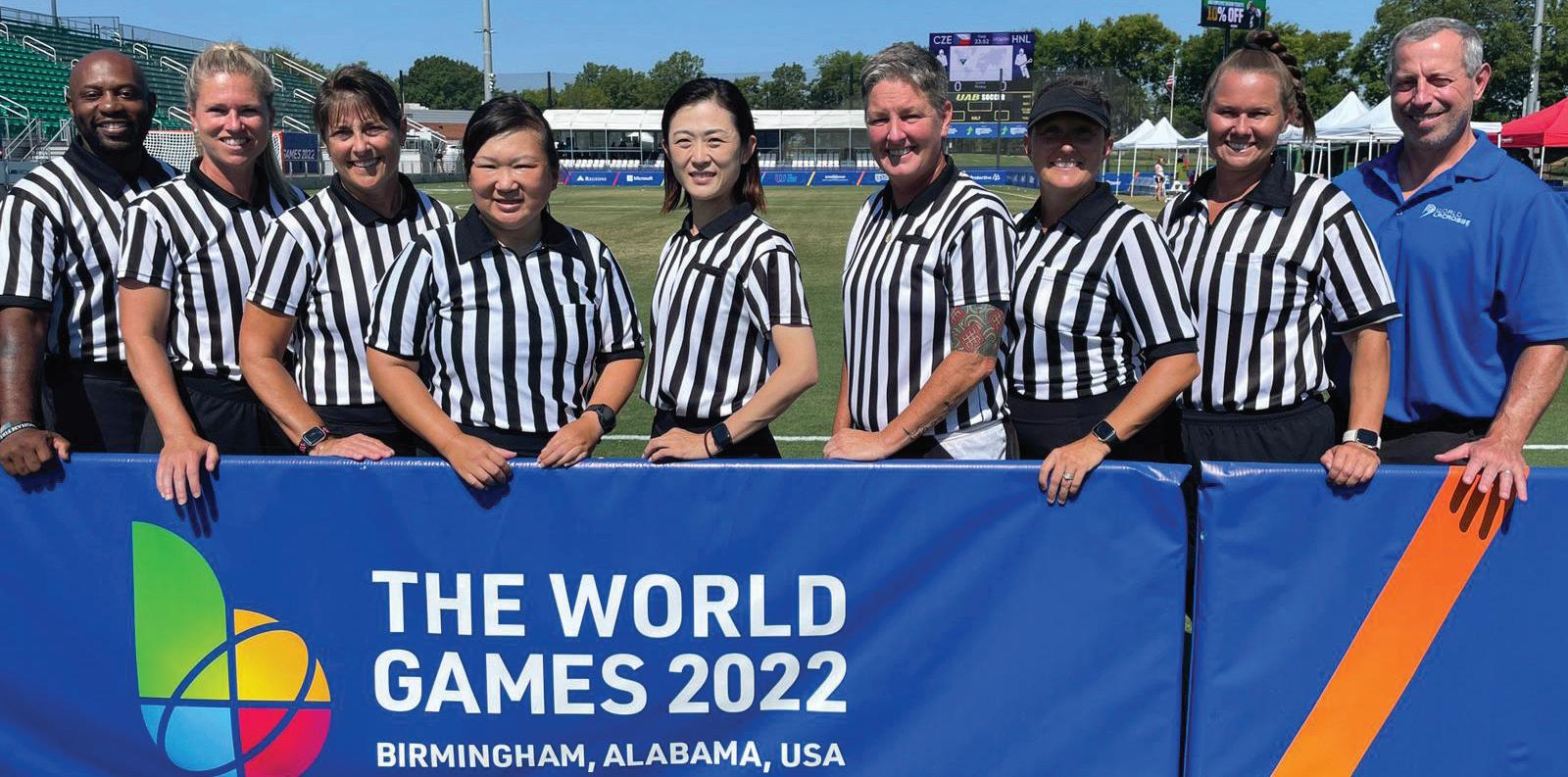
28 | REFEREE October 2023 THREE-DIMENSIONAL
(Top) Mara Wager was selected to work the 2022 World Games in lacrosse. From left: Anthony Lassiter (USA), Carolyn Toll (Canada), Wager, Sachi Goto (Japan), Yume Ueki (Japan), Jessica Lowrance (USA) and Mike Miller (USA). Wager was also selected to work the 2014 NCAA D-III Women’s Basketball National Final.
canceled due to the pandemic.
“The things I think that separate the good officials from the great ones is their ability to understand the game,” said Melissa Coyne, the national coordinator for NCAA women’s lacrosse. “They have a very high, what I call, Game IQ. It’s almost like they’re an extension of a player or coach on the field. They understand the nuances of what’s happening and they’re able to manage the game in a way that almost makes it seem like they’re not there. And (Wager) has a particularly great ability to do that.”
Wager says her success in lacrosse stems from having worked other sports.
“I attribute it to my experience in volleyball,” she said. “As an R2, working in the Power Five conferences, you have to be prepared for coach interaction.
“In basketball, when you go tableside to report, you have to be prepared to have conversations, answer questions and get right up in it when coaches are a little upset.
“My ability to convey my message with signals and whistles, that all came from experiences with volleyball and basketball.
“And I believe in my ability to communicate and say some very challenging and difficult things like, ’Hey coach we got that one wrong,’ and kind of facilitate conversations with people in the game.”
Even before she was certified by the Federation of International Lacrosse (now World Lacrosse) as an international umpire, Wager was traveling overseas and serving as an ambassador for the sport. Her first trip was to Prague in the Czech Republic in 1998.

“The 1998 European Championships were open to people who could travel,” she said. “I just fell in love with it. It was such a fantastic experience to get the cultural experience as well as the officiating camaraderie with people from other counties. We had people from all over.”
In the years that followed, Wager and her peers served as ambassadors for women’s lacrosse and were instrumental in getting the sport established in Continental Europe.
Wager said that experience gave her insight into how officials in America are developed and the advantages they enjoy.
“Officials can develop in the U.S. simply because of the number of games we’re exposed to in a given season,” she said. “In other countries, they don’t have the NCAA/collegiate system happening.
“They may have some university play and then the domestic competitions that are happening with their national teams. In Europe, they would have the European championships.”
Wager says other American officials stressed the importance of giving back and nurturing the international game.
“They really instilled in me that we are here to help people and to grow the game by sharing our knowledge and our experience,” she said.
North American officials would often bring extra uniforms with them when they traveled, since items like striped shirts
and whistles were sometimes difficult, if not impossible, to obtain elsewhere.
“They were very envious of our solid black running shoes,” Wager recalls.
Wager herself returned to Europe in 2000 to work the European Championships, this time in Glasgow, Scotland, and earned her international umpire’s certification. Since then, her travels as an umpire and clinician have taken her to Finland, Germany, Poland and New Zealand, as well as the lacrosse hotbeds of England, Scotland and Australia. She’s officiated at numerous international tournaments and even met her partner, Shelley Maher, through lacrosse.
In a sense, Wager has come full circle. The woman who once aspired to join the Peace Corps is today serving as an ambassador of a different sort and sharing her officiating expertise with colleagues from around the globe.
“There’s so much to learn from people that have been there and done that,” she said. “If you’re with them and pay attention to the nuances, how the system works, there are a lot of lessons in each sport.
“The climate and culture in volleyball is not the same as the climate and culture in basketball, and it’s not the same climate and culture in women’s lacrosse.
“Each one has its own climate and culture, and if you can listen more than you speak and learn from people’s experience and put your head down and work hard, it usually comes to you.”
Rick Woelfel, Philadelphia, is a freelance writer and softball
REFEREE October 2023 | 29
umpire.
Mara Wager had the opportunity to work lacrosse at the 2009 World Cup in Prague, Czech Republic.
“She’s not going to pamper or take it easy on anybody. She’s going to tell you pretty forthrightly what you did well, and what you need to work on. That’s her persona. She’s not going to tell you you’re OK when you’re not.”
–Marcia Alterman
SO MUCH TO DO, SO LITTLE TIME
R2s Must Remain Focused Between Points
By Rick Brown
Asecond referee’s (R2) duties are truly varied. There are many things the R2 should be doing between rallies such as scanning both sides for substitution and timeout requests, having awareness of a possible question based on observing the last rally, responding in a way that reflects listening skills, communicating with the table,
tracking both teams’ rotations, verifying setter positions (back-row awareness), ensuring the receiving team is properly aligned and providing information to the first referee (R1), either via headset or nonverbally.

Prematch Partnering Agreements
What the R1 needs from the R2 drives the discussion with a focus on the R2 providing informal help on
plays where the R1’s view is blocked, back-row/libero plays and the R1’s commitment to scanning both when info is needed and in response to R2’s movement away from the post and/or toward the court (important help). Often left unaddressed is an R2 being aware of needed help between the end of a rally with that last eye communication before service authorization.
VOLLEYBALL RULES, MECHANICS, PHILOSOPHY EDITOR: BRAD TITTRINGTON btittrington@referee.com 30 | REFEREE October 2023
HESTON QUAN
It is important for the second referee to make sure the table crew is ready before handing the court back to the first referee. Myles Furuya, La Palma, Calif., waits to get confirmation from the scorer that she is ready before he hands the court back.
Creating a Table Team
Success at the table is more likely when there’s an effective prematch discussion that supports quick processing of substitutions, readiness to play, timely communication of a scoring issue and tracker techniques. Proper attention early pays off during a match. The R2 builds the table team with kindness, sets expectations based on level of experience and helps recovery after mistakes. Discuss with the scorer the kind of information the R2 might request. For example, who’s the correct server? Or when I want to know a team’s current front row I’ll say, “Give me the next three servers on the right (or left).” For a full lineup check, I’ll say, “Give me the serving order for the team on the left/right starting with the last server, etc.” I will let the table know when each situation might be requested and that can assist with preventive officiating.
Centering Cements a Partnership

Every rally is an opportunity for partner connection, regardless of whether the R1 is looking for help and regardless of whether the referees are on headsets. Eye communication is supportive and affirms an R1 looking for partner help not just during a rally, but before the next serve. Game awareness frames what the R2 contributes as a partner based on what information the R1 needs between rallies.
Effective Scan



Maintaining parallel positioning facilitates awareness of requests by both teams. At the end of each rally, scanning ensures timely responses regardless of what a request involves while observing plays developing through the net promotes awareness of what the R1 called or passed on. It keeps the R2 focused on everything essential happening on and around the court. A proper scan utilizes free moments to track each team’s rotation, helping to ensure proper alignment awareness on both sides before the next service and knowing when the R1 needs help identifying if a setter is in the front or back row.
Alignment Awareness
The R2 must be aware before the start of the next rally whether each team’s setter is in the back or front row to be a good partner and ensure back-row plays are called correctly. An ability to track rotations helps determine player positioning issues at a relatively quick glance. This enables the R2 to offer needed informal communications to assist the R1 or give quick info if headsets are used, including the position of both setters before the rally.
Situational Awareness
Game awareness is built on knowing what just occurred during a rally and how effective positioning on the blocking side puts an R2 in a better position to address a coach’s predictable question regarding a play without assuming what a coach will say. Broadened court awareness means there should be few points in a match where an R2 does not understand a fault call or the R1’s angle for no-calls. Knowledge of the rules, especially those applied during each playing action, facilitates responding to coaches with appropriate rule language in support of partner decisions and lets a coach feel heard.
Listening Skills and Communication Awareness
Game awareness promotes empathic responses to understandable reactions. R2 training supports learning empathic listening skills to better understand a coach’s concern. A calm demeanor while listening first helps de-escalate a coach’s heated initial reaction. Selfawareness avoids creating discomfort during a discussion as the R2’s facial expressions, body language, personal distance and tone of voice affect the ability to restore relative calm. When it’s time to respond, the response is more likely to be successful allowing a quick return to play.
Timeout and Substitution Awareness
An aware R2 anticipates requests for a timeout — often predictable — as well as substitutions based on
DID YOU KNOW?
PAVO’s website now has a new volleyball official’s gear store. The store features the official certified volleyball shirts for men and women and features pants and the new official’s court bag to carry all your supplies and books. Go to pavo.org or to vbofficialsgear.com for more information.
QUICKTIP
When setting your personal officiating goals for the season, differentiate those that are in your control and those that are not. If your goal is getting a state playoff assignment — a worthy goal — remember there is only so much you control in reaching that goal. However, if your goal is to increase your concentration throughout the entire match, that is something you can control.
THEY SAID IT
“Now we have a chance to be on ABC showcasing our sport. This is awesome for women’s college volleyball to have the national championship match televised on ABC. It further demonstrates the growth of our game and the progress that has been made in the last few years in both attendance numbers and television ratings.”
— Nebraska head coach John Cook on the announcement the NCAA Women’s Volleyball National Championship is moving to Sunday afternoon from its traditional Saturday night time. The move allows the match to be shown on ABC in primetime. This year’s championship will be held in Tampa, Fla., Dec. 17, at 3 p.m. ET.
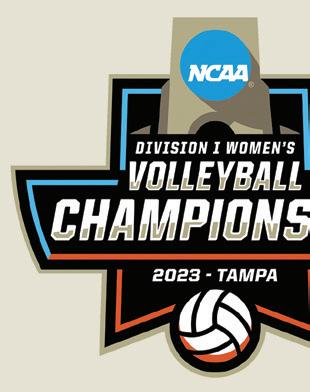

SOURCE: VOLLEYBALLMAG.COM
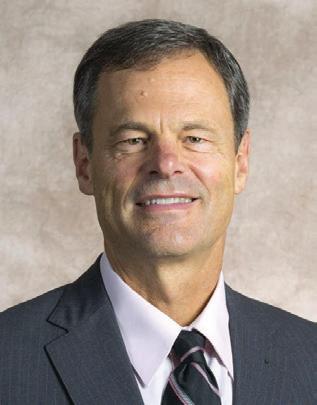
REFEREE October 2023 | 31
TEST YOURSELF
In each of the following you are given a situation and possible answer(s). You are to decide which answer(s) are correct for NFHS, NCAA or USAV rules, which might vary. Solutions: p. 85.
1. Team A designated A1 as the libero on the lineup sheet for the first and second sets but did not designate a libero on the lineup sheet for the third set. During a dead ball in the third set, A1 enters the court as the libero, replacing player A2. How should the officials handle this situation?
a. Team A cannot use a libero in this set, since no libero was designated on the lineup sheet. Team A should be assessed an unnecessary delay/delay sanction.
b. The libero can be added to the lineup at this point and no penalty is assessed.
c. Team A can add a libero after the set begins but will be charged with a timeout.
d. Team A can add a libero after the set begins but will be charged with a substitution.
2. Which of the following is/are not true regarding an exceptional substitution?
a. An exceptional substitution is counted as a team substitution, unless a team has exhausted its allotment of substitutions for the set.
b. A disqualified player may be replaced by exceptional substitution.
c. A player replaced by exceptional substitution may not return to that set/match (USAV).
d. The libero may be used as an exceptional substitute if no other starter or substitute is available.
3. Which of the following individuals can legally request a timeout?
a. Playing captain.
b. Head coach.
c. Assistant coach.
d. Both a and b.
e. All of the choices are correct.
4. Team A submits a lineup with No. 1 listed as a starting player. No player on team A is wearing No. 1. Team A is charged a substitution to correct the situation.
a. True.
b. False.
established subbing patterns. Efficient processing is facilitated by a prematch discussion and agreements for indicating readiness and identifying an issue. Understanding how each scorer records information is essential to resolving a scoring issue.
Working With the Table
Timely processing of substitutions entails a quick but effective discussion of how the scoresheet will be marked and getting the R2’s attention if an issue occurs. The R2’s expectations are part of setting a comfortable working relationship with the scorer and tracker. The R2’s ability to quickly analyze and resolve issues, whether involving paper or electronic scoring, will also keep a match on pace. With no “required” method for marking a scoresheet, prematch awareness of how the book will be marked is vital. This means an R2 has to become a scoresheet expert.
Turning It Back to the R1
A prematch agreement that cuts both ways is the R1 committing to last-second centering, ensuring R2 readiness and never authorizing service until seeing the R2 is in position on the receiving team’s side with whistle in mouth and scanning to see no requests in process. The flip side is the R2 not giving the court back until truly ready, including ensuring table readiness. The R2 is not ready if his or her scan is not finalized, especially taking a last look at both benches to verify no coach requests and no substitutes are moving toward the zone. The R2 should be back into proper position and have eye communication with the R1 and then give the court back. Rick Brown, Westerville, Ohio, is a longtime girls’ and boys’ high school volleyball referee, working 22 state tournaments. He is a state and local rules interpreter, USAV Regional Referee and formerly a PAVO National Line Judge, working multiple D-I postseason matches.
Give Coaches a Little TLC
By Brad Tittrington
It’s often said the most important thing in real estate is location, location, location. In volleyball officiating, the most important thing is communication, communication, communication. Referees who lack communication skills often do not have very successful, or very long, careers.
When it comes to communication, how and when we speak with coaches is extremely important. And the mantra I like to use when it comes to speaking with coaches is, “Show them TLC.” The TLC stands for Talk, Listen and Correct. Here is a breakdown of each of those principles and how referees should use those skills to facilitate a conversation and manage a match.
Talk
Talking to coaches is an acquired skill. It normally takes experience to
fully understand how and when to talk to coaches and isn’t something newer referees are equipped with right off the bat. Building rapport with coaches is essential in facilitating matches. This, however, does not mean referees should spend all match talking with coaches. There is a job to do and if too much time is spent talking to coaches, the focus needed to actually work the match is lost.
The first part of talking with coaches begins in the prematch. Depending on the level of play, the time allotted for pregame conversation with coaches varies. At the collegiate level, you have the most time. However, while working the travel circuit, you may only have a minute or two. High school matches are somewhere in between as states vary on their pregame match protocols. It is important in these prematch discussions to introduce yourself to both coaches, spend the same amount of time with both
VOLLEYBALL 32 | REFEREE October 2023
coaches and set the expectations for the match. Be wary how much time you spend with each coach to avoid any misperception about bias. Keep all conversation professional and start the match on a positive note. The last thing you want to do is start the prematch discussion with either a lengthy rules review or a cocky or condescending attitude. This will start the match in a very negative manner and will create a lot of issues as the match progresses. Instead, be cordial and friendly. Showing you are approachable sets a positive tone.
Once the match begins, the best referees know when to say something to a coach and when to remain quiet. Remember, silence can never be misquoted. However, there are times when talking to a coach can either defuse a situation or prevent a potential penalty. Communication will be extremely critical during the beginning parts of this season with the rule changes in high school. With the addition of the coaching zone




LEARN VOLLEYBALL RULES FAST & EASY





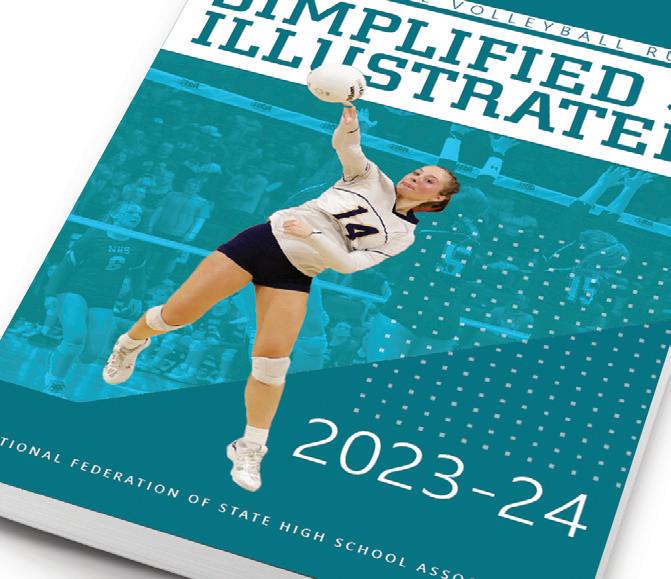



$1595 STORE. /VOLLEYBALL $350 192 Pages 5.5” x 8.5” 16 Pages 8” x 11”
Volleyball’s most complicated rules are explained in everyday language and reinforced with 100s of illustrations.
BOB MESSINA
Great communication skills are a must when it comes to handling coaches during a match. Wendell Mann, South Weber, Utah, calmly works with a coach to fix a substitution problem during a match.
CASEPLAYS
Toss for Service
Play: A1 tosses the ball for service. Realizing the toss is bad, A1 allows it to drop to the floor untouched. The first referee blows the whistle, awards a point to team B and signals a service fault. Ruling: Incorrect ruling per NFHS and USA Volleyball rules for 14-and-under competition. These codes allow a re-serve to be directed in this case (NFHS 8-1-6; USAV 12.4.4). Further, USAV rules for 14-and-under competition allow a re-serve for each authorized service (USAV 12.4.4d), while NFHS rules allow a re-serve only once per term of service (NFHS 8-2-5f). Correct ruling in NCAA and all other levels of USAV competition, as only one service toss is permitted for each service (NCAA 13.1.3.4; USAV 12.4.2). Therefore, allowing the ball to drop to the floor is a service fault.
Player Contacts Net

Play: At the end of a long rally, A1 is noticeably frustrated after attacking the ball out of bounds for the second time in a row. A1 grabs the bottom of the net and yanks on it in disgust. Ruling: It is critical for referees to maintain match control, using informal and formal methods. That control includes the conduct of the participants. Referees must learn to distinguish between conscious acts of unsporting conduct and emotional reactions. Dealing with a player’s misbehavior is situational, but as described, this scenario may not require the assessment of a formal conduct sanction (yellow card-warning). It all depends on the severity of the action and if there has been any potential unsporting conduct prior to this situation. It may be appropriate to remind the team’s captain that teammates must be under control. The referee might also use a quick tweet of the whistle to notify A1 that such actions are not appropriate. The assessment and level of conduct sanctions are at the referees’ discretion (NFHS 5-4-3c-19, 12-1, 12-2-9; NCAA 6.1.1; USAV 21.1-21.3).
definition and the allowance for an assistant coach to stand during dead-ball situations, it is important for referees to communicate with coaches if they wander outside the coaching zone or get too close to the court — potentially interfering with play or making it difficult for line judges to see a line. Early in the season, coaches may need a gentle reminder about the new rules. Instead of immediately penalizing coaches, use a dead-ball situation to remind coaches when and where they can stand. Preventive officiating will go a long way. However, if talking doesn’t solve the problem, move to “correct” the behavior, as outlined below.
Listen
In order to be a good communicator, you must be a good listener. Being a good listener means you understand the difference between listening and hearing. Hearing means you are just registering the words being said. Listening means you are paying close attention to what is being said and processing the message. This is often referred to as “active listening.” Too often, we focus on what we are going to say next and we simply
hear the words a coach is saying instead of listening to the message being delivered. This often leads to miscommunication and frustration. Coaches want to be heard. Simply listening to a coach vent and replying with a simple “I understand” or “I hear you” sends the message you are both approachable and empathetic. The one thing that will cause more issues in a match is when a coach doesn’t feel like a message is being heard. This doesn’t mean coaches have free rein to say and do as they please. It simply means we should allow coaches to speak to us if they have an issue and as long as they do it respectfully, we should be all ears. If a coach has a legitimate question or concern, we should have no issues listening. If a coach crosses the line and is disrespectful in delivering a message, then we must move to “correction.” The simplest way to illustrate this point is ignore comments (when possible), answer (legitimate) questions and penalize stupidity (egregious behavior).
Correct
When talking and listening to coaches doesn’t work to facilitate a match, we must move to the
Net (Re)Minder
On this type of play, both referees need to know if the setter is front row or back row. If she is front row, where she contacts the ball is not an issue. If she is back row, she may not contact the ball completely above the height of the net and complete an attack. It is important for the first referee to make a determination of the height of the ball at contact if this setter is back row, have a


VOLLEYBALL 34 | REFEREE October 2023
COURTESY OF MHSAA
correction phase. This is when we must penalize or sanction coaches for their behavior. When we have talked to coaches about staying in the coaching zone (NFHS) or when assistant coaches may stand and what they may question and those unofficial warnings have gone unheeded, we must correct the behavior by penalizing. Otherwise, coaches will never correct their behavior if there is no penalty. And it will make it harder on you in that particular match and more difficult on the next crew that has those coaches. Preventive officiating can only go so far. Remember, the first penalty (yellow card) is simply a warning. Do not be afraid to use that tool to correct or modify behavior. It is at our disposal for a reason. If you continue to talk to a coach about the same infraction and never move to a penalty, you are promoting that behavior. That which we permit, we promote and we become part of the problem instead of being part of the solution. Be careful of the reputation you acquire.
Brad Tittrington is an associate editor for Referee. He referees college and high school volleyball, umpires D-I softball and officiates women’s college and high school basketball and high school football.
5 MINUTES WITH BRIAN HEMELGARN
Residence: La Salle, Mich.
Experience: PAVO director of exams; Ohio Valley Region referees’ chair; FIVB, PAVO and USAV National referee; NCAA/ PAVO national clinician; Worked several women’s and men’s NCAA D-I National Championship finals.

REFEREE: Can you talk about how you came into the testing role?
HEMELGARN: Starting back 20-plus years ago, I was involved with USAV’s referee development program creating training materials, including rules exams. I also worked with the PAVO exam director, Ben Jordan, for several years as part of his exam review committee. He had been in volleyball leadership for many years and he was a great guy, and I learned a lot about that process. When he sadly passed away, Marcia Alterman, who was PAVO’s executive director, and Joan Powell, who was PAVO president, asked if I would take on those duties. It was an easy transition because I had already worked with Ben for several years. I have been in the position ever since.

REFEREE: What goes into exams?
patient whistle and see where the ball goes after it is set. It does not become an illegal back-row attack until the attack is completed. If it doesn’t end in a completed attack, no problem. If it does end up in a completed attack — and the first referee determines the ball was completely above the height of the net on contact — it is an illegal back-row attack in all codes (NFHS 9-5-4; NCAA 14.5.4.1; USAV 13.3.3).
HEMELGARN: Three things come into play for the creation of exam questions. The first one would be rules interpretations. For example, I will look at NCAA rules interpretation bulletins and see what case scenarios might make good exam questions. We also solicit our members every year in late fall and ask, “Hey, did you have anything interesting that happened on court that would make a good exam question?” We always get a couple of questions from that. The other source is through the NCAA volleyball committee via the national coordinator, and the volleybal rules committee via the secretary-rules editor. The committees will put out some points of emphasis they think are important for referees and I will take from that. And the volleyball championship committee, the ones responsible for the tournament, sometimes they will have something they would like addressed with the referees.
REFEREE: Officials complain tests are more English tests than rules tests. Can you talk about that balance?
HEMELGARN: Sometimes it’s
easier to use plain English instead of technical verbiage. We try to use the language referees use when they sit down after a match to hash things out. For example, instead of saying, “The player in position 2”, we’ll say, “The right-front player.” But sometimes we have to use technical rules verbiage because that’s the point we want to drive home — the wording of the rules.
REFEREE: Does it happen where referees struggle with a question and it is determined there is a rule issue?
HEMELGARN: Before it’s finalized, our exam question bank is reviewed by the NCAA secretary rules editor, who has been up until now Anne Pufahl and now will be Julie Voeck. Steve Thorpe, the NCAA national coordinator, is also a reviewer. They may take the exam results data and then report back to the Women’s Volleyball Rules Committee to say, “Hey, we might have something to look at here.” Or they may identify areas that should be addressed in a rules interpretation bulletin or in a future NCAA/PAVO national clinic module.
REFEREE: Is there something about testing you wish officials knew?
HEMELGARN: We tell them, we are not trying to create tricky questions. We really aren’t. Even though we state that every year, I get emails from referees that say, “This is a trick question. I answered this and the answer is this and I don’t understand why.” We really have worked over the past 10 years to keep simplifying (the exam wording). I would say there was a time some years ago that there probably were some questions that were tricky on purpose to make sure the referees were reading it clearly, but that’s not a good way to teach, to make sure people know the rules.

REFEREE October 2023 | 35
PAVO’s director of exams discusses role and testing process for referees.
COURTESY OF BRIAN HEMELGARN
HOW TO HANDLE CRITICISM
BY DR. JOEL FISH
YOU’RE
GONNA HEAR IT; DON’T LET IT AFFECT YOUR PERFORMANCE
As a sports official, you’re constantly getting criticism. After almost every call you make during a game, you’ll be challenged by players and coaches.The fans will also let you know immediately what they think. Sports officials have no home-court advantage. The



scrutiny is endless.Social media has significantly magnified the volume of criticism.Close to 90 percent of the feedback sports officials receive from players, coaches and fans will be negative.

The reality is, though, these sports official criticism trends are likely to get worse before they
hopefully get better.For example, social media and technology are getting more advanced. Therefore, as sports officials, there is a choice you can either get angry at the increased criticism, or without compromising your principles and integrity, learn to adapt and adjust to it.
What are some of the reasons for the increase in criticism toward sports officials from players, coaches and fans?First, social media and technology have made it so easy to voice an opinion without it having to be factually correct and without having to be accountable for what is written.
36 | REFEREE October 2023
Second, the pressure for coaches to win at all levels, from youth sports to the professional ranks, has become more intense. In our sports culture, 40 or 50 years ago there used to be more of a belief “it didn’t matter whether you won or lost, it was how you played the game.” Whether Vince Lombardi said it or not, our sports culture is now dominated by, “Winning isn’t everything; it’s the only thing.”
A third reason for the increase in criticism toward sports officials is in recent years parents feel they have more of a right to verbally attack sports officials under the guise of advocating for or supporting their children or team.
Finally, there has been a trend in our sports culture over the years that it’s becoming increasingly OK for fans to say things at a sporting event they would never say at work or in another social setting In fact, it’s been shown many of the most verbally abusive fans at sporting events are very civil and obedient in other social settings.
With all of this in mind, I would suggest the mental performance goal for sports officials is not to try to get rid of the negative criticism, as this is part of the avocation and is impossible to avoid. The emotions we often feel when criticized are not good or bad, right or wrong. Learning how to manage these emotions is what’s important. The challenge is how you respond to the criticism, to learn from it when appropriate and to keep the negative criticism from affecting your performance and tarnishing your motivation and standard of excellence.
FAIR AND UNFAIR CRITICISM
The ability to differentiate between fair criticism and unfair criticism is key toward how one listens to criticism and how one chooses to respond to criticism.
Fair criticism is designed to have logic behind it. It tends to include facts with the intent of helping you learn and improve.
Unfair criticism is personal and not factually based. It tends to focus on mistakes, without including corrective measures.
With that difference in mind, let's look at a game plan to deal with criticism and how to control what you can and let go of what you can't.
A SUGGESTED GAME PLAN TO DEAL WITH CRITICISM
Step 1 What are your own attitudes about winning, losing, success, failure, competition, criticism, etc.? Sometimes, the past history we have with criticism can impact how we respond to criticism in the present.
Step 2 Identify any patterns or specific situations that are mentally and emotionally challenging to you related to dealing with criticism — for example, does it depend on who gives you the criticism? Do you tend to respond differently if it is personal or professional criticism? Does it matter when and how the criticism is communicated to you? Are there certain players, coaches and fans who get to you more than others? If so, why?
Step 3 Practice self-evaluation and mental skills strategies to improve responding to criticism — the goal is to continue learning how to control your emotions in response to criticism, rather than your emotions controlling you.
CONTROLLING WHAT YOU CAN & LETTING GO OF WHAT YOU CAN’T
As a sports official, there are some things you can control and so much you can’t. For example, you can learn to train your mind to control your stress level and your thought process. You can’t control whether your travel is delayed, the weather conditions deteriorate or fan behavior worsens.
For each of the statements below, list all of the things that, as a sports official, are in your control and all of the things that are out of your control.
In
my control
• My thoughts and actions
• The goals I set
• What I give my energy to
• My boundaries
• How I speak to myself
• How I handle challenges
OUT OF my control
• The past
• The future
• The actions of others
• The opinions of others
• What happens around me
• How others care for themselves
Remember, “controlling what you can” is always a work in progress. In mental performance, the goal is always to build on one’s strengths and to develop a game plan to improve one step at a time in areas needing improvement.
REFEREE October 2023 | 37
CARIN GOODALL-GOSNELL (EFRAIN THOMAS, HAVELOCK, N.C.)
HOW TO HANDLE CRITICISM
INTERNAL VS. EXTERNAL CRITICISM
IDENTIFY YOUR FIVE CORE SPORTS OFFICIATING PRINCIPLES
For example: fairness, attention to detail, consistency, standard of excellence, teamwork. These principles can serve as anchors to help you evaluate your performance. Staying aligned with your core principles and maintaining integrity with your values will help you respond to external criticism in a more effective way.
SELF-EVALUATION & SELF-ASSESSMENT
When you learn how to objectively evaluate your own performance, it becomes easier to listen to and implement feedback from others. Officiating is a job that demands perfection, but if you’re a perfectionist, the job can burn you out. Evaluate each of your performances by listing three things you did well and then setting three goals for how to improve. Developing this habit can help with self-confidence, as well as developing an attitude of learning and improving.
Some of us can be our own harshest critics. Learn to apply the same standards to yourself as you would to others in evaluating your performance. Self-talk may include, “I’m a work in progress,” or, “I learn and improve each day,” or, “Tonight is another opportunity to apply what I learned from yesterday.”
BE AWARE OF DEFENSIVENESS
If you react negatively to criticism, step one is understanding the reasons the criticism bothers you. Defensiveness is when you find yourself debating the criticism, denying it or attacking the messenger. There are ways to disagree with criticism without responding in a defensive manner. Set boundaries for what is an appropriate way for players, coaches and fans to deliver criticism to you. When you are being criticized, try to maintain your composure in order to choose the response that is most appropriate.
BE MINDFUL OF FRUSTRATION & ANGER
In dealing with criticism, the most important emotions to learn how to manage include frustration and anger. What signals does your body give
to show you’re starting to get frustrated and angry? Do you start breathing heavily? Do you start becoming more easily distracted? Do you begin to communicate with players, coaches and fans with more of an edge? If so, try slowing down and taking a deep breath, which are good ways to keep frustration and anger from escalating.
COMMUNICATION OPTIONS FOR REACTING TO CRITICISM
Options include not responding, being assertive or being aggressive. You can choose to not say anything to criticism and walk away (not responding). You can choose to respond to criticism with “I” statements (assertive). For example: “I hear what you’re saying. This is how I saw it I feel differently.” You can choose to respond in a clear, high-volume way (aggressive). For example: “I hear what you’re saying. I’m moving on to the next play.”
DEVELOP A “THICKER SKIN”
A “thicker skin” may mean different things to different people. For some, it may mean walking away from a confrontation. For others, it may mean learning to let certain criticism go in one ear and out the other. A thicker skin often involves not taking criticism personally. Not all criticism requires the same response, or even a response at all. Learn to identify what are big issues (mountain issues) that require a response and what are small issues (molehill issues) that do not require a response.
USE OTHER SPORTS OFFICIALS AS A RESOURCE
Identify someone you can trust to talk about what happened during games
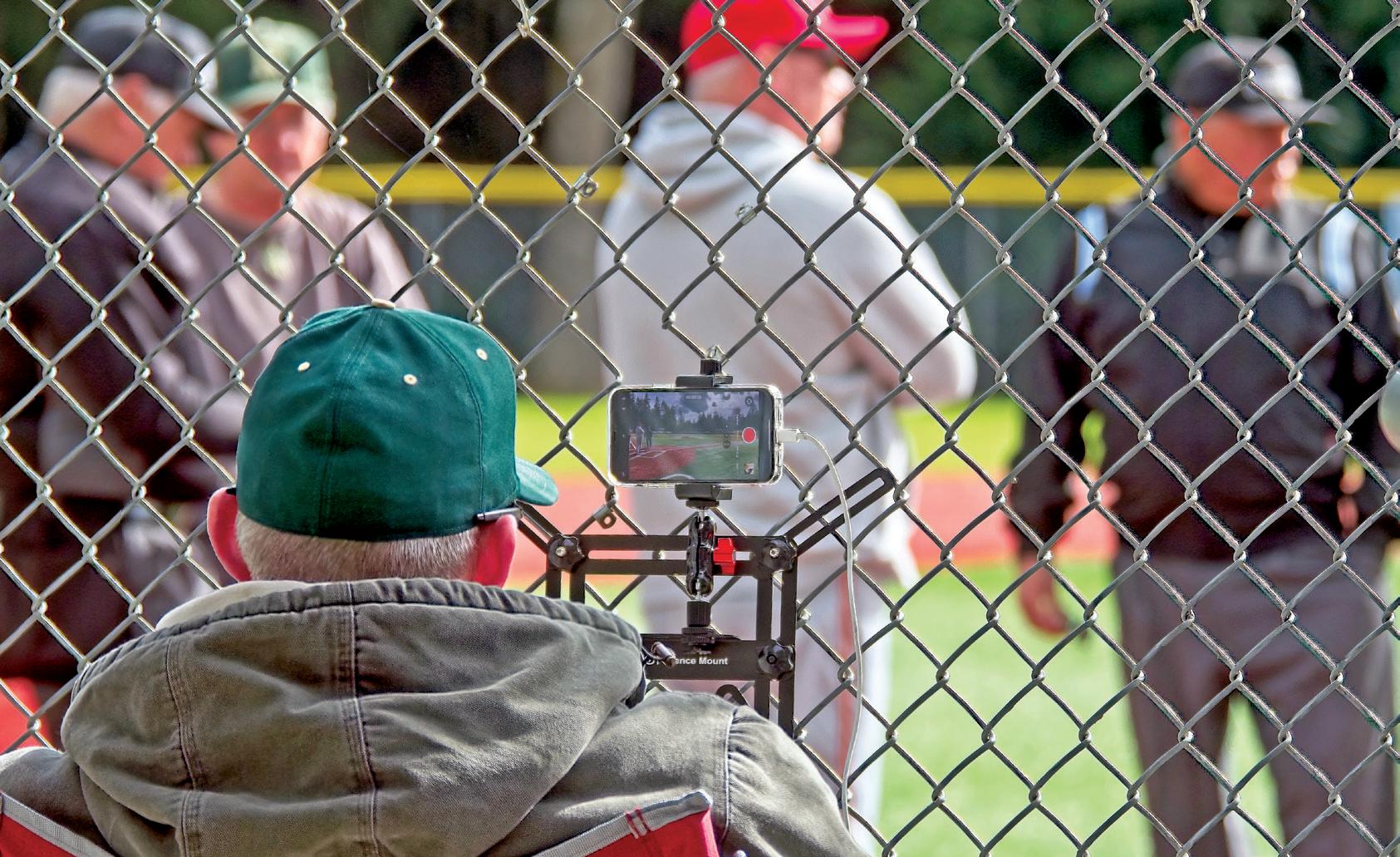 DALE GARVEY (BASEBALL: TERRY GRANILLO, NORTH BEND, WASH.; FOOTBALL: FROM LEFT, BOBBY BEAULAC, AUBURN, WASH., KEITH SMITH, LYNNWOOD, WASH.)
DALE GARVEY (BASEBALL: TERRY GRANILLO, NORTH BEND, WASH.; FOOTBALL: FROM LEFT, BOBBY BEAULAC, AUBURN, WASH., KEITH SMITH, LYNNWOOD, WASH.)
1 3 2 4 5 6 7 8
13 PRACTICAL STEPS TO EFFECTIVELY DEAL WITH CRITICISM FROM PLAYERS, COACHES & FANS
Today’s technology makes it easier than ever for people to record games and criticize officials online.
you officiated — “What would you have done in this situation?” or, “Give me honest feedback about what you’re observing about my performance.” Peers can offer you perspective, a voice of reason and share with you their how-tos for dealing with criticism.
UTILIZE FREE TIME PRODUCTIVELY
Dwelling on your mistakes in your free time can be like a snowball going down a hill. The mistakes can get bigger and bigger in your mind. Continue to find productive ways to use your free time that have nothing to do with sports officiating. Exercise, reading and relaxation techniques can all help quiet the mind. Getting out of the house, taking a walk or putting yourself in another environment can help clear the mind.
LIMIT SOCIAL MEDIA
There’s so much criticism and noise out there from social media. Officials in all sports and at all levels say limiting social media — or staying off of social media completely — is a key to effectively dealing with criticism.
DEVELOP HEALTHY (VS. UNHEALTHY) COPING MECHANISMS
Criticism can increase stress and chip away at an official’s confidence, self-esteem and self-image. Healthy coping mechanisms to deal with the emotions related to criticism include learning to talk about these emotions, proper nutrition and getting adequate amounts of rest and sleep. Unhealthy coping mechanisms would include eating too much, drinking alcohol excessively and becoming more socially isolated.
CREW DYNAMICS & DEALING WITH CRITICISM
Whoever you’re working with at a particular game, try to create an environment in which an official can be open about expressing feelings of anxiety, frustration, anger, etc. In this way, your fellow officials can help one another in dealing with their emotions, as well as criticism from players, coaches and fans.
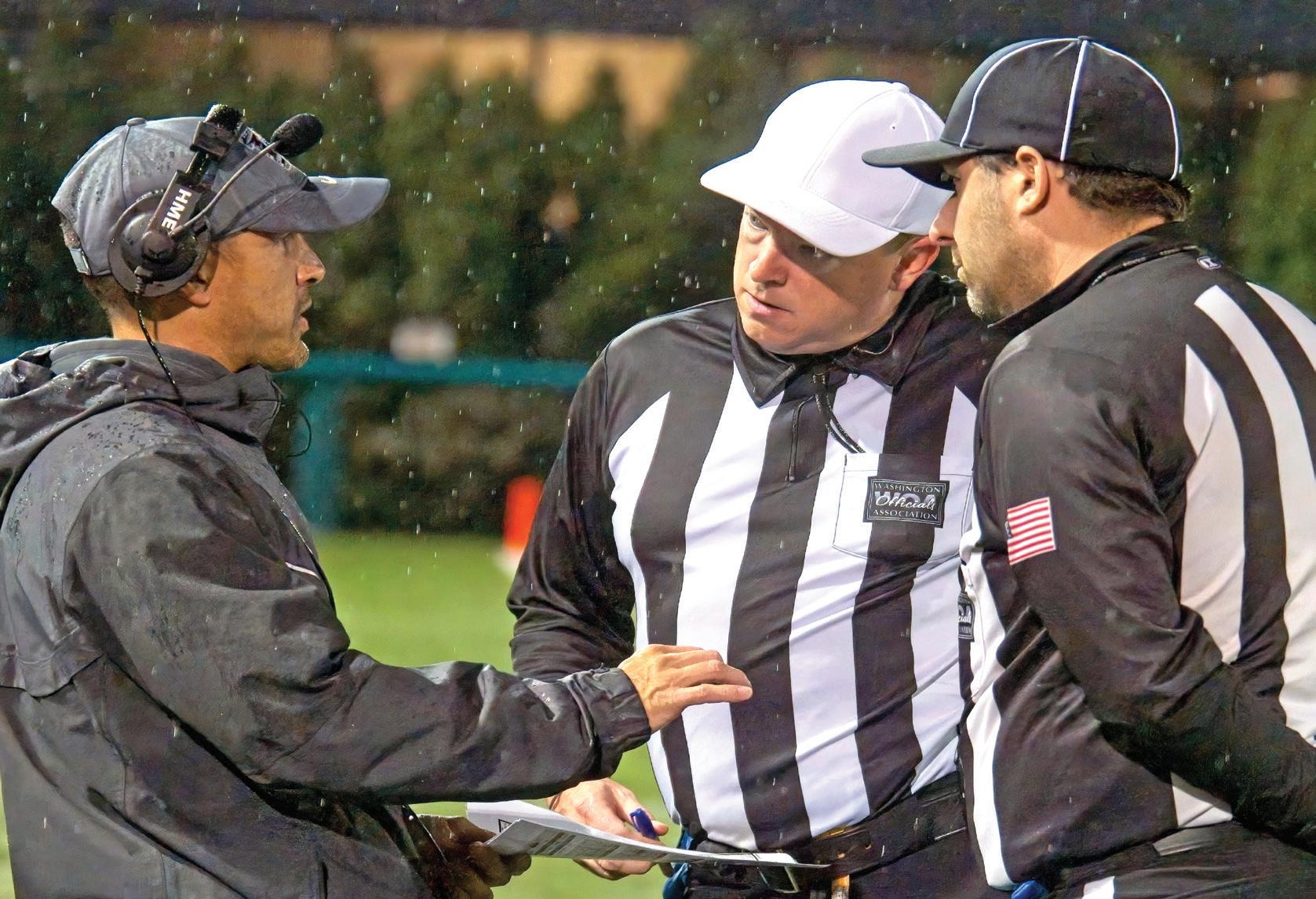
PRACTICE MENTAL SKILLS TRAINING
Practice relaxation, focusing, mental preparation, positive self-talk, mindfulness, pressure performance and visualization techniques on a regular basis as a way to effectively deal with criticism. Utilize apps to incorporate exercises, strategies and techniques to improve mental performance.
Joel Fish, Ph.D., is a sport psychologist and licensed psychologist, who is the director of the Center for Sport Psychology in Philadelphia. He has given professional development presentations to and developed programs for numerous local, state and national sports officials organizations.
MENTAL SKILLS TRAINING STRATEGIES
Teamwork
Crew members may not realize they’re stressing about criticism they have received, on or off the playing field. Help those crew members by saying something before, during or after a game that helps them recognize what’s going on, to move on and to let go of the criticism.
Mindset
Develop a thought process for dealing with criticism. For example, as part of your mental preparation for a game, say to yourself: “No one can get in my gut and force my blood pressure to go up. No one can get in my head and force me to think negatively. I have control over what I feel and what I think.”
Positive Self-Talk
An example of positive self-talk during a game includes, “Trust myself, trust my preparation, give me the courage to do the best I can do.”
REFEREE October 2023 | 39
9 10 11 12 13
The right mindset will help officials deal with the criticism that inevitably comes with the avocation.
THE MENTOR SHIP Chart a Course to Strong Relationships
By Karen Swanner
s some soccer officials age out of a role they have enjoyed most of their lives and newer officials embark on their journeys into that role, what can be done to keep both our experienced and less experienced officials involved in the game? Retaining the honed skills

A
of officials who have dedicated a significant portion of their lives to a game they love is a key component in the future of the sport of soccer. Yet recruiting and retaining new officials, who are facing unknown demands head on, is equally challenging.
Job retention is a result of personal enjoyment, and many
soccer officials are inspired to be part of this “brotherhood” because of their love and passion for the game. Being yelled at for 90 minutes is not typically everyone’s perception of “fun.” However creating camaraderie, either through organizations, small groups, or oneon-one relationships, where officials can share stories, laugh about their
40 | REFEREE October 2023 COORDINATOR: JOHN VAN DE VAARST jvandevaarst@referee.com SOCCER RULES, MECHANICS, PHILOSOPHY
HESTON QUAN
From left, Magic Berenji, Irvine, Calif., Danny Curry, Newport, Calif., and Timothy Wrubel, Costa Mesa, Calif., share a bonding moment during a match. Opening yourself up and sharing some personality in a safe setting can help build foundational relationships with other officials.
onfield experiences, learn from each other and feel a sense of security and support, are key components of retention.
While organizations all over the country work hard to provide programming for their officials, there is a second piece that research shows can help keep referees in the game. That piece is mentorship, the ultimate learning tool and a key component to success and longevity.
There is not a one-size-fits-all for a mentor/mentee relationship; it can take numerous forms, depending on the individuals involved. Mentorship is as important for veteran referees as it is for newer officials. Utilizing the skills of veteran officials, who may not want to be on the field as much as they used to, is a way to keep those officials actively in the game. For newer referees, research shows that if a soccer referee has a mentor for the first 3-4 years of their career, they will most likely stay in the game.
“The improvement of any referee is greatly impacted by how often he or she can receive feedback,” college and high school referee John Bouc said. “Assessment is one tool to receive feedback, but it has many limitations. The assessor may hardly know the referee and it becomes a pressure situation with lots of critiques, and the official worrying about the consequences of the assessor’s report.
“Mentorship is the best of all worlds,” Bouc said. “It is a secure, non-judgmental, no test grade, no pressure relationship, where the mentor and mentee know each other and the focus is on personal development.”

Joe Heyden, National Emeritus Referee and president of the Southern Illinois Soccer Officials Association, echoed Bouc’s response. “The key to a good mentoring program is that it must be in a safe and comfortable environment to facilitate learning,” Heyden said.
“It is always easier to talk to a ‘friend’ when you have questions or something that you are embarrassed to ask about in a formal group

setting, for fear you will be judged as weak or uninformed.
“The ability to have a respected or experienced referee to talk with in a safe environment facilitates learning by eliminating the fear of questions or negative feedback. Open conversations allow for mental and physical growth, by offering comfort in the discussions. It is not about being right or wrong, its about getting answers that can help you progress in your career as a referee.”
While one of the biggest advantages of a mentor program is referee retention, there are so many other important things that learning from your peers can offer to officials. After all they have “been there and done that.”
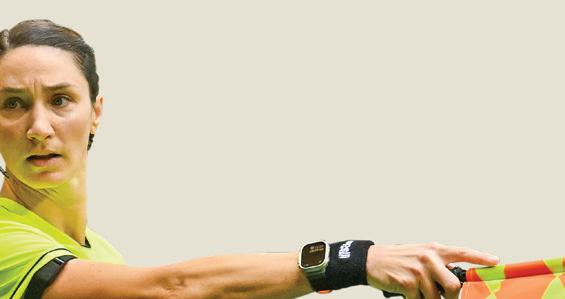
Things like providing fellowship, understanding the soccer culture, building confidence, staying motivated, proper mechanics and protocols, assisting with knowledge and interpretation of the rules, effective communication with players, coaches and crew, stress management, enhanced field presence, listening skills, effective preparation for unusual situations and overall better game management.
Mentors can see where we need improvement where we might not recognize it. Mentors can keep us motivated by offering words of encouragement when they know we need it the most. Mentors can be sounding boards when your family and friends don’t understand what you are talking about.
The biggest advantage is that mentors are free and can help stop newer referees from making rookie mistakes and dealing with the consequences.

A key component when forming a mentor/mentee relationship is to remember the mentor is there to listen and help the mentee grow. If you are an experienced referee and want to give something back through a mentorship, there are some things to be considered. For example, do you really have time to dedicate to being a mentor? Are you accessible and can you maintain a consistent relationship with your
QUICKTIP
The number of substitutes is unlimited in youth and high school games. If there are a large number of substitutes, especially if both teams are substituting, make sure you count the number of players on both teams before the restart. This will avoid future problems of too many players on the field.

THEY SAID IT
“When do most of the red cards happen? The end of the first half, the end of the second half and that’s when people are tired. And when you are tired, the blood goes to your legs, not to your brain, and referees have to make decisions the whole 90 minutes, the whole 120 minutes. We really have to train beyond the limits of the game in order to have a match official prepared and not lose the ability (for) further decisionmaking.”
Kari Seitz, FIFA Head of Refereeing, Women
SOURCE: THE ATHLETIC
SIDELINE
—

U.S. Officials Assigned to CONCACAF Gold Cup
Twelve U.S. officials were among the 60 assigned to the 2023 CONCACAF Gold Cup.
Those assigned include:



Referees: Joe Dickerson, Rubiel Vazquez and Armando Villarreal.
Assistant referees: Kyle Atkins, Logan Brown, Corey Parker, Kathryn Nesbitt and Cory Richardson.

Video assistant referees: Allen Chapman, Tim Ford, Edvin Jurisevic and Chris Penso.
This was the Gold Cup debut for Dickerson and Richardson. Villarreal, Atkins, Nesbitt and Parker represented the U.S. during 2022 FIFA World Cup in Qatar. Nesbitt was one of only three female officials selected for
this year’s Gold Cup. She was also selected to work the 2023 FIFA Women’s World Cup.
Kathryn Nesbitt
RICH VON BIBERSTEIN/ICON SPORTSWIRE/NEWSCOM
|
TEST YOURSELF
In each of the following, decide which answer or answers are correct for NFHS, NCAA or IFAB rules/Laws. Solutions: p. 85
1. B1 has been previously cautioned during the match. A2 has the ball and B1 holds the shirt of A2. A2 breaks free and continues to move forward.
a. Stop play and award a direct free kick for team A.
b. Allow the advantage and at the next stoppage display a yellow and then a red card to B1.
c. Stop play and display a red card to B1.
2. A1 is legally challenged by B2 close to the penalty area and the referee allows play to continue. A substituted player present in the technical area protests this decision without entering the field and interfering with play.
a. Stop play, caution the substitute and restart with an indirect free kick for team A at the point the ball was when play was stopped.
b. Stop play, eject the substitute for the comment and restart with a drop ball.
c. Caution the substitute player for the comment at the next stoppage.
3. An indirect free kick is awarded to team A just behind the penalty spot. The referee has a hand above the head to clearly signal an indirect free kick. A1 takes the kick and when it is about to directly enter the goal, B2 raises a hand and stops the shot.
a. Caution B2 for handling the ball and award a penalty kick.
b. Eject B2 for DOGSO.
c. Rekick.
4. B1 is moving back toward team B’s goal with the ball. B1 passes the ball toward the side of the goal to give the impression it is not a pass back to the goalkeeper. The goalkeeper moves to the ball and picks it up with the hands.
a. This is a legal play.
b. Stop play and award an indirect free kick for team A.
c. Stop play, caution B1 and award an indirect free kick for team A.
mentee? Do you have the knowledge and experience to help your mentee grow and develop? Are you open to mentoring anyone who needs help, or do you only want to work with specific referees? Do you set a good example yourself as an official? And are you a role model for what an official aspires to become?
If you are a mentee, make sure you clearly establish what you would like to get out of this relationship and follow the guidelines you have mutually agreed upon. Things like checking in at a prescheduled time, being prepared when it is time to talk, humbly accepting their input and never “blowing your mentor off.” Their time is as valuable as yours.
Since many organizations do consistent training on the tangible side of the game, like rules and rule interpretations, how assigning works and proper mechanics, when working with a mentor, it might be a good idea to focus on the intangible side of the game. Ask your mentor how they handle stress, pressure and controversy during a game; how they deal with a problem player, coach or even crew member; how they stay motivated; how they communicate during pregame, the game itself, halftime and postgame; how positioning assists with effective game control; how they work with their crew; what is the proper time to show up for a game and what is the necessary equipment to bring; and most importantly, what do they do that has helped them to effectively manage their games for
the number of years they have been in the sport.
According to St. Louis high school soccer referee Dave Hubeli, one of the most effective tools for him and his mentor Tim Lammering has been their discussions and reviews of both Hubeli and Lammering’s games. “I have gone to watch three or four of Tim’s games and he has included me in his pregame, halftime and postgame discussions,” Hubeli said. “After Tim officiated a state playoff game that I watched, he called me on his way home to see what I thought and asked me if I had any questions or feedback. That really meant a lot to me.
“Having Tim as my mentor has been such an incredible learning tool for me. I’ve learned so much from him through a combination of discussing our games and observing him officiate.”
While the concept of a mentor/ mentee relationship focuses around a more experienced official helping newer officials, mentorship can be beneficial to everyone involved. It is truly about an exchange of ideas, a platform for growth, trust, support, acceptance, camaraderie, learning from your peers and a place where you belong.
Karen M. Swanner, Maryville, Ill., officiated men’s professional soccer. She is a NISOA National Referee Emeritus. Swanner has master’s degrees in journalism and kinesiology, specializing in sports psychology and is a member of the Association of Applied Sports Psychologists.
AR = A First Class Assignment
By Marc Block
While it is the exception to the rule, some soccer officials feel when they are assigned as an assistant referee, it is a secondclass assignment. Nothing could be
further from the truth. The assistant referee plays a major role in the referee team and must be ready to deal with a variety of situations and make on-the-spot decisions. The assistant referee must be physically fit to keep up with play and always
42 | REFEREE October 2023 SOCCER
be in the right position to signal for offside, a foul or the ball out of play. While they are there to assist, not insist on decisions, they make decisions that have a tremendous bearing on the match.
The assistant referee is normally in direct line with the second-tothe-last defender. Remember, while the goalkeeper is normally one of the last two defenders, this is not always the case. The assistant referee must pay attention to the positioning of the defense at all times. An exception to being even to the second-to-the-last defender is when the defense crosses the halfway line into the attack zone. In this instance the assistant referee stops at the halfway line. Another instance is when the ball is ahead of the second-to-the-last defender. Then you must stay even with the ball and follow it all the way to the goalline if necessary. It is critical for you to sprint to keep up with the play. The one time in the match the assistant referee slows down is when the goalkeeper misplays the ball and there will be no way to properly determine if the ball wholly crossed the goalline for a goal. This one play can ruin a great match.
Let’s take a look at five tips that will aid in making you an excellent assistant referee.
1.Practice the skills of an assistant referee.
As the assistant referee, you should always have the flag on the field side of play. The first skill is to practice switching hands while moving up and down the field without dropping the flag. Also, when stationary the flag should be in the middle of the body so it will be easy to place it in the proper hand when you start running.

The next skill to learn is to keep the flag at the side and not use the “flag hand” to pump up and down as one would normally do when running. You must be able to side step in either direction so you are moving with the second-to-the-last defender. During this time the flag should be in both hands so you’re
ready to put it in the hand on the field side when you turn to run. Practicing this technique will make it easy to do during game situations.
The proper mechanics of using the flag to signal the referee will make an assistant referee look very professional. You must be able to master all the signals and techniques. Practicing each signal so it becomes second nature is extremely important.
Here are two examples of proper flag techniques. When signaling for a throw-in, you should hold the flag so the index finger is an extension of the flag. This will let the referee know if the flag is at a 45-degree angle and not behind the shoulder and giving the appearance of throwing an ax.
Offside is raising the flag straight up to get the referee’s attention. A foul signal is straight up and a wiggle of the flag. The flag must not wiggle when signaling offside, which will confuse the referee.
The next area you must learn are the silent signals between the
referee and the assistant referee that take place during the match. These may change from match to match and should be talked about in detail during the pregame discussion. The only signals to be used are those agreed to before the match. There should be no surprises.
2.Offside is always the number one priority.
Why? This is the call referees have the least ability to make on their own. You are in direct line with the play and have the best view to make the decision.
Remember attacking players are only offside if they are interfering with play or gaining an advantage by being in the position. Delay the call until you are sure one of these two criteria are satisfied. An early flag that is recognized by the referee may cause an inaccurate decision and stop a promising attack or even a goal-scoring opportunity.
Once the signal for offside is given, you should keep the flag up until the referee recognizes it, waves
BOB MESSINA REFEREE October 2023 | 43
Morey Manghan of Logal, Utah, keeps the flag down and on the field side of play while moving. These are two key mechanics used while working to remain in a good position in addition to providing important visual cues for the referee. Practice signaling and switching flag hands to elevate your assistant referee skills.
CASEPLAYS
Two Saves
Play: Goalkeeper B1 stops a shot with the feet and dribbles to the front corner of the penalty area. B1 picks up the ball and punts it. A strong wind blows the ball back over B1’s head. B1 turns and catches the ball to prevent it from going over the goalline for a corner kick. Ruling: Award an indirect free kick for team A at the point the ball was caught by B1. B1 is not ejected for denying a goal-scoring opportunity since the ball was not heading toward the goal at the time of the second possession (NFHS 12-8-5; NCAA 12.3.2; IFAB 12.2).
Attacking Tug
Play: A1 has possession of the ball and is being closely marked by B2. A1 grabs B2’s shirt so B2 cannot move around to challenge for the ball. B2 trips A1 while trying to move for the ball. Ruling: The referee should stop play and award a direct free kick for team B despite A1 having the ball. Holding the shirt was the first foul and that is what is to be penalized (NFHS 12-4-1; NCAA 12.1.9; IFAB 12.1).
Post Position
Play: During play, players make contact with the goalpost and it moves behind the goalline. A1 shoots and the ball passes over the goalline but does not pass the goalpost because the post was not in the proper position. Ruling: Goal. The goalpost is to be assumed to be in the proper position. The post should be moved back, if possible, before play is restarted after the goal is awarded (NFHS 1-4-1 Situation D or SD; NCAA 10.1; IFAB 10.1).
Late Arrivals
Play: Team A has seven players to start the match. During the course of play, the remainder of the players arrive at the site and the coach has them ready to enter the match. Ruling: The remainder of the players may enter the match at the next stoppage as long as the referee is satisfied they are legal and properly equipped (NFHS 3-1-3 Situation B or SB; NCAA 3.1; IFAB 3.1).
the signal down or, if the referee does not see the signal, remain that way until the defense takes control of the ball.
3.Signal for the ball out of play. The assistant referee has the best angle, looking down the touchline or across the goalline. The assistant referee can normally clearly see if the ball wholly crosses the boundary line. This does become harder when you are on the bench side and the players and coaches are standing up. You must firmly but professionally tell these individuals to remain in the coaching/technical area and not block your view.
If a ball crosses a boundary line and is out of play, you must keep the flag up so the referee observes the signal. For example, a ball just crosses the touchline and the referee does not see the signal. Play continues and the ball enters the goal. This is not a legal goal since the ball was out of play and the referee needs to be informed of the situation. If a flag is up for an extended period and the referee has their back to you, it may be helpful for the assistant referee on the other side of the field to raise their flag to gain the referee’s attention.
4.Assist the referee with fouls and misconduct.
The most egregious offenses should be visible to the referee (even from the center circle). Before signaling for a foul or misconduct, you should look to see where the referee is and internally ask, “Is the referee seeing the same thing?” If so, your assistance is likely not needed.
Normally the area in which an assistant referee signals for fouls is an invisible triangle. It starts where the touchline and halfway line intersect and continues to the near goalpost. Any fouls or misconducts in this area may require you to signal the referee.
If the foul is committed by the defense in the penalty area, the assistant referee must make sure it is clearly a foul, a penalty kick is
warranted and the referee needs assistance with the decision.
Observing the types of fouls the referee is calling or not calling in the first few minutes of the match will allow you to know what to call or not. This will result in consistency throughout the match. If the referee is allowing a certain situation to continue without a whistle, the assistant referee should do the same.
5.It may be necessary for the assistant referee to be ready to insist rather than assist if/when the referee is about to make a decision contrary to the Laws/ rules.
The referee crew is a team and it sinks or swims together. The assistant referee must be thoroughly knowledgeable of the Laws/rules. Should the referee make an error that can result in a protest, the assistant referee must bring this matter to the referee’s attention prior to the restart of play so it can be corrected.
For example, the referee issues a caution to a player. The referee does not realize it is the second caution for that player and should be followed by an ejection.
Because the assistant referee should have been recording all the pertinent information, including cautions, the assistant referee should immediately let the referee know the red card must be displayed. Do not take on the “that’s not my job” mentality, because it is the assistant referee’s job. In fact, it is the job off all match officials to ensure accuracy when applying the Laws/rules.
These five tips are a summary of the assistant referee’s duties and responsibilities. They are not all inclusive but do provide a guide to being successful in the avocation. Marc Block, Marlton, N.J., is a USSF National Referee Emeritus, Instructor and Assessor. He was the state high school rules interpreter in New Jersey. Block is also a video referee communicator.
44 | REFEREE October 2023 SOCCER
Not So Firmly Rooted on Corners
Humans tend to be creatures of habit. But that can be a bad thing when it comes to positioning on a corner kick.



It is important for the referee to change position on corner kicks so the players do not get accustomed to the referee’s positioning and take advantage of potential blind spots.
As shown in the MechaniGram, on a corner kick from the referee’s side, the referee can utilize any of the positions with the letter A. On a kick from the assistant referee’s corner, those positions with the letter B can provide good vantage points.
The referee can choose the best position by anticipating where the kick will land and which vantage point will provide the best angle to view the unfolding action.
In high school mechanics on a
kick taken from the referee’s corner, AR1 will take a position in line with the goalline and behind the flag to observe if the kick goes over the goalline.
Ona kick taken from the AR’s side, AR1 will take a position in line with the goalline and several yards behind the flag to make sure
the ball is properly played and that opposing players are 10 yards from the ball. Once the kick is taken, AR1 will move to stay in line with the next-to-last defender.
The AR2 (not shown) will stay in line with the next-to-last defender and be ready for ball clearance and a possible counterattack.
REFEREE October 2023 | 45 A B AR A A A A B B B B B A
GETTING IT RIGHT INSPIRATION, MOTIVATION, ELEVATION
Not an Easy Road
By Steven L. Tietz
With numerous challenges hopefully behind him, Roseburg, Ore., four-sport official Dean Bucey gets through life with the love of his two daughters, one son and a healthy dose of balls, strikes and offside calls. Bucey is a war veteran, a widower, a motorcycle accident survivor and a recovering drug addict. He tries every day to validate people’s trust in him.
“All of this has made me stronger,” said Bucey, who currently officiates football, soccer, baseball and softball. “It’s made me an open book.”
“I knew I wanted to give back to the community,” he said. “I went to the Oregon Schools Activities Association and pled my case, and they gave me an opportunity.”
He was working soccer and football games when one of Bucey’s chief advocates, Steve Dickenson of the Douglas County Football Officials Association, got Bucey interested in doing baseball. Softball soon followed. Neither sport was one with which he had much experience.
Bucey gained guardianship of his late wife’s older daughter, Danica, but in July 2021, life turned south yet again. A van ran a stoplight and hit his motorcycle. Bucey’s leg got pinned and he was bleeding profusely. He thought he was going to die, but in that moment, he said, he had a vision of his late wife, who told him he needed to get back among the living. Bucey survived, but doctors had to amputate part of his leg. He missed a year of soccer and football officiating.
“I finally got a prosthetic last year,” he said. “I pushed the heck out of my recovery because I wanted to get back.”
UMPS CARE in Tampa
April 18 was a dark day for baseball umpire Reinaldo Mora. He was physically assaulted while working a playoff game at Liberty High School in Osceola, Fla. Jorge Aponte-Gonzalez was arrested after deputies said he hit Mora in the head. Mora believes the incident was related to his warning for unsporting behavior issued to the attacker’s son during the game.
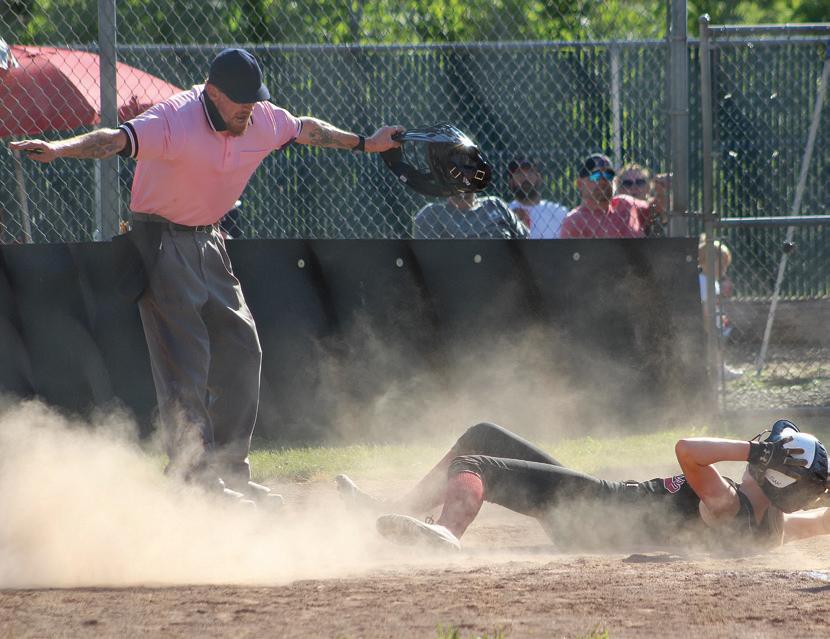
“All of a sudden, I felt something here in my temple, knocked me down,” Mora said. “I don’t know.”
Mora has moved on from the incident quite admirably. His outlook on the avocation is still incredibly positive.
“Actually, I’m relaxed and I go into every game with the mentality of, ‘Have fun,’” Mora said. “If you stop having fun, sell your equipment and go fishing.”
He certainly has yet to sell his equipment. And on July 5, he was treated to an experience of a lifetime. Facilitated by UMPS CARE Charities, in cooperation with Major League Baseball and the Tampa Bay Rays, Mora was able to meet the MLB umpiring crew of David Rackley, Charlie Ramos, Ryan Blakney and John Tumpane on the field prior to the Rays hosting the Phillies.
SOURCE: CLICKORLANDO.COM
Bucey, an NASO member, married his wife, Laura, in 2019, in a challenging arrangement. “I was a meth addict trying to escape my war demons and Laura was on meth and heroin,” he said. “We both got clean at the same time.”
They had a daughter also named Laura, but in a tragic turn, Bucey’s wife died in March 2020.
Her death led to his relapse. Narcotics Anonymous (NA) helped him get clean by January 2021, and he has been sober since.
“They’ve made me a better person,” he said of NA. “They really saved me.”
An official in his youth, Bucey overcame his background to get back in the game.
On a limited income, a grateful Bucey got help from the Battlefields to Ballfields (B2B) program, which provided him with gear and paid his registration fees. B2B assists military veterans in their pursuit of sports officiating through membership with NASO and support with equipment, apparel, training and education.
Bucey is now officiating almost every day.
“Sometimes it’s a struggle, but I keep going,” he said. “I do it for the kids. I know how hard they work, and I try to encourage them to have fun.”
He also wants to make his daughters proud.
“When I started this, I wanted to be a pro official,” Bucey said. “And now I want to be the first amputee major league official (in any sport).” Steven L. Tietz is an award-winning journalist from Milwaukee.
‘Right Start’ RefReps Grant
In May, Boardman (Ohio) High School senior Braeden Pugh was the recipient of a $500 “Right Start” Grant from RefReps and the nonprofit group Save Our Sport to combat shortages.
Pugh was involved in the Boardman High School sports officiating pilot class, which was started to help train future officials.
“We based our class on the OHSAA’s preference, the RefReps program, which is a really engaging, informative and inclusive sports officiating education curriculum.” said Boardman Health/ PE teacher Brian Ladner.
The grant Pugh received assisted him in the purchase of equipment and other resources for officiating flag football and soccer.
SOURCE: THEREVIEWNEWSPAPERS.COM
Have you heard an inspirational or motivational officiating story?
Send your ideas to GettingItRight@referee.com
COURTESY OF RACHELL RABUCK
Umpire Dean Bucey during a June softball tournament in Drain, Ore.
46 | REFEREE October 2023
VISIONINACTION














Discover the Power of Public Service Announcements
One of the biggest challenges facing the officiating industry is the need for sports officials. Resources to recruit and retain officials were created as part of NASO’s long-running Say Yes to Officiating campaign. The Say Yes to Officiating website www. sayyestoofficiating.com features downloadable and free public service announcements. These public service announcements are a great way to recruit officials and shed a positive light on officiating.

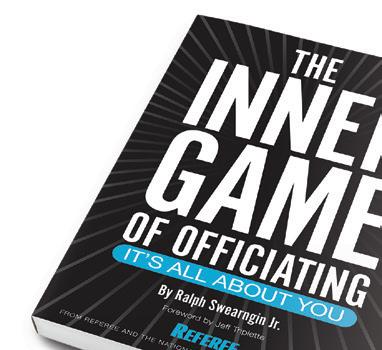
The public service announcements were based on a mini Say Yes to Officiatin g documentary which premiered during the online 2021 Sports Officiating Summit. NASO encourages any league or organization to play these tv-commercial sized videos during any sportscast in the venue, on a web stream, or on a televised broadcast.


Different size public service announcement videos are available for your association needs. Television spots and social media posts benefit from the 30-second videos. The 60-second video works will for in-venue broadcasts, social media, and some tv spots. For recruitment fairs, the 13-minute full video is ideal. NASO will collaborate with you to customize the video with your association logo. As an example of a customized video, the Pac-12 produced a video for volleyball specific training. Simply fill
WE’RE ALL IN THIS TOGETHER!
out a short contact form on the Say Yes to Officiating website: www.sayyestoofficiating. com/announcements if your association is interested in co-branding a video.
Complementing the videos are other, free resources including Power Point presentations, social media resources, how-to guides, and more. Chief Marketing Officer Jim Arehart says “NASO’s Say Yes to Officiating program has provided free recruitment and retention resources to any and all sports organizations for the past four years, and we’re continuing to produce new tools and resources as we hear feedback from the groups using them.”
All the Say Yes to Officiating resources are free to use and share. Feel free to brand your recruitment, retention, mentoring and celebration efforts with the logos. You are encouraged to not only use these tools and resources, but to add your own. Share your own experiences, link to your websites, send in any resources you or your organization has developed and be a part of helping more people Say Yes to Officiating!



For more information on how to use the videos as well as potential partnering and co-branding opportunities, please contact Jim Arehart at jarehart@referee.com.
THESE ORGANIZATIONS SUPPORT OFFICIALS
ATTENTION REFEREE MAGAZINE SUBSCRIBERS






It’s time to join the rest of us in the National Association of Sports Officials. Not only will you continue to receive the world’s #1 officiating publication, you’ll enjoy all of the additional benefits NASO members enjoy.


Go to naso.org/upgrade2023 to join NASO for the special introductory price of $114 and receive these two FREE books!

NATIONAL ASSOCIATION OF SPORTS
OFFICIALS
FOR NASO MEMBERSHIP INFORMATION OR TO SIGN UP, GO TO NASO.ORG, CALL 262-632-5448 OR EMAIL CSERVICE@NASO.ORG
$ 114 JOIN TODAY
RA GOING AWAY TO STAY?
NCAAW Redefines Key Element of Legal Guarding Position
By Scott Tittrington
The basketball court will look a bit different in NCAA women’s basketball moving forward, as a significant rule change centered on legal guarding position will be implemented starting with the 202324 season.
The restricted area, which has been identified for more than a decade by a three- or four-foot arc near each team basket, has been redefined and will no longer result in a physical identifier on the floor. It’s one of several rules tweaks crafted and submitted by the NCAA Women’s Basketball Rules Committee in May and approved by the NCAA’s Playing Rules Oversight Panel in June.
The rule changes appear in perceived order of importance. Referee thanks Jon Levinson, secretary-rules editor for NCAA women’s basketball, for reviewing this information.
Restricted Area (1-8.1, 4-25, 10-4.7, 10-10.15)
The only place on the playing court where a player now may not obtain and maintain a legal guarding position is directly underneath each basket, as had been the rule prior to the 2011-12 season. This tweak to the definition of the restricted area applies to every defender on the court. It also eliminates the lower defensive box in women’s college basketball.
Play 1: A1 is driving to the
When determining whether there is legal guarding position on this type of play, NCAA women’s officials will no longer need to be concerned with the restrictedarea arc and whether the defensive player was inside it at the time of contact. A rule change for 2023-24 states the only restricted area on the playing court is directly under each basket.

BASKETBALL RULES, MECHANICS, PHILOSOPHY 48 | REFEREE October 2023 EDITOR: SCOTT TITTRINGTON stittrington@referee.com
DALE GARVEY
basket. B2 obtains a legal guarding position directly under team A’s basket with two feet on the floor facing the ballhandler and (a) does not move from that position, or (b) takes a step forward and remains in legal guarding position. A1 jumps, releases a try attempt and crashes into B2, sending both players to the playing court. Ruling 1: In (a), it is a blocking foul on B2. If the try attempt is successful, A1 is awarded one free throw. If the try attempt is not successful, A1 is awarded two free throws. In (b), it is an offensive foul on A1. The try attempt is not counted if it is successful. Team B is awarded a designated-spot throw-in on the backcourt endline.
Play 2: A1 is holding the ball at the top of the three-point arc. B2 obtains a legal guarding position against A1, who begins a drive to the basket. B2 maintains legal guarding position throughout the drive, and after A1 releases a try attempt, the two players collide directly under team A’s basket. Ruling 2: This is an offensive foul against A1. While the contact occurred directly under the basket, B2 obtained legal guarding position outside of the restricted area and maintained it throughout
the matchup. Team B is awarded a designated-spot throw-in on the backcourt endline.
Play 3: A1 drives to the basket and momentarily gets her head and shoulders past B2. B2 recovers and slides over into A1’s path and is standing directly under the basket with legal guarding position when A1 releases a shot and crashes into her. Ruling 3: This is a blocking foul against B2. No defensive player may obtain and maintain legal guarding position directly underneath the basket. If the try attempt is successful, A1 is awarded one free throw. If the try attempt is not successful, A1 is awarded two free throws.
Faking Being Fouled
(4-14, 10-12.3.a.5)
A definition has been added to the rulebook of faking being fouled, which includes but is not limited to a player “flopping” on defense. The first violation of the rule results in a team warning. All subsequent violations are penalized with a team technical foul that, while not charged to the individual player’s foul count toward disqualification, does count toward the team-foul total. The

BY THE NUMBERS
A microcosm of the shortage of officials throughout the country can be found in the declining number of basketball officials registered with the Michigan High School Athletic Association. After having 4,609 officials for basketball in 2012, 3,310 remained in 2021. A whopping 1,299 officials hung up their whistles in a 10-year span, the most of any Michigan high school sport. The pool of available officials in the sport shrunk by 28.18 percent.
SOURCE: MICHIGANSTHUMB.COM
SIDELINE
That Coach Looks Familiar
Imagine signing on to officiate a high school summer basketball tournament, only to find yourself explaining your rulings to a coach who also happens to be the NBA’s all-time leading scorer.
Such was the case for several officials who worked the 2023 Nike EYBL Peach Jam Tournament in early July, where LeBron James was on hand to coach a team featuring his son, Bryce.
A Tik Tok user (brentwilson771) put together a compilation of James doing his coaching schtick on the sideline, including video of him standing face-to-face with an official and waving his arms while arguing a ruling.
SOURCE: THEBIGLEAD.COM
TOOLS
Simplified & Illustrated













Are you a visual learner? Do you achieve a better understanding of rules and officiating mechanics through the use of artistic aids rather than the written word? If so, High School Basketball Rules




A rule change for 2023-24 adds a definition to the NCAAW rulebook concerning players faking being fouled. A first instance is a warning, and all subsequent occurrences result in a team technical foul. This is the signaling sequence if a technical foul is ruled.
Simplified & Illustrated be a part of your ongoing education. The 208-page manual, produced in partnership with the NFHS, uses Referee MechaniGrams and PlayPics to bring high school rules to life and allow officials to “see” the game. The manual costs $15.95 and is available at store.referee.com/ basketball.

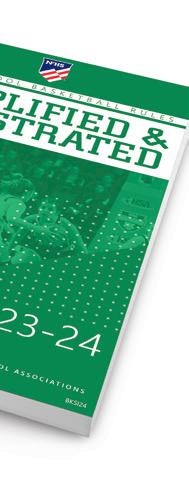
should














REFEREE October 2023 | 49
A
TEST YOURSELF
In each of the following, decide which answer or answers are correct for NFHS, NCAA men’s and NCAA women’s rules, which might vary. Solutions: p. 85.
1. After how many team fouls are bonus free throws awarded?
a. After the fifth foul of the quarter.
b. After the fifth foul of the half.
c. After the seventh foul of the quarter.
d. After the seventh foul of the half.
2. What is the length of time before and between overtime intermissions?
a. One minute.
b. 75 seconds.
c. 30 seconds.
d. The length of a media timeout.
3. Which of the following is true regarding fighting?
a. Flagrant fouls (NFHS, NCAAM) or disqualifying fouls (NCAAW) always involve fighting.
b. When a player attempts to punch another player, it shall only be deemed a fighting act if contact is made.
c. A fight can occur between teammates or between opponents.
d. A fight can only occur during a dead ball.
4. A technical foul that is assessed to the head coach for unsporting conduct (NFHS), unsportsmanlike conduct (NCAAM) or misconduct (NCAAW) results in all of the following except which?
a. Counts toward the team foul count total.
b. Two free throws to the offended team.
c. A throw-in to the offended team at the division line.
d. A throw-in at the point of interruption.
5. All of the following are legal jersey numbers, except which?
a. 0.
b. 00.
c. 1.
d. 6.
e. All of the above are legal numbers.
6. A1 shall be granted a timeout in all of the following, except which?
a. A1 is dribbling the ball.
b. A1 is holding the ball while on the floor.
c. A1 is holding the ball while airborne above the playing floor inbounds.
d. A1 is holding the ball while airborne and on the out-of-bounds side of the boundary line.
e. A1 shall be granted a timeout in all of the above.
offended team will receive two free throws and a designated-spot throwin at the division line opposite the scorer’s table.
The act of the ruling official giving the signal related to faking being fouled counts as the warning during live-ball play. Once the clock stops for a whistle (since the mandatory clock stoppage for successful goals under a minute in the game do not count), the ruling official will report the warning to the scorer’s table. On the second and all subsequent occurrences, the ruling official will allow play to continue if the defense fakes a foul while the offense has an immediate scoring opportunity. When the offense fakes after the warning, play is stopped immediately to issue the technical foul (see PlayPic A on the previous page).
Play 4: A1 is driving to the basket and makes slight/incidental contact with B2, who falls to the floor in an attempt to convince the officials A1 has committed an offensive foul. Immediately after the contact, A1 passes the ball to A3. Team A (a) has not, or (b) has been warned about faking being fouled. Ruling 4: In (a), the ruling official should use the faking/flopping signal to indicate team B is being warned for faking being fouled and allow play to continue. In (b), as soon as A1 passes the ball, the ruling official should blow the whistle, stop the clock, give the faking/flopping signal and assess a team technical foul to team B.
Play 5: In the first quarter, a team B player is warned for faking being fouled. In the third quarter, A1 is driving to the basket. B2, after slight incidental contact, falls to the floor. The ruling official believes B2 has faked being fouled. Play continues and A1 jumps to release a try attempt that is not successful. As A1 is returning to the floor, she trips over a prone B2. Ruling 5: Team B is assessed a team technical foul for B2 faking being fouled. B2 is assessed a personal foul for the tripping foul. A1 is awarded two free throws. After A1’s free throws, any team A player or substitute may shoot the two free throws for the technical foul. Team
A is then awarded a designatedspot throw-in at the division line. The tripping foul counts toward B2’s disqualification, and both B2’s personal foul and the team technical foul count toward the team-foul total.
Play 6: In the first quarter, A1 is driving to the basket and makes slight contact with B2, who fakes being fouled. The ruling official gives the faking/flopping warning signal and allows play to continue. A1 passes to A3, who shoots and misses. Team B rebounds and, while bringing the ball up the floor, B4, after a reach by defender A5, bobs her head in an attempt to make the official believe there was illegal contact. Ruling 6: The officials should stop play following B4’s head bob and issue a team technical foul for flopping to team B. While B2’s warning for faking being fouled earlier in the sequence was not yet reported to the scorer’s table, the official’s signal does serve as the team warning. Therefore, B3’s head bob is the second occurrence and warrants the technical foul. Team A is awarded two free throws and a designated-spot throw-in at the division line opposite the scorer’s table.
Team Technical Fouls (10-12.3)
A new classification of technical fouls has been added to the rulebook as the penalty for subsequent infractions following a team warning for the four delay infractions listed in rule 4-9.1.d through 4-9.1.g — preventing the ball from being promptly put into play, such as delaying the administration of a throw-in or a free throw by engaging in a team huddle; failure to have the court ready for play after the final horn to end any timeout; interfering with the ball after a goal or failing to immediately pass the ball to the nearest official after a whistle is blown; or having any part of their person beyond the vertical inside plane of any boundary line before the ball has crossed that boundary line. Faking being fouled also falls under this new classification.
These technical fouls are charged to the team-foul count but
BASKETBALL 50 | REFEREE October 2023
THE NEW OFFICIALS MANUALS








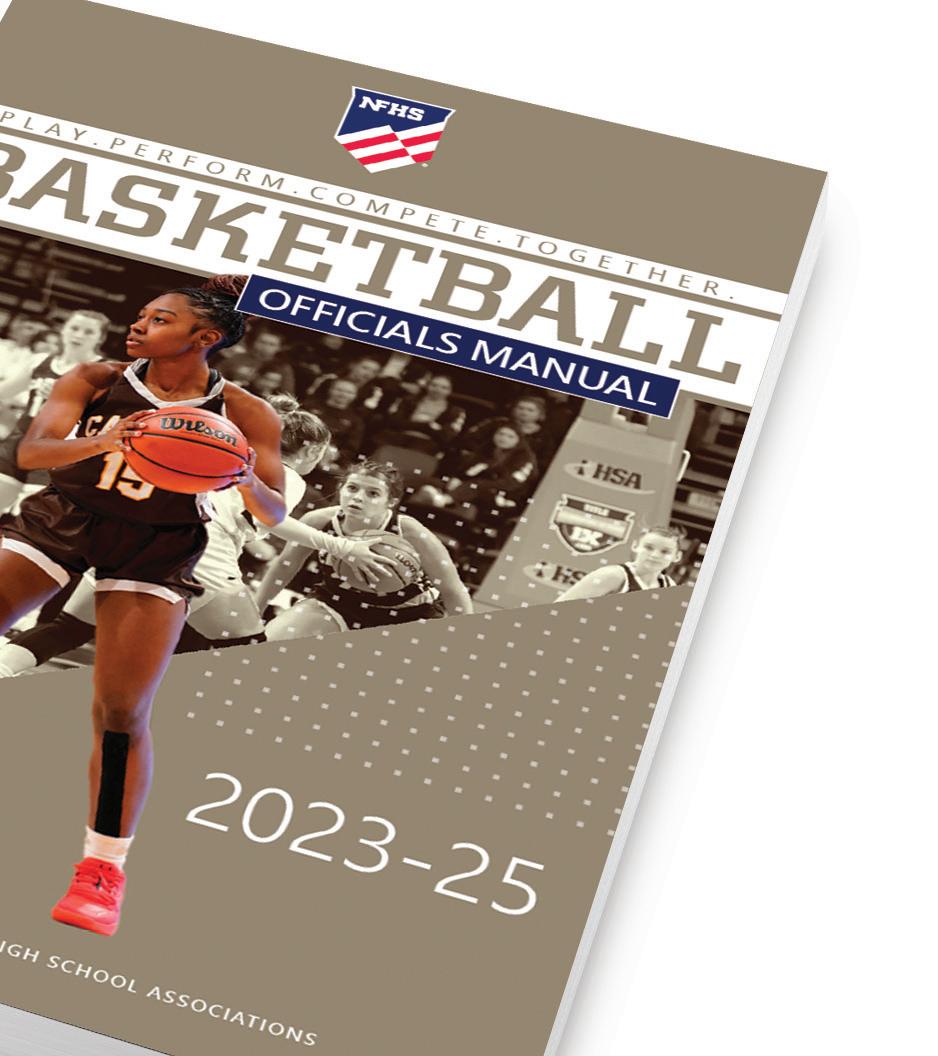

MOR E PAGES MOR E MECHANICS MOR E INSTRUCTION
MORE • MORE • MORE Get the first official NFHS mechanics manual produced by the editors of Referee! Loaded with dozens of mechanics scenarios and featuring Referee’s exclusive PlayPic® and Mechanigram® graphics, this new resource for crews of 2 and 3 is bigger, better and more fully illustrated than it’s ever been. You’ve never seen an Officials Manual like this one – get yours today! Print - $21.95 // Digital - $20.95 // Combo - $25.95 AVAILABLE NOW STORE. /BASKEtBALL 184 pages 5.5” x 8.5”
BY
•
CASEPLAYS
Technical on Bench Personnel
Play: The trail official is near team A’s bench, and somebody from team A’s bench yells a derogatory remark at the official. The official blows the whistle to assess a technical foul and turns to the bench to see who made the comment, but the official is not sure who made the comment. The official is sure the comment came from bench personnel on team A’s bench. To whom is the technical foul charged? Ruling: When a member of bench personnel commits an unsporting act (NFHS, NCAAM) or misconduct (NCAAW), such as yelling a derogatory remark at an official, the result is a bench technical foul in NFHS and NCAAW and a Class A technical foul in NCAAM. In NFHS and NCAAW, when the offender cannot be identified, it results in a single bench technical foul to the team, and that foul is also charged indirectly to the head coach (NFHS 10-5-1a Pen., 10.5.1A; NCAAW 10-12.4.a.1 Pen., AR 346). In NCAAM, when the offender cannot be identified, the Class A technical foul shall be charged to the head coach (103.2.a Pen., AR 293).
Throwing Shoe at Ball
Play: A1 is holding the ball outside the three-point line in team A’s frontcourt. Defensive player B2, who is in the lane area, has a shoe fall off. A1 shoots the ball, B2 picks up the shoe and throws it at the ball. The shoe strikes the ball while it is on its (a) upward, or (b) downward flight. The ball is deflected off its course, and the try is not successful. What sort of penalty shall result?
Ruling: Goaltending only occurs when a defensive player touches the ball that is on its downward flight; not when an object touches the ball. Therefore, there is no goaltending on this play. B2’s action of throwing a shoe at the ball is an unsporting act (NFHS), unsportsmanlike act (NCAAM), or misconduct (NCAAW). Therefore, B2 shall be charged with a technical foul, and any team A player shall be awarded two free throws (NFHS 4-22, 9-12, 10-4-6; NCAAM 9-15.3.a, 10-3.1; NCAAW 9-15.3.a, 10-12.3.a).
are not assessed to any specific individual. The penalty is two free throws awarded to any member of the opposing team followed by a division line throw-in opposite the scorer’s table for the offended team.
Play 7: Team A is awarded a designated-spot throw-in. While A1 is holding the ball on her side of the boundary line, B2 (a) makes contact with A1, (b) makes contact with the ball, or (c) reaches across the boundary line but makes no contact. Ruling 7: In (a), B2 is assessed an intentional foul. In (b), B2 is assessed a player/substitute technical foul. In both instances, two free throws are awarded to any member of team A, followed by a team A throw-in at the division line opposite the scorer’s table. In (c), team B is given a delay warning on the first occurrence and a team technical foul on all subsequent occurrences. In (a) and (b), the first offense also serves as the team warning for delay.
Duties of the Shot-Clock Operator (2-11.6.c.3)
The shot clock will reset to 20 seconds or the time remaining on the shot clock when a foul is committed by the non-shooting team in the shooting team’s frontcourt during an unsuccessful try that does not strike the ring or flange but is not committed against a player in the act of shooting or an airborne shooter.
The rationale for the rule change is an offensive team should not be punished with a shot-clock reset if a foul occurs with more than 20 seconds and the ball has not touched the ring or flange.
Play 8: A1 attempts a long threepointer with the shot clock at 22 seconds. While the ball is in the air, B2 pushes A3 as they jockey for rebound position. A1’s shot attempt hits the backboard but misses the ring and flange. Team A is not in the bonus. Ruling 8: Team A will receive a designated-spot throw-in nearest the spot of the foul and the shot clock will remain at 22 seconds.
Official’s Duties — 10-Second Backcourt Count (2-7.9)
Officials are now required to use
the game clock rather than a visible count to administer the 10-second backcourt count when the shot clock is not visible.
Play 9: Team A secures control of a rebound in the backcourt with 28.6 seconds remaining in the second quarter. The trail official blows a whistle at (a) 18.5 seconds, or (b) 18.7 seconds to indicate a 10-second backcourt violation has occurred. Ruling 9: It is a backcourt violation in (a) and team B will receive a designated-spot throw-in. It is an inadvertent whistle in (b) and play will resume with a team A designated-spot throw-in and a new 10-second backcourt count if the ball is thrown into the backcourt.
Replay — Permissible Use of Replay (11-3.1.r)
Officials may now use replay at any point in the game to determine whether a goal shall count or be canceled when a foul is committed by or against a teammate of the shooter. When the foul is committed by an opponent of the shooter, the review will be conducted at the next electronic-media timeout or intermission. When it occurs after the last media timeout of the fourth quarter or during any overtime, the review must occur before the ball becomes live following the foul. When the foul is committed by a teammate of the shooter, the review will be conducted before the ball becomes live after the foul.
Play 10: Close to the time of A1’s release of a try for goal, (a) A2 fouls B3, or (b) B4 fouls A5. The try is successful. The officials want to confirm the ruling on the court as to whether the goal shall count. Ruling 10: In (a), the officials must review the play before the ball becomes live because it will affect whether team B, when in the bonus, will be awarded free throws for A2’s foul. If the ball was in A1’s hands at the time of the foul, A2’s foul is an offensive foul, the try is canceled and team B is awarded the ball for a throw-in at the spot nearest the foul. If A1’s try was in flight when A2’s foul occurred, when team B is in the bonus B3 will be awarded two free
BASKETBALL 52 | REFEREE October 2023























2023-24 High School Basketball Officials Manual
BASKETBALL
Officials Manual •More Pages •More Me chanics •More Instruction Loaded with dozens of mechanics scenarios and featuring Referee’s exclusive PlayPic® and Mechanigrams® graphics, this new resource for crews of 2 and 3 is bigger, better and more fully illustrated than it’s ever been. *NASO member discount available. $2195 * PRINT $2095 * DIGITAL $2595 COMBO 184 Pages // 5.5” x 8.5” MAJOR CHANGES TO THROW-IN RULES Everything you need to know about the new front court throw-in process for high school basketball. Featuring easy-tounderstand language and Referee’s exclusive MechaniGrams® caseplay scenarios *NASO member discount available. $595 * PRINT $395 * DIGITAL $795 COMBO 16 Pages // 5.5” x 8.5” The complete annual special edition guide with all of the best training selected for you. The only illustrated rules study guide for high school basketball. Rules, updates, mechanics changes and major points of emphasis straight from the NFHS in these affordable guides. 184 Pages // 5.5” x 8.5” $18.95 184 Pages // 5.5” x 8.5” $15.95 also avAilable ORDER TODAY AT STORE. /BASKETBALL NEW FOR 2023 NEW FOR 2023 $3.50 each
START YOUR
TRAINING
throws. In (b), the replay review will be conducted at the next electronicmedia timeout or intermission. When the fourth-quarter media timeout has already occurred or the game is in overtime, the review will be conducted before the ball becomes live following the foul.
Uniforms (1-22.7, 1-25.10)
Additional uniform options are now permitted. Jersey numbers 0 or 00 through 99 are legal, allowing more space for logos on the jersey front (see PlayPic B). Religious headwear may be worn without a waiver of the playing rule provided it is safe for competition.

Shot Clock Displays (1-19-4)
An amber strip at the top of the backboard is also permitted to signal the end of a shot-clock period, in addition to any lights around the shot clock.
Scott Tittrington is an associate editor at Referee. He officiates women’s college and high school basketball, college and high school baseball, and high school football.

Transition Solutions Involve Entire Crew
By René Ferrán
It can get easy as a center official to fall into a rhythm.
Neither team is applying backcourt pressure, so you go from free-throw line extended to freethrow line extended, not having to think too hard as you transition downcourt, leaving the trail to handle a one-on-one matchup.
Then, suddenly, a post player decides to set a screen to free up a teammate advancing the ball. Did the screener provide the defender time and distance to avoid a blindside screen? Did the defender, seeing the screener, decide to blow up the screen regardless?
It’s a reminder that every trip down the court can turn into something unexpected — and if we’re not ready to make a decision, that trip can turn your game sideways.
“A hot matchup could spring up at any moment,” said Mary Toberman, who stepped down this summer as the NCAA Division III national coordinator of women’s basketball officials. “This is where the center and lead have to be mentally trained to pick up this play and assist if the trail doesn’t see the whole play.”
One way to train ourselves not to fall into the rhythm of moving from one home position to another is to think not in terms of backcourt pressure, but instead consider every trip downcourt as transition coverage.
It requires discipline and focus on our primary coverage area and looking for matchups that could “hurt” us the most. If we turn off for just a second, that’s when that back screen will take place, or a defensive player will attempt to draw an offensive (NCAAW) or team-control (NFHS and NCAAM) foul on an unsuspecting player moving up court.
Center officials must be aware of these off-ball collisions and know whether a player obtained (established) legal screening or guarding position and if the contact rises from incidental to illegal, requiring a whistle.
However, it’s not just center officials who can fall into a rhythm. Trail officials transitioning to new leads are trained to get to the endline as quickly as possible to settle and prepare for plays coming to the basket. But how many of us bust to the endline as the new lead, ready to accept a play coming at us, except that play never arrives because something happened at midcourt that we could have assisted in adjudicating if we’d been in proper position?
The CCA officiating manuals and the NFHS officials manual all have sections that address transition coverage (NCAA) or press coverage (NFHS). Whatever this type of coverage is called, each manual stresses the center and lead cannot abandon the trail when the defense applies backcourt pressure.
Remember that in transition, proper coverage is dictated by the movements of the players, and officials should adjust their cutoff lines for their coverage areas based not on markings on the court, but where the players are (see MechaniGram).
For example, most pregame discussions include a reminder the center needs to stay with the “middle third of players” all the way up the court. This second line of players, especially when the defense applies full-court pressure, is where trouble can arise (remember our example of the post who turns suddenly to set a blind back screen).
The center should not focus on the on-ball matchup — that typically is the trail’s primary matchup — but be ready to help with the pass up the court to break the press or the trap

BASKETBALL
54 | REFEREE October 2023
A rule change for 2023-24 allows NCAAW players to now wear any number from 0-99, including 00.
near the division line. The center also can help rule on backcourt and 10-second violations.
Even if there is no backcourt pressure, the center needs to pay attention as the ball transitions up the court. If the point guard crosses the division line on the center’s side of the court, the center becomes responsible for on-ball coverage. Moreover, if a trap develops on that side of the court, the center must move to referee the play, facilitating a rotation by the lead that best positions the crew to officiate the action.
The CCA women’s manual also notes the lead should hesitate near the free-throw line extended — or even higher — to assist with any action.
Toberman points out the CCA manual devotes 12 pages to coverage
mechanics for trail, center and lead in transition, “but our leads tend to become complacent, and even disengaging for a fraction of a second can make a difference.”
As a lead, if you get caught overrunning the play in your quest to be ready for plays at the basket, don’t hesitate to position adjust back up the court. Even getting to the free-throw line extended in the frontcourt could make the difference on a long outlet pass to a post player at the 28-foot mark that breaks backcourt pressure. In addition, the lead has other responsibilities that can be better handled by not settling at the endline. The lead might spot a coach calling timeout to save a possession or catch a 10-second violation not observed by the trail or center because on-ball pressure means they can’t look up at the shot clock.
“As soon as the lead recognizes multiple matchups, they should be thinking, ‘How can I help?’”
Toberman said. “The lead must be deeper than all other players to have a wide view, but this is not necessarily the endline.”
So just as we have a checklist of things we note after each change of possession — game clock, shot clock, where our partners are on the court — we need to add one more line: watching for player movements that indicate a transition matchup is about to materialize.
“The bottom line is transition is everyone’s responsibility,” Toberman said. “Get back in the action and help out.”
René Ferrán is a freelance writer and editor who lives in Portland, Ore. He officiates high school basketball and baseball, as well as youth soccer.
When
REFEREE October 2023 | 55
HOME VISITOR SCORER & TIMER L C 4 4 1 5 5 1 3 2 3 T 2
transition plays occur, it’s important for center and lead officials to recognize they must position adjust based on where players are on the floor. This MechaniGram shows the need for the center to remain near the division line to officiate possible matchups on that side of the court, and for the lead to not automatically move to the endline, but instead find a good position to assist with any developing plays.
It’s 10:15 a.m. on a mid-June Sunday and George Drouches has already put in a full day’s work, as evidenced by the notepads, backpacks, telephones, three-ring binders and other items scattered around room 403 of the Fairfield Inn & Suites in downtown Omaha, Neb.

It’s the opening weekend of the 2023 Division I Men’s College World

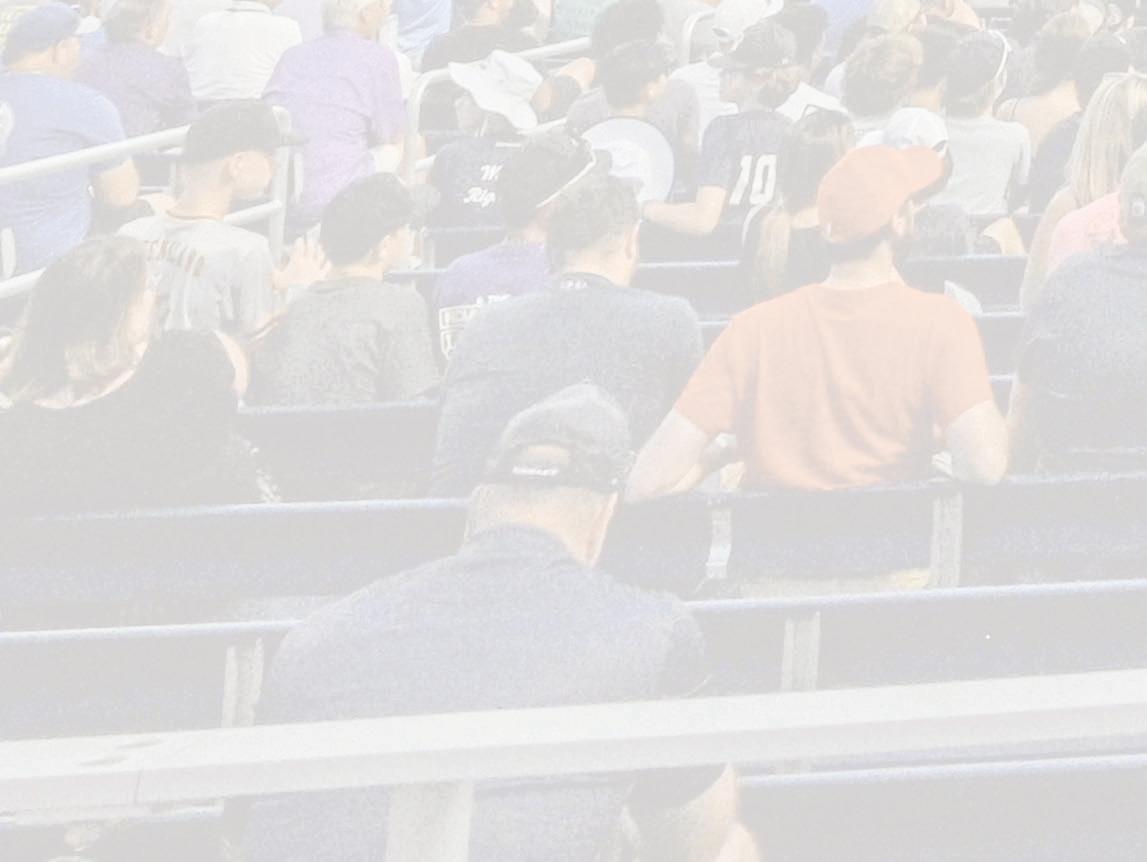
Series. Only four games have been played in what will ultimately shake out to be a 16-game event spread out over 11 days. The demands on the NCAA’s national coordinator of baseball umpiring have never been greater.
“This is a mental toughness event,” concedes Drouches before offering perhaps the most honest

A stadium in Nebraska is the field of dreams for college umpires.
56 | REFEREE October 2023
appraisal of what has been happening and will continue to occur for the eight men selected to umpire this year’s “Greatest Show on Dirt.”
“Day One, it’s exciting. Day Five, you’re tired. Day 10, you want to call Mom. Day 12, you want to die.”
And on Day 13, every one of them will have one thought: How do I get back here again next year?
The Place to Be
Why the 40th biggest city in the country, known for steaks, billionaire Warren Buffett and a great zoo? As a T-shirt hung in a downtown boutique reads, “Omaha: For some reason, you have to come here to win a baseball championship.”




You also have to come to Charles Schwab Field if you want to umpire one. You need to have an unwavering
By Scott Tittrington
belief you are among the eight best among a field of hundreds of peers vying for the very same honor. However, unlike the teams competing to get here, the umpires’ Omaha quest does not begin with a clean slate in February. While the NCAA umpiring roster lists approximately 675 arbiters registered to work at its highest level, only about one-fifth enter any new season
REFEREE October 2023 | 57
©
SPORTS
STEVEN BRANSCOMBE-USA TODAY
harboring any real hopes of scoring one of the 96 postseason invitations released each May. And getting onto that watch list is anything but a “What have you done for me lately?” endeavor. It’s a journey several years in the making.
It involves impressing a conference coordinator (or perhaps more than one) and finding your way to the top of the list that assigner submits to the NCAA for postseason consideration. Along the way, one of four NCAA national umpiring advisors — Mark Ditsworth, Jim Jackson, Bob LaBelle and Bill McCallum — has undoubtedly stopped in on several of your games and watched you work. So has Drouches; or Randy Bruns, the NCAA secretary-rules editor; or Billy Haze, the NCAA director of umpire training.

“They submit well over a thousand observation reports,” said Drouches about the combined efforts of the evaluation team. “That gives us a lot of landscape. We’re out every weekend. We’re actually looking at the guys. We have eyes on the process.”
That process leads to a midMay meeting in Indianapolis where Drouches, the national
Prepped and Ready
So it was on June 14, the eight men chosen to work this year’s MCWS gathered in the lobby of that same Fairfield property that housed Drouches’ war room. A little more than 25 hours remained before the first pitch would be thrown in the 2023 event.
There are people on hand in the bowels of Charles Schwab Field sharing advice about the need to treat each ballgame in Omaha like it’s just another game. After all, there is a reason these eight men were selected for the sport’s premier showcase. It had to do with their ability to turn in professional, competent efforts. So if it ain’t broke, why fix it?
umpiring advisors and the NCAA staff select 96 Regional umpires, 32 Super Regional umpires and the eight people who will have their lives changed forever when they answer their phones and hear they’ve been invited to Omaha.
No selection criteria has been etched in stone. Some years, the chosen eight have a wealth of pro umpiring experience accrued before they moved into the collegiate ranks. Other years, those who are strictly amateurs carry the water. Geography is not a factor. The desire to bring at least a few fresh faces to Omaha each June is very real, but no mandate has been leveled that the crew makeup include a certain percentage of rookies or MCWS veterans.
“We changed the dynamic of the selection process a few years ago,” Drouches said, without revealing any specific trade secrets. “Umpire competition is at an alltime high. We’re looking to give lots of umpires lots of opportunities.
“The final analysis is the committee has directed me to bring the best guys to Omaha. And, ultimately, can they handle Omaha? It’s not easy.”
Then again, there are also people mingling about doing everything they can to demonstrate each game is very much not just another game. Ask any college umpire to list pet peeves, and near the top will be the lack of a locker room that offers security and sanctuary. Umpires want a place where they can talk among themselves both pregame and postgame, share stories that may not be fit for public consumption and perhaps enjoy a bite to eat and a warm shower without having to worry about a wayward assistant wrestling coach traipsing through the “secure” locker room and absolutely killing the vibe.
Now, make no mistake, the accommodations at the MCWS site are top notch. A large umpires room awaits the 2023 umpires as they arrive with 50-pound gear bags in tow. Drouches has initially split the eight umpires into two crews of four, each with a dedicated crew chief, and each four-man crew has a private locker room off the main room in which to set up shop. Crew chief Jeff Head and compatriots Ramon Armendariz, Angel Campos and Brandon Cooper take the room to the right, while crew chief Billy Van Raaphorst and partners Casey
58 | REFEREE October 2023
OMAHA!
STEVEN BRANSCOMBE-USA TODAY SPORTS
Florida head coach Kevin O’Connell seeks an explanation about a ruling from umpire David Savage, left, and Billy Van Raaphorst during a 2023 Men’s College World Series game against Oral Roberts at Charles Schwab Field in Omaha.
Moser, Travis Reininger and David Savage veer to the left. Name placards are installed above each umpire’s locker, and out come all the accoutrements — new MCWS hats and shirts, crisply pressed pants and freshly polished plate shoes, and each umpire’s personal effects that will help allow this home for the next 12 days to feel like, well, home.
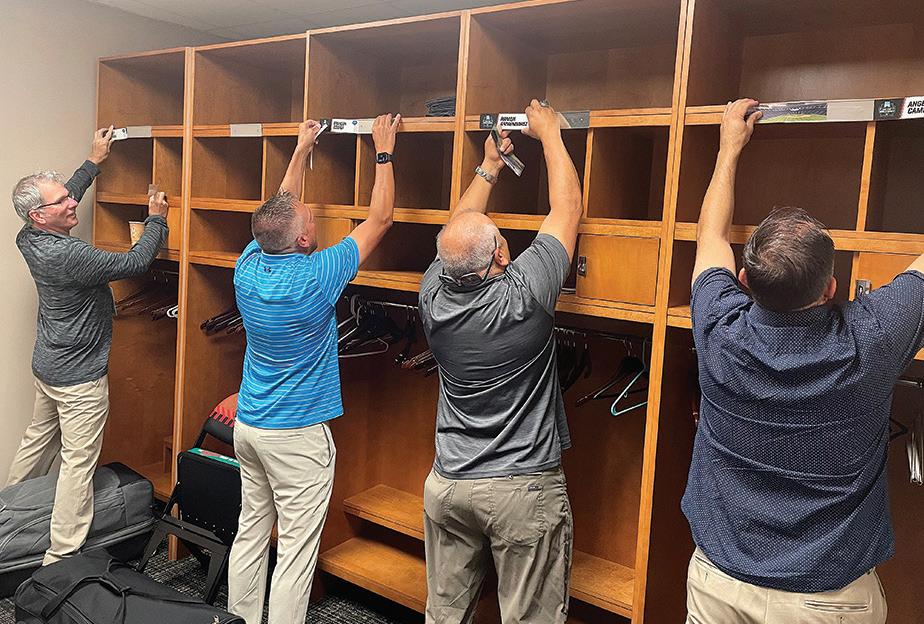
Meanwhile, the main locker room looks like a cross between a Fortune 500 board room, the Dunder-Mifflin break room and a Best Buy showroom. Drouches sits at the head of the long table in the center of the room, a massive, backbreaking three-ring binder containing papers pertaining to every possible MCWS umpire contingency constantly within arm’s length. The umpiring crew gathers around the table for the first of several meetings on the day while Larry, the umpire “clubby,” works first on getting the air conditioning to function properly now that the once-empty room is extremely populated, before
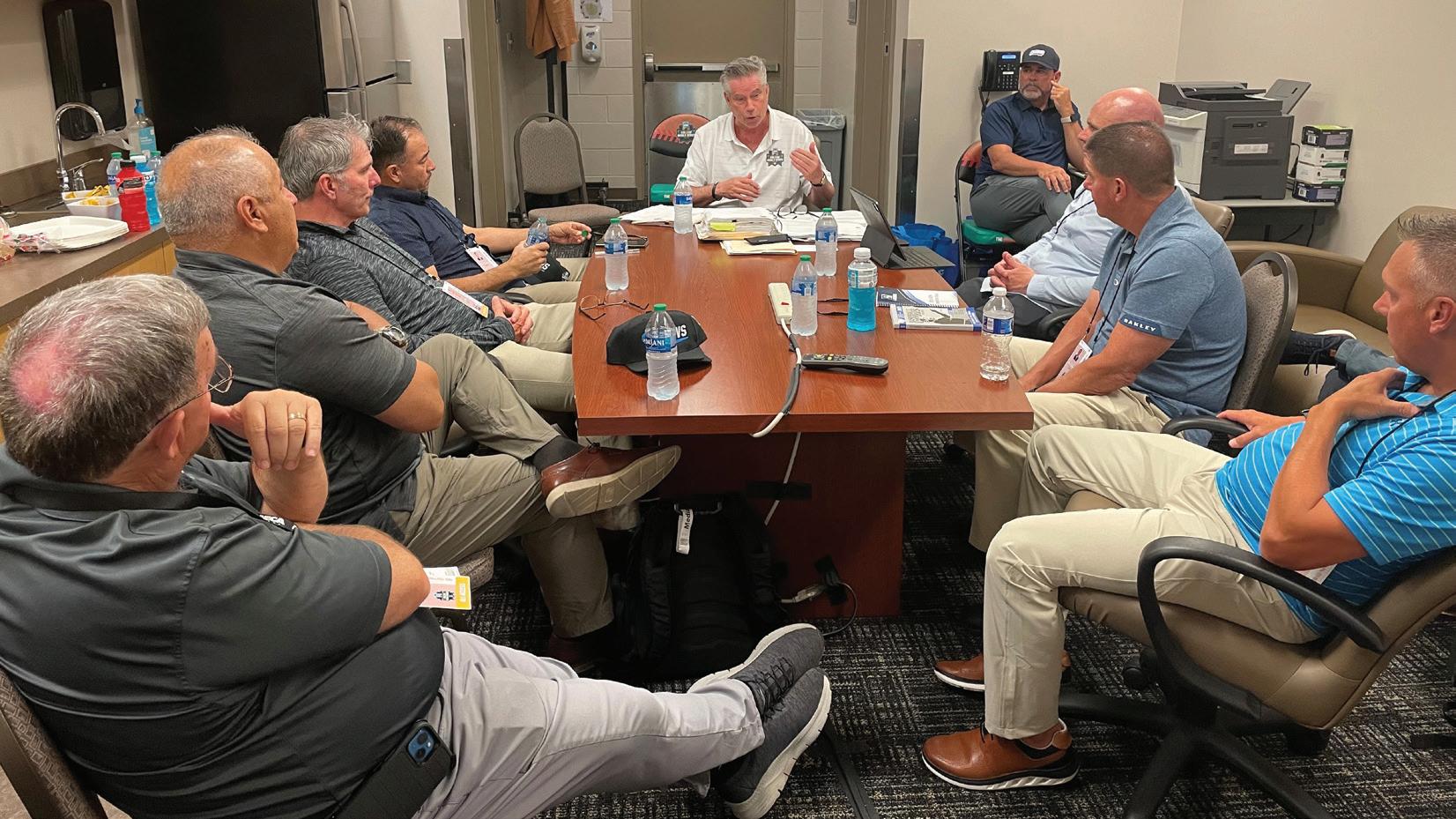

shifting his attention to the need for stocking the nearby refrigerator with bottles of water and Powerade. A bit later, cold cuts and loaves of bread appear on the counter, and out come the requests for specific umpire provisions, with a special emphasis on the one food group that makes every good umpire function: PB and J.
The television in the main room and everyone’s personal cell phone is off while Drouches holds his charges’ rapt attention, but that doesn’t mean electronics aren’t omnipresent. Various ESPN contractors parade through the quarters, running cable and wires to and fro. One of the most frequent interlopers is Patrick, who is responsible for jerry-rigging a small camera onto the mask of the plate umpire before every game to create the suddenly en vogue “MaskCam” that makes its way into every ESPN broadcast. At the same time, the employees of DVSport, the
Pittsburgh-based company that provides video review support, are shuttling into a back room that features a bank of monitors that will carry live feeds from every camera in the ballpark.
For good measure, what’s a few more people making their way through the umpires’ hallowed ground? Several NCAA administrators are also on hand, performing a variety of duties consistent with putting on the association’s largest championship event, occasionally interrupting Drouches to wish the umpires the best before the week gets real.
Over the course of the next 24 hours, Drouches will hold three different meetings with the entire crew to discuss matters such as game assignments and crew expectations. Bruns will lead a walkthrough around the perimeter of the playing field to discuss ground rules, pointing out tricky spots with the railing
REFEREE October 2023 | 59
Housekeeping is the order of the day the Thursday before the start of the 2023 Men's College World Series. Top, NCAA D-I national umpire coordinator George Drouches prepares materials for this year's crew. Middle, umpires, from left, Jeff Head, Brandon Cooper, Ramon Armendariz and Angel Campos affix their nameplates to their lockers. Bottom, Drouches conducts a meeting with the crew.
REFEREE
above the outfield fence and the myriad microphones that have been embedded every few steps on the warning track. Haze will go over scripts shared with Head and Van Raaphorst about proper verbiage for use during video reviews that will be communicated not just to the 24,000 fans in attendance, but the millions watching on their TVs, computers or smartphones.
Just another game? Seriously?
“It’s just to make sure that we do what we’re supposed to do as far as umpiring, enforcing rules, doing everything the way they want it in NCAA baseball,” said Head, working his fourth MCWS and his second as a crew chief, having also earned that title in 2017.
“My opinion is it’s just necessary, those first few days before the games start, just to make sure everybody is on the same page. Then, after that, once the games start, it’s just umpiring baseball.”
Memories Galore
Of course, “just umpiring baseball” isn’t the only thing the eight umpires will take away from Omaha once they depart on June 27. Sure, there will be that one pitch, that one play, that one ruling that sticks with each of them. You don’t reach the college baseball umpiring pinnacle without being able to employ some honest self-observation about the job you’ve done and creating expectations about how, even once you’ve reached this level, you can do it better.
But there’s no debating the memories of Omaha will be tinged more by what’s happened off the field than anything on it.
For some, like Cooper, it’s the realization of coming full circle after walking away from his professional umpiring career back in 2006, having reached the Triple-A level,

Above, the 2023 Men's College World Series umpiring crew walks the grounds at Charles Schwab Field the day before the start of this year’s event. Below, the six umpires who worked Game 3 of the championship series, from left, Casey Moser, Ramon Armendariz, Jeff Head, Travis Reininger, David Savage and Billy Van Raaphorst, convene as a crew.

in search of greater security for his wife, Monica, and his young son. Two years later, he got serious about college baseball. And another 15 years into his journey, after becoming one of the top umpires in the Southeastern Conference and with five Super Regional appearances to his credit, the phone call he had been dreaming about finally came.
“I remember hanging up with (Drouches) and I started calling my wife, started calling my parents. I was crying driving down the road,” Cooper said. “It was special. It was a long and winding road to get there.”
When he stepped on the turf Friday afternoon for Game 1 to kick off this year’s event, the cheering section for the thirdbase umpire was every bit as strong as those for any player suited up for Oral Roberts or TCU.
“I had my wife here, my three sons, my mom, my dad, my brother. My dad had a quadruple bypass over Christmas. Just being here for Father’s Day weekend, that was special,” Cooper said.
It was no less special for Savage, the one member of
this year’s MCWS crew who never worked a professional baseball game in his career. The consummate “grinder” umpired his first NCAA D-I baseball game back in 1994, and 16 years later had his “Brandon Cooper moment” when he made his Omaha debut in 2010 in what would be the final MCWS held at the venerable Johnny Rosenblatt Stadium.
Now, 13 years later, here he was again, the dean of the 2023 crew, making his fifth Omaha appearance after another strong season in the SEC.
“Everyone has goals as officials, and this is the ultimate goal,” Savage said. “It’s still an honor and I don’t take it for granted by any stretch of the imagination.”
Despite five trips in 13 seasons, he admitted the nerves remained present when he trotted out to work first base in the opening Friday night game between Florida and Virginia.
“It’s not easy. I wish there was some magic formula to figure out what to do,” he said. “You just come in here and try to relax.”
60 | REFEREE October 2023
OMAHA!
REFEREE, STEVEN BRANSCOMBE-USA TODAY SPORTS
Then again, relaxation can be overrated. Making his second MCWS appearance after debuting in 2021, Armendariz, who worked 60-plus MLB games before transitioning to college baseball 16 years ago, compared the Omaha experience to the passion that accompanies international baseball on certain parts of the globe.
“I remember when I was working winter ball in the Dominican Republic … I’ve never been around an environment like that, in Winter League baseball,” said Armendariz, who works primarily in the Pac12 Conference. “That big environment, it just pumps you up. It’s a rush to bring out the best in you.”
But like the after effects of a strong cup of coffee, the jolt eventually does fade, each

umpire left standing to find the routine that will allow him to perform at his best for a two-week stretch and leave the type of impression that might allow him, if he’s fortunate, to experience it all over again at some point in the not-too-distant future.
“There are a lot of guys worthy of working out here. A lot of great umpires,” said Head, who had to wait six years to make it back. “You’ve done the math. You’ve seen how long it’s been.
“This means a lot to me. I had to overcome some obstacles to be given this opportunity and I really appreciate them giving me this opportunity to come back.”
Scott Tittrington is an associate editor at Referee. He umpires college and high school baseball, and officiates college and high school basketball and high school football.
Umpiring Roster
Ramon Armendariz, 50, of Inglewood, Calif., a former MLB callup umpire who now works primarily in the Pac-12, making his second MCWS appearance (2019).
Crew chief Jeff Head finds the perfect position to rule on a play at the plate during a 2023 Men’s College World Series game between Florida and TCU.
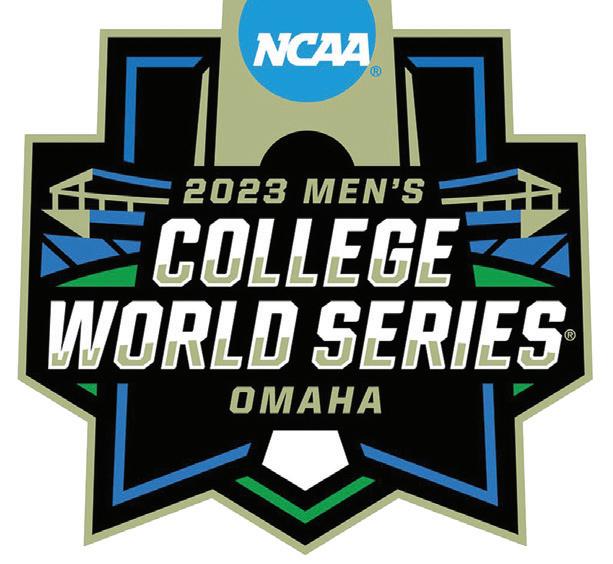
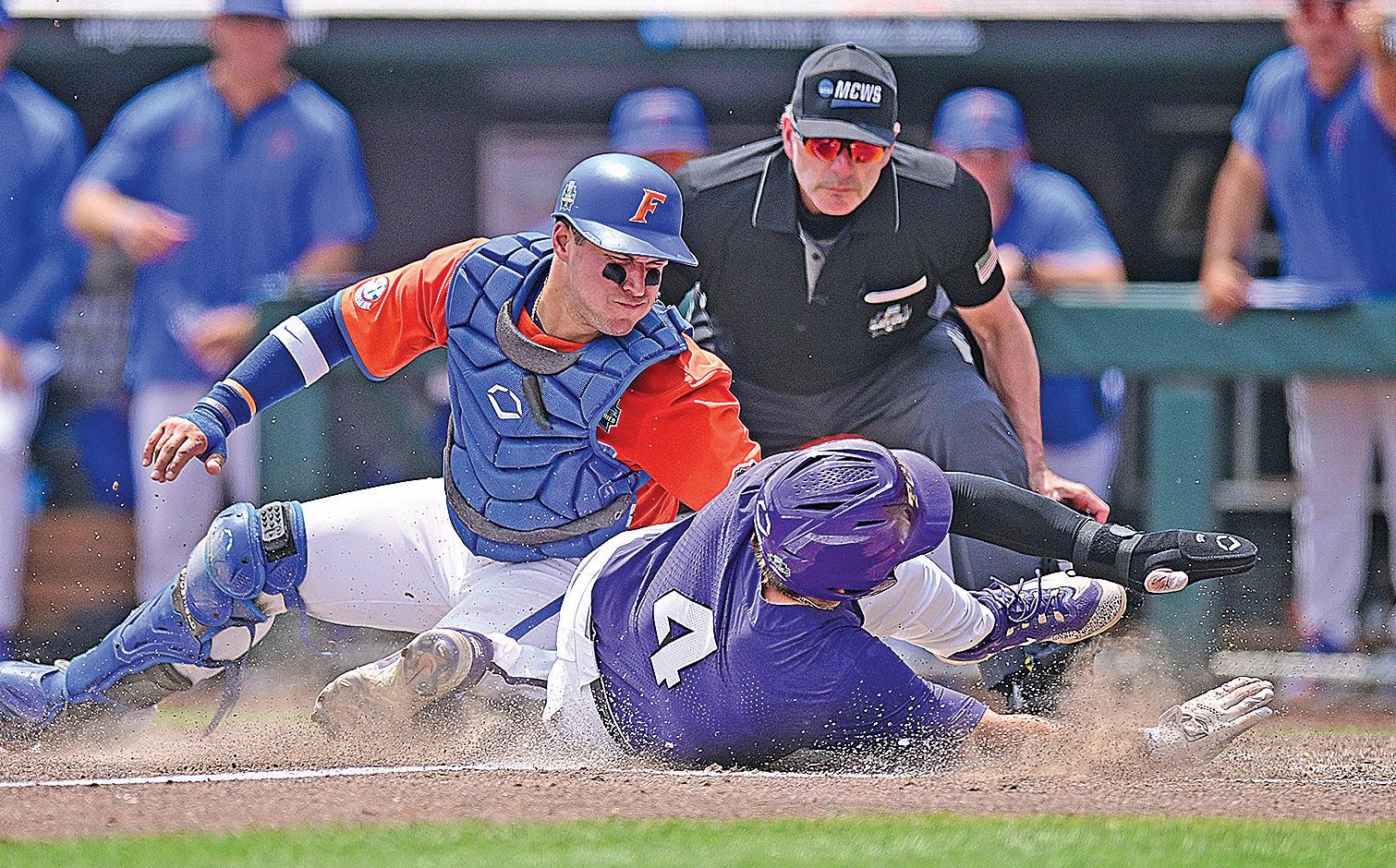
Angel Campos, 49, of Tucson, Ariz., the dean of professional experience having worked 585 MLB games, but an MCWS rookie who works primarily in the Pac-12.
Brandon Cooper, 46, of Louisville, Ky., a former professional and longtime SEC umpire making his MCWS debut.
Je Head of Hoover, Ala., another former professional and longtime SEC umpire making his fourth MCWS appearance (2011, 2014, 2017) and one of the two crew chiefs for the 2023 event.
Casey Moser, 45, of Lago Vista, Texas, a former MLB callup umpire who now works in the Big 12 Conference and an MCWS rookie.
Travis Reininger, 47, of Brighton, Colo., a former MLB callup umpire who now works in the Pac-12 and an MCWS rookie.
David Savage, 58, of Lawrenceville, Ga., the lone amateur umpire on the 2023 crew, an SEC stalwart and the MCWS elder statesman making his fifth appearance (2010, 2013, 2016, 2019).
Billy Van Raaphorst of San Diego, Calif., a five-year pro and Pac-12 veteran making his fourth MCWS appearance (2014, 2018, 2021), this time as a crew chief.

REFEREE October 2023 | 61
ReiningerMoserSavage Van Raaphorst
JOSHUA R. GATELY/ESPN IMAGES, COURTESY OF BILLY HAZE
HeadArmendarizCamposCooper
KNOW WHERE TO ‘B’ TO ‘C’ THESE PLAYS
Proper Starting Positions a Must in the Middle
By Chris Marshall
Umpires at all levels are constantly looking for ways to improve their game, and most of the time they focus on positioning and mechanics more than anything else. We tend to look past one of the most basic and fundamental aspects of umpiring: starting positions. Many of us don’t realize how important it is as umpires to put ourselves in the best starting position for all possible plays.
I watch a lot of baseball games in person and on video in the two-, three- and four-umpire systems. I have seen many variations of the “B and C” starting positions in the two-umpire system. In this piece, I would like to focus on the two-umpire system specifically. Developing a better understanding of our two-umpire fundamental starting positions in B and C along with quick reactions and meaningful directional steps will help us to make more accurate decisions on the field.
Why Do We Stand in B and C?
In the two-umpire system, the base umpire has a difficult job with responsibilities at all three bases at times. Many of us have heard how it is far more important to establish proper angles over distance from a play. This all starts with proper pre-pitch starting positions in the two-umpire system when we have runners on base. Umpires not only have to make decisions on plays when the ball is put in play, but on pickoffs and steals as well.
Umpire School B
At umpire school, the two-umpire B position is defined as a position halfway between the back edge of the mound and the cutout at second base, on a tangent line from the corner of

62 | REFEREE October 2023 EDITOR: SCOTT TITTRINGTON stittrington@referee.com
BASEBALL RULES, MECHANICS, PHILOSOPHY
HESTON QUAN
When working in the middle of the infield in the two- or three-umpire system, being close to the mound is a plus, as it opens up angles on difficult-to-see plays around the infield. Chris Hart, Laguna Niguel, Calif.
home plate through the first-base side of the mound. Umpires are instructed to “put their belt” in the middle of that tangent line in the grass, once again at the midpoint between the cutout and the back edge of the mound, square to home plate. This position establishes the best possible starting position considering all the possible plays an umpire in the two-umpire system will encounter throughout the game.
C Position Made Easier
When we look at the two-umpire C position, for some reason, umpires tend to set up much deeper than they do in the B position. Here is a quick tip: B establishes C. Distance wise, if you know what the proper B position is, the C position should be the same, just on the other side of the field once you find your tangent line. The moral is simply this: Find the midpoint and the tangent on both sides of the mound and you will always be in a perfect umpire school two-umpire B and C position.
Shallow vs. Deep
When the ball is put in play, umpires have time to move in the direction of plays, establishing the proper angle and distance we all desire. However, when we start to
take a look at pickoffs, steal plays and back ends of double plays, the element of time is shortened. In most cases, we only have a half step or a step or two to establish those proper angles. We now must sacrifice the distance toward a play for the best angle.
When we take a look at umpires who set up deeper in the B position, we notice the angle an umpire gets to see the pickoff at first base is usually looking through the runner sliding back into first base. These plays happen fast, so the reality is we will only get a half step or possibly a quick full step on these plays before we make a decision. It is important to put ourselves in a position closer to the back edge of the mound so that with a directional step toward the 45-foot line our look and angle on this pickoff is better.
This concept also holds true with the back end of a double play when starting in the B position. Most of the time, the most difficult decision we have to make is the back-end call at first base on the double play. When we step up, turn and face the ball for the front end of the double play, we have gained a small amount of distance toward the initial play at second base. Next, with a drop step and a step and a half toward the 45, we are now positioned to make that call at first base. A deeper starting position in B creates a straight-line view of that play, especially in cases where the first baseman is pulling in a direction toward the base umpire. We will lose the look at that foot/base relationship.
The Step-Up Theory
THEY SAID IT
“Why don’t they tell the fans that the box on the screen is not the same box that the umpires get graded on and that the box on the screen is supposed to be used for entertainment only?”
Pictured here is the basic starting position for the B and C positions in the twoumpire system. If there is any doubt by an umpire whether he or she has the proper depth, it’s better to step up closer to the mound, creating better angles, than the alternative of taking a step back toward the infield dirt.
So how do we see these plays better? I have talked about the midpoint and tangent as the acceptable starting positions for B and C. This would be a good neutral position to start from — one that puts us in a good spot for most everything, with being deep as the worst spot to be in. I recommend finding that midpoint and taking one step closer to the back edge of the mound.
The disadvantage of that step up would be the distance lost toward the steal of second. Through quicker
— Rich Garcia, former MLB umpire and supervisor, about how television graphics overlaying the strike zone are misleading

SOURCE: TIMESLEADER.COM
A recent Referee poll shows baseball umpires are still very much traditionalists when it comes to the gear they use while working behind the plate, as 71 percent answered they prefer to use a two-piece mask/hat combination when calling balls and strikes, compared to 29 percent who favor the one-piece “bucket” style that resembles the headgear worn by hockey goalies.
BY THE NUMBERS
SURVEY SAYS ... ONE
The amount of times a female professional baseball manager has been ejected from a game by a female umpire. The historic first occurrence took place June 30 when Rachel Balkovec, the skipper for the Tampa Tarpons, the Class A affiliate of the New York Yankees, was given an early exit by umpire Isabella Robb following a discussion regarding a possible pulled foot at first base on the back end of a double play. Robb is in her second season as a minor league umpire. She embarked on her professional umpiring career after attending an MLB umpiring camp in 2018 in Houston.
REFEREE October 2023 | 63
IVY CEBALLO/ZUMA PRESS/NEWSCOM
R1 U1 U1
TEST YOURSELF
In each question, decide which answer is correct for NFHS, NCAA or pro rules. Solutions: p. 85.
1. With a runner on first, one out and a 2-1 count, R1 is stealing on the pitch. B3 swings and fouls the pitch so it bounces directly off F2’s chest protector into the air. F1 dives and catches the ball before it hits the ground.
a. It is a foul tip if the ball goes directly from the bat and lodges in the catcher’s uniform before he gets possession of the ball.
b. Foul ball. Ball remains live, R1 is out.
c. Foul ball. Ball is dead, R1 returns to first and the count is 2-2.
d. Foul tip. Ball remains live and R1 remains at second.
2. R1 slides into second base, making contact with F4. The two players exchange comments that turns into a physical altercation.
a. Any player who leaves his position and approaches second is automatically ejected.
b. Players or team personnel (other than coaches) that enter the field are ejected but not suspended unless they participate in a fight.
c. Coaches are allowed to enter the field to help control the situation and prevent further unsportsmanlike conduct.
d. It is permissible for the players in the dugouts and bullpens to come onto the field in support of their teammates.
3. Which statement about a slide on a force play is true?
a. Contact occurring on top of the base because of a “pop-up” slide is illegal.
b. A slider’s momentum in the vicinity of the base may legally carry him through the base in the baseline extended.
c. On any force play, the runner must slide regardless of his position in relation to the base.
d. None of the above.
recognition of a runner stealing and immediate movement toward your angle on a steal, this should not be a problem.
The step-up theory does two things. It establishes a much better look at the pickoff at first base and on the back end of the double play. A closer starting position paired with proper directional steps toward the 45 will create a better view for both of these plays. Basically, we are prioritizing the two more difficult decisions we have to make from the B position over plays where we have more time to move toward the play.
The Toughest Plays
In my opinion, the two most difficult plays to call in the two- and three-umpire system from the C position are the steals of third and the ball hit to the third-base hole fielded by the shortstop with a subsequent throw to third to retire the runner starting on second. This is where a deep starting position in C can hurt us the most. The common mistake I see is a combination of a “deep C”
position and an umpire creating no angle on this play at third by moving in the direction of third parallel to the baseline. There couldn’t be a worse combination.
I would suggest umpires try the step-up theory in the C position and remember our initial directional step must be in the direction of the 45 to establish the best possible angle on these difficult plays. We will only get a few steps on these plays, so that combination of a starting position closer to the back edge of the mound and directional movement will help us to see these plays much better.
When we think about fundamental starting positions, tweak those positions a bit to consider the most difficult plays to call, and I believe we will find ourselves making better and more accurate decisions on the field.
Chris Marshall, Rochester, N.Y., is president of United Collegiate Umpires and serves as the coordinator of umpires for the America East, Metro Atlantic Athletic and Northeast conferences and the Ivy League.
Master the Intangibles, Rule the World
By Jon Bible
In my career, I participated in countless umpire clinics and camps. Certain topics not related to rules, mechanics or judgment, but every bit as important — intangibles, I call them — are covered in the best ones. I thought I’d summarize some here.
When you take the field, look and act like you mean business. Many umpires assume they’ll be judged based on how they call pitches, plays, etc. What they overlook is perceptions formed when we first take the field can influence how people see us and, in turn, judge our performance.
A longtime collegiate and professional coach once told me if
he doesn’t know an umpire, he’ll form impressions based on how that umpire enters the field and conducts the plate meeting. If the umpire is positive, he tends to give the umpire the benefit of the doubt on calls, but if not, his level of trust goes down and he’s more critical of that umpire’s work. This has always stuck with me. Fair? Maybe not. Reality? Yes.
Watch top-tier officials when they enter the field or court. For the most part, you’ll see flat-bellies who look like they stepped out of a fashion magazine. They’re well-groomed, businesslike, have good posture and don’t chit-chat with everyone; this instantly gains respect. What doesn’t are messy or ill-fitting uniforms; guts hanging over belts; unkempt hair,
BASEBALL 64 | REFEREE October 2023
BILL GREENBLATT/UPI
beards or mustaches; being rigid or, in contrast, acting like it’s a party; and an autocratic, holier-than-thou demeanor.
Be Relaxed and Confident
Some of the most successful officials aren’t the best in rules, mechanics or judgment, but people have faith in them because they come across like they know what they’re doing and nothing can rattle them. They’re not lackadaisical or, at the other extreme, cocky; they have an assured but relaxed air that says, “This isn’t my first rodeo.” They smile and seem to be glad to be there.


Image Is Everything







If you’re not sure whether how you present yourself is a plus or minus, ask a trusted friend for a candid opinion. You may be shocked; I have been. And think about this the next time you bemoan the fact
 Umpires who step on the field to start a game, look the part and show genuine interest in working the game already have a major advantage over those who don’t, even though a ruling has yet to be rendered. Mark Wegner, Plant City, Fla., (left) and Quinn Wolcott, Puyallup, Wash.
Umpires who step on the field to start a game, look the part and show genuine interest in working the game already have a major advantage over those who don’t, even though a ruling has yet to be rendered. Mark Wegner, Plant City, Fla., (left) and Quinn Wolcott, Puyallup, Wash.
Longtime MLB umpire Sam Holbrook brings his years of onfield and umpire school experience to this new video focusing on the mechanics that will take you to the next level in your umpiring career. LEARN MORE STORE. /baseball
the mechanics that $2495
BILL GREENBLATT/UPI
CASEPLAYS
Two Incorrect Batters
Play: The top of the batting lineup is Abel, Baker, Charles, Daniel, Edward. Charles, who had batted leadoff the entire season, is put in the third position for this game. Expecting to lead off, he bats first (not realizing he is listed third) and strikes out. Baker comes to bat next and doubles. The home team head coach appeals that Baker batted out of order. Ruling: The first pitch to Baker legitimized Charles’ at-bat. The next proper batter should have been Daniel, so Daniel is ruled out, Baker is removed from second and Edward would be the next legal batter (NFHS 7-1-1 Pen.; NCAA 7-11a4; pro 6.03b1).
On Your Own
Play: With R1 on first and B2 at the plate, F1 balks and throws wild as he attempts to pick off R1. R1 is thrown out trying to attain third base. Ruling: In NFHS, the ball is immediately dead and R1 is placed at second. In NCAA and pro, the play stands as R1 had advanced one base (NFHS 5-1-1k; NCAA 9-3 Pen. 2 and 3; pro 6.02a AR 1).
Leg Action Play: With R1 on first, running on the pitch, F1 pitches wild and the ball rolls near a dugout. The ball rolls to a stop as R1 touches second. The catcher inadvertently kicks the ball into the dugout.
Ruling: R1 is awarded home. If the ball has stopped rolling or it is clear the ball will not go into dead-ball territory, the award is two bases from the time of the act (NFHS 8.3.3K; NCAA 8-3o4 Note 1; pro 5.06b4H AR).
Go On Play: With R3 on third and one out, B3 hits a pop up in foul territory down the third-base line. F5 makes the catch near his dugout and then steps inside, but remains on his feet. Ruling: B3 is out and R3 is awarded home (NFHS 8-3-3d; NCAA 6-1d; pro 5.06b3, 5.12b6).
Missing Would Be Good
Play: With one strike, B1 swings at a pitch while one foot is touching the ground completely outside the lines of the batter’s box and tips the ball into the catcher’s mitt. Ruling: B1 is out (NFHS 7-32; NCAA 7-10a; pro 6.03a1).
someone you don’t think is deserving is getting better assignments; maybe that’s not a function of sucking up to the assigner.
Be Ready for the First Pitch
The key thing here is focus. A lot of things can disrupt that –unfamiliar surroundings or crewmates, the importance of the game, how we feel, etc. We’ve got to do everything possible to tune this stuff out and zero in on the matter at hand.
I got behind the plate in both halves of the first inning to watch warmup pitches. This gave me a sense of what and how the pitcher threw and the catcher received the ball, and also told everyone I didn’t think I was so good that I could just hop back there and call pitches correctly without preparation. It also helped me to block out extraneous factors and get ready to concentrate on my job.
During a game, we can lose our focus if it drags, people are hooting at us or we think we’re messing up. In pro umpire school, there’s a mantra: On the rubber, get set, call it. When I sensed my mind wandering or that I was having difficulty, I went back to this and it helped me to set things straight.
Never Embarrass Anyone
Maintain self-control; don’t say anything you’ll regret. But never allow anyone to intimidate you. In higher levels of ball, people will vent about a call but usually turn the page quickly. Not in lower levels. Coaches and players are less mature and more prone to pursue grievances endlessly. Speaking from experience, it’s in some respects easier to officiate at the professional and collegiate level than in high school and below.
Top officials are adept at dealing with this reality. They’ve learned how to use winning words to calmly defuse situations instead of fueling fires. They don’t show up coaches or players, make threats, use sarcasm or have to get in the last word. When the situation calls for it, they use a little humor.
Within reason, they’ll listen to
coaches’ gripes with their voice and emotions in check; sometimes they’ll look the other way and tune them out. But they won’t be intimidated. When coaches come on the field, gesticulate wildly or insult them, or players get mouthy, these umpires take care of business. Learning where to draw the line between what should and shouldn’t be tolerated and how to react when it’s crossed are marks of a good umpire. Collegiate coordinators salivate when they see or hear of folks like this.
Be Brave Enough to Make the Gutsy Call
I’ve joked that when umpires say, “I want the tough call to come to me,” I say I want it to go to them as well. Kidding aside, another mark of top umpires is they’re not hyper-technical but they also won’t ignore an infraction that puts a team at a disadvantage, no matter how much heat it brings. If there’s a tight situation, they’ll step up, even at the risk of being yelled at or red-lined. In my career, I’ve worked with umpires who tried to stay under the radar, call balls and strikes, safes and outs but little else, and just collect their fee and go home. They’re cheating everyone.
Have Your Partner’s Back
Few things are worse than umpires who won’t, for example, help their partner if they’ve ejected someone by getting that person away or calming down a raucous dugout. That’s happened to me, and it wasn’t pleasant in the locker room afterward. We’re the only friends we’ve got out there — even if we don’t like each other — and we can’t sit back if a crewmate is in trouble and think, “Let him fend for himself because they’ll yell at me if I get involved.” Umpires such as this quickly, and deservedly, get the reputation of being someone others don’t want to work with.
Jon Bible, Austin, Texas, worked seven NCAA Division I College World Series. In 2019, he was inducted into the National College Baseball Hall of Fame in Lubbock, Texas.
66 | REFEREE October 2023 BASEBALL
5 MINUTES WITH ALEX SKANDALIS Two
Steps? Not So Fast
Life is made easy for umpires when the NFHS, NCAA and pro rule codes all agree on a specific element of the game. However, when they diverge, umpires can be caught in the unenviable position of having to explain why what works at one level is not OK at another.
A perfect example is the requirements for a legal windup position by a pitcher. Gone are the days where every pitcher lined up in similar fashion on the pitching plate, took a noticeable step backward with the nonpivot foot, rotated on the pivot foot and delivered the pitch. The proliferation of specialized position coaches at lower levels means amateur players are being exposed to a variety of techniques when it comes to footwork after beginning the windup, and not all of them are legal for pitchers at all levels.
For instance, according to NFHS rules, during a windup delivery, the pitcher may lift the non-pivot foot in a step forward, a step sideways or in a step backward and a step forward, but the pitcher shall not otherwise lift either foot (6-1-2). In other words, a pitcher, by rule, may make two steps forward during his delivery, utilizing a forward “rocker” step instead of the traditional backward step, then stepping forward again toward the plate in the release of the pitch.
However, this type of two-step is not allowed by NCAA or pro rules. The NCAA code specifically states the pitcher may not take a second step toward home plate with either foot in the delivery of the pitch (9-1a). Given the pitcher must step forward during his release of the ball, that initial rocker step toward the plate is not legal. It may be to the side or to the back, just not forward. The pro rule states that in the pitcher’s actual delivery of the ball to the batter, he may take one step backward and one step forward with his free foot (5.07a1). In other words, the same prohibition exists on taking two steps forward during the course of the windup.
United Umpires VP dishes on maintaining umpiring standards.

Age: 39
Resides: Las Vegas
Experience: Executive vice president and chief financial officer of the United brand, which hires and instructs college and travel baseball umpires throughout the eastern half of the United States. Former NCAA umpire who worked in the American and Big Ten conferences and the Colonial Athletic Association. Worked the 2015 NCAA Division III College World Series.
REFEREE: Given the ongoing shortage of available umpires, have you noticed assigners starting to cut corners and lowering standards as far as what they require out of an umpire who works for them?
SKANDALIS: I think it’s twofold. I think, No. 1, we certainly see people are just happy to have bodies at times. There’s just so many things that 10 or 15 years ago we wouldn’t have accepted that have crept into the level of acceptability just because I think there’s a need to have a body there. And then when you look at it from the official’s standpoint, I do see sometimes that attitude of, “They need us.” And if we show up five minutes before game time or don’t do everything that we’re supposed to, what are they going to do?
REFEREE: Have you and your co-workers changed the way you do business, given these changing attitudes, or have you made an effort to hold the line and say, “These are our standards and if you don’t meet them, you will not work for us?”
SKANDALIS: I think the first time behavior like this occurs — lateness, attitude issues, things like that — it’s almost kind of like we take responsibility for that. We’ve put you
out there and if our staff felt there were certain things that maybe we didn’t need to cover soup to nuts to get you on the field because we just expect those things, well, if what we expected didn’t happen, we’re going to take a step back and say, “OK, we didn’t clearly outline exactly what we were looking for. Our mistake. Now we’re going to go ahead and do that.”
REFEREE: It sounds like a key piece in this is simply educating a new generation of umpires in the proper way of doing things?
SKANDALIS: I do think the culture of all that has changed in the last five years. So those umpires that have moved through the ranks more recently, they were brought up in a different umpire world than you and I were. So we realize that, make an adjustment, start to talk more specifically about, these are the standards. These are the things we need from you not only on the field, but probably the bigger emphasis is this is what we need from you in the 24 hours before a game happens and the six to eight hours after a game happens.
REFEREE: How important is it for the umpires who do know better to set and uphold the example when it comes to the right way to handle your business as an official?
SKANDALIS: I think it is important. And I also don’t think it takes much more than just setting the standard by doing it yourself. If you’re one of those that has been around and knows what it’s supposed to look like, it’s not hard to give back to your group a little bit and say, “Hey, I’m just going to be a good example.”
REFEREE: Should we have greater expectations out of the schools and the organizations to take better care of umpires so that some of these behaviors don’t continue to occur?
SKANDALIS: There has to be somebody who can encourage good behavior and how to treat officials. I know Dana Pappas and the NFHS recently put out a video on what officials’ treatment should look like. I thought it was very good from the standpoint of locker rooms, escorts to games from the locker room to the field and things of that nature. So that’s one side of it. And then from the other side of it, I think you need to have more coordinators and assigners that are pushing for locker rooms, and then asking their officials, “Hey, we’re trying to make this better for you.”
COURTESY OF ALEX SKANDALIS REFEREE October 2023 | 67
PITCHING RULES NO LONGER A DRAG
Major NFHS Rule Change Allows Pivot Foot Disengagement
By Brad Tittrington
The NFHS Softball Rules Committee approved a major rule change for the 2024 season, allowing pitchers to disengage both feet from the playing surface, provided the pivot foot is not replanted prior to delivery of the pitch. This change was one of seven the committee made during its annual meeting in June in Indianapolis. Those changes were subsequently approved by the NFHS Board of Directors. The rule changes
are presented in perceived order of importance.
Special thanks to Sandy Searcy, NFHS director of sports and staff liaison for softball, for reviewing this article.
“The NFHS Softball Rules Committee assesses and minimizes risks, to the extent consistent with the sound traditions of the sport, advances in technology, and the balance between offense and defense,” Searcy said. “This year, the conversation was particularly

robust. The Softball Rules Committee conducted a thorough examination of data supplied by state associations, coaches and umpires related to the analysis of rules proposals.”
Pitching Regulations (6-1-2c, 2-47)
The committee made a major change to the pitching rules regarding the pivot foot during the delivery of a pitch. Previously, pitchers had to keep their pivot foot in contact with the ground (or at the same height as the level plane of the pitching plate
SOFTBALL RULES, MECHANICS, PHILOSOPHY 68 | REFEREE October 2023 EDITOR: BRAD TITTRINGTON btittrington@referee.com
COURTESY OF MHSAA
A major rule change allows pitchers to disengage both feet from the playing surface, as shown in this photo, provided the pivot foot is not replanted prior to the delivery of the pitch. Previously, the pivot foot was required to remain in contact with the ground or it was an illegal pitch. Frank Mar, Davison, Mich.
if a hole had been created) when delivering a pitch. The new rule allows pitchers to have both feet off the ground at the same time, as long as both feet remain within or partially within the 24-inch width of the pitching plate and the pitcher does not replant the pivot foot.
“The NFHS Softball Rules Committee recognized that a majority of the membership was in favor of this change,” Searcy said. “The committee determined that a pitcher who has their pivot
foot airborne or has it remain in contact with the ground provides no advantage. NFHS softball rules have traditionally allowed for flexibility to accommodate the differing skill levels of high school athletes. This change allows for exploration of different styles of pitching during student-athletes’ developmental stages. For umpires, the rule change allows for focus on when the replant of a pitcher’s pivot foot occurs, versus whether the pivot foot remains in contact with the playing surface.”
The committee also added a definition of a replant in order to give guidance on the new rule. The new definition states a replant of the pivot foot occurs when the pitcher pushes off the playing surface from anywhere other than the pitcher’s plate prior to the act of delivering the ball (2-47).
Guidance for umpires in determining the legality of the pitch can be summarized this way: If a pitcher has separated the hands and the throwing motion continues uninterrupted prior to the pivot foot landing, the pitcher has not violated the rule. If a pitcher keeps the hands together until the pivot foot has landed or separates the hands and stops the forward motion of the pitching arm prior to the pivot foot landing, it is an illegal pitch.
Play 1: F1 takes a position on the pitcher’s plate with the pivot foot in contact with the pitcher’s plate and the non-pivot foot behind it, both within the 24-inch width of the pitcher’s plate. F1 takes a sign from the catcher, brings the hands together, then separates the hands while striding forward with the non-pivot foot. F1 then pushes off the pitcher’s plate with the pivot foot, loses contact with the ground with both feet and then lands with both feet as the arm passes through the hip to release the pitch. Ruling 1: Legal, provided the forward motion of the pitching arm did not stop once the hands separated and the feet remain within or partially within the 24-inch width of the pitcher’s plate.
Play 2: F1 takes a position on the pitcher’s plate with both feet in contact with the pitcher’s plate and
DID YOU KNOW?
Three Americans were selected to participate in the WBSC Women’s Softball World Cup, which took place July 11-26 in multiple countries. For the opening round played in Valencia, Spain, Naomi Erdahl, Bismarck, N.D., was selected to umpire. For the opening round played in Castions Di Strada and Buttrio, Italy, Steve McCown, Wylie, Texas, was selected to umpire and Christina Drumm, Oceanside, Calif., was selected as the umpire director.
QUICKTIP
Leagues and conferences often have special rules for ending games, such as mercy rules, halted games due to weather and drop-dead times due to travel or field availability. Umpires should review these rules during the lineup exchange with coaches at home plate and they should be acknowledged and agreed upon by both coaches. For situations involving a drop-dead time, the plate umpire should note the time in the lineup card holder. There should be no surprises when it comes to how and when a game ends.

THEY SAID IT
“I would tell anyone who is considering umpiring that the first two years are the roughest. You must remember that no one is perfect; we all miss calls. The important qualities are a passion about the sport, the want to constantly improve, learn to become better and a steadfast belief in yourself.”
— Greg Heitkamp, Kent, Minn., who was recently inducted into the McQuade Tournament Hall of Fame. McQuade is the largest nonprofit, weekend slowpitch softball tournament in the U.S.
SOURCE: WAHPETON (N.D.) DAILY NEWS

REFEREE October 2023 | 69
TEST YOURSELF
Each of the following includes a situation and possible answer(s). Decide which are correct for USA, NFHS, NCAA or USSSA rules and which might vary. Solutions: p. 85
1. With R1 on first, B2 hits a sharp ground ball single to right field. R1 touches and rounds second base and heads for third. Her helmet starts to come loose and R1 intentionally flips it off her head as she nears third base.
a. Legal play, no penalty.
b. A team warning shall be issued and the next player not properly equipped will result in that player and the coach being restricted to the dugout/bench for the remainder of the game.
c. R1 is immediately ruled out, but the ball remains live.
d. The ball is immediately dead and R1 is ruled out.
e. The coach is given a warning and all subsequent violations result in the ejection of the head coach and the player restricted to the bench.
2. With R3 on third, R2 on second and R1 on first with two outs, B6 hits an over-the-fence home run. The defensive team wishes to appeal B6 missed first base while the ball is dead. Who is allowed to make the dead-ball appeal?
a. Any infielder.
b. Any outfielder.
c. A coach.
d. The official scorekeeper.
3. With the bases loaded and two outs, B6 hits an over-the-fence home run. In her exuberance, B6 misses first base. If the defense properly appeals B6 missing first base, how many runs score?
a. 0
b. 1
c. 2
d. 3
e. 4
4. B3 hits a high foul fly near the third-base dugout. F5 reaches into the dugout to catch the ball but is prevented from doing so by offensive team dugout personnel.
a. A foul ball is ruled and B3 is returned to bat.
b. Interference is called and B3 is out.
both feet are partially within the 24-inch width of the pitcher’s plate. F1 takes a signal, steps back with the non-pivot foot while bringing the hands together, then takes a step forward with the non-pivot foot. F1, while the hands are still together, pushes off the pitcher’s plate with the pivot foot and disengages both feet from the ground. F1 then lands on the pivot foot, separates the hands and delivers the pitch. Ruling 2: Illegal. The pitcher may not replant the pivot foot before delivering the ball. In this situation, the pivot foot lands before the hands separate, which begins the pitch, and therefore is illegal. Umpires should verbalize illegal pitch and give the delayed dead ball signal.
Other Equipment (1-8-6)
An update to this rule permits electronic information to be transmitted to the dugout from anywhere outside of live-ball area. The rule still requires electronic devices used for coaching purposes to remain in the dugout, but it no longer stipulates where the video is recorded or how it is transmitted, as long as it comes from outside liveball area. Previously, all recorded and transmitted electronic information had to come from the dugout, but policing such activity was nearly impossible. The rule now allows more freedom for teams to record, but the actual use of the material related to the player’s or team’s performance must still be done in the dugout.
Play 3: Team A’s coach has an iPad in the dugout that is receiving video from a camera (a) mounted on the backstop, (b) on a tripod beyond the center-field fence, (c) on a tripod on top of the dugout, or (d) held by a parent in the stands. Ruling 3: Legal in all cases. All of these cameras are located outside live-ball area and it is legal to transmit the data to the iPad within the dugout.
Play 4: Team A’s coach has an iPad in the third-base coaching box. During play, the coach is using the iPad to (a) scorekeep, (b) take photos of the batter, or (c) record video of the game. Ruling 4: Legal in (a), illegal in (b) and (c). A coach in the coaching box is prohibited from having any devices, other than those used for scorekeeping. Recording or taking photos from live-ball territory is prohibited. The first offense is a team warning and the next offense results in the individual being restricted to the dugout for the remainder of the game or ejected.
Infractions by Pitcher (6-2-2)
The committee clarified the rule to distinguish the difference between tape and other non-approved substances on the pitching hand or fingers versus the use of approved substances under the supervision and control of the umpires. The rule clarification allows pitchers to use dirt, powdered rosin or an approved drying agent — such as Gorilla Gold — and does not require the pitcher to


SOFTBALL 70 | REFEREE October 2023
LEGAL ILLEGAL
wipe off before contacting the ball. Note the company that produces the Gorilla Gold products has recently come out with a product designed for golf that is more tacky and leaves a residue on the ball. The photos on the previous page illustrate the different packaging of the two products. The product on the right is still illegal in NFHS play and umpires need to make sure if a pitcher is using Gorilla Gold, it is the product designed for softball use.
Play 5: The pitcher receives the ball from the catcher and (a) picks up some dirt from the ground and then drops it, (b) picks up the rosin bag and squeezes it, (c) touches a towel in her back pocket that has Gorilla Gold on it, or (d) licks her fingers. The pitcher then immediately touches the ball. Ruling 5: Legal in (a), (b) and (c). However in (c), if the Gorilla Gold leaves a residue on the ball or the umpire suspects the towel has something other than the softballapproved Gorilla Gold, it would be illegal, the towel would need to be removed and an illegal pitch would be enforced. In (d), it would be an illegal pitch. Pitchers must still wipe off after licking their fingers before going to the ball.
Play 6: After a foul ball out of play, the pitcher receives a different ball from the umpire. The pitcher feels the ball is too slick, touches the ball down to the ground and rubs it in the dirt near the pitching circle. Ruling 6: While it is legal for a pitcher to touch the dirt and then go directly to the ball, this act by the pitcher has the ability to deface the ball. The umpire should inspect the ball and if the umpire feels it necessary, require the pitcher to exchange softballs with the umpire.
Ending a Game (4-2-7, 10-2-3e, h)
The committee added a new rule that allows umpires to call or end a game due to conditions becoming unacceptable to continue play in addition to those listed in 4-2-2. The conditions in 4-2-2 include weather conditions and darkness. This new rule allows umpires to end a game if conditions become unacceptable to continue play and cause increased
5 MINUTES WITH ANDI OSTERS



Residence: East Lansing, Mich. Experience: Michigan High School Athletic Association assistant director, former administrator for Michigan State University Intramural Sports Department, coached softball for six years, served on NFHS Volleyball Rules Committee from 2016-19.
REFEREE: How would you describe your first year as chair of the NFHS Softball Rules Committee?
OSTERS: Honestly, my first year was terrific. Despite a bit of nervousness going in, I was so impressed by the knowledge and expertise of everyone in the room. I felt lucky to lead our group. Sandy Searcy from the NFHS staff made the entire process seamless; much of our experience was a credit to her preparedness.
REFEREE: How would you describe the current state of softball at the high school level?





OSTERS: As a former player, I think the game provides a spectacular setting for team sport. Very competitive, very fun, very strategic. I love that the game continues to get faster, allowing our young athletes to showcase their skills and creating a cool atmosphere for fans.
REFEREE: What are you most excited about in your role as the chair?
OSTERS: I’m most excited to shape the future of softball, and to build relationships with our committee members who are all passionate advocates for high school sports.
REFEREE: Is there a specific goal(s) you hope to accomplish in your time as chair?
OSTERS: I’m excited to see us become more permissive in some areas; specifically on items like uniform and jewelry requirements, as well as loosening restrictions on pitching mechanics. These changes encourage more young people to learn our game and become lifelong fans of softball.
REFEREE: Officiating across the board in all sports has seen a decline in numbers. Is there something you’d like to see implemented to help increase those numbers or an idea you have to help grow numbers back to where they were pre-COVID?
OSTERS: Parents need to understand the crisis we’re in and change their collective attitudes about amateur officials. That sounds pretty
simple, but our adult fans are the problem. I’d like to see schools and coaches implement training for team parents that involves a sportsmanship angle — something that really draws bright lines about program culture and creates a zero-tolerance policy for abuse of umpires.
REFEREE: Is there something you’d like umpires to know about the rules process that you think they may not be aware of, or they have misconceptions about?
OSTERS: I think it’s fascinating to know who and what is represented in the room during NFHS committee meetings. Along with section representatives, the NFHS invites and consults with representatives from USA Softball and the NCAA, along with several nationally renowned rules interpreters who serve in non-voting advisory roles. Those voices provide excellent perspectives for committee members, especially when questions arise about how other codes settle certain nuanced situations.
REFEREE: Is there anything about the process that you were not aware of before becoming chair? Maybe something that you were pleasantly surprised to find out about?
OSTERS: I was pleased to find that the other committee members in the room came to the table with focus and commitment, for all three days of our time together. I think it’s so rare to see a group like this completely engaged in conversation and attentive to detail — they really worked hard to accomplish our agenda. I’m already excited to work together in 2024.
REFEREE October 2023 | 71 COURTESY ANDI OSTERS
First-year NFHS Softball Rules Committee Chair discusses role.
CASEPLAYS
Interference With Thrown Ball?
Play: R3 is on third base with two outs in the bottom of the seventh inning in a tie game. B4 hits a slow roller in fair territory down the third-base line. F1 fields the ball and her only play is at home. In throwing home, the ball strikes R3 in the back while R3 is in the baseline. The ball ricochets into foul territory and R3 scores the winning run. The plate umpire rules no interference occurred and the game is over. The defensive team’s coach argues R3 is out for interference because she interfered with a thrown ball. Ruling: The umpire’s ruling is correct. The runner simply running in the basepath in this situation and getting hit by the ball does not constitute interference. The runner would have to veer to intentionally get hit by the ball, raise an arm or do something out of the ordinary in order to be ruled for interference. It would also be interference if the runner contacts the fielder trying to make the throw. None of those things occurred, so the ruling of no interference is correct and the game is over (NFHS 8-6-10d; NCAA 12.17.2.2, 12.17.2.3; USA Softball 1-Interference, 8-7J-3; USSSA 8-18F).
Intentionally Dropped Ball
Play: With one out and R1 on first, B3 hits a pop up in front of F6. As F6 settles under the ball, she uses the backside of her glove to manipulate the ball to the ground with her glove.
Ruling: In NFHS and USSSA, the ball is dead and B3 is declared out. R1 must return to the base occupied at the time of the pitch, which would be first base in this situation. Such a manipulated batted ball is considered an intentionally dropped ball in those two codes (NFHS 8-210, 8.2.10B; USSSA 8-17C, Casebook Sit. B pg. 38). In NCAA and USA Softball, there is no violation and the play stands. An intentionally dropped ball cannot legally be called unless in the judgment of the umpire the ball is first legally caught and then deliberately dropped by the fielder (NCAA 11.17.1; USA Softball 8-2K, R/S 30).
risk to participants. Some examples would include wildfires or police activity in the area or a medical emergency.
Play 7: In the top of the third inning, (a) a wildfire nearby sends thick smoke and ash to the field, (b) a train derails nearby, sending chemicals into the air near the field, or (c) a police chase ends with a standoff at a house next to the field. Ruling 7: In all three cases, the umpires have authority to call the game. It would then be up to the state association to determine how to handle the halted game and its results.
Uniforms, Player Equipment (3-2-5 , 3-2-7, 3-3-2)
This rule change clarifies where a player can wear a wristband with a playbook/placard. The rule clarifies players may only wear them on the wrist or arm. They may not wear them on a belt, but players may keep them in their back pocket. If a pitcher uses a wristband with a playbook, it must be worn on the non-pitching wrist or arm. The committee removed the color restrictions from headbands and ribbons. In the past, headbands and ribbons were governed by the same color restrictions as other headwear, such as caps and nonplastic visors. Now, teams can wear different headbands and ribbons to celebrate special events, such as cancer awareness, without restriction.
Play 8: Some players from team A are wearing pink ribbons and headbands for a Strike Out Cancer event. Other members of the team are wearing a mixture of black and white
caps and non-plastic visors. Ruling 8: Legal. The color restriction now only applies to caps and non-plastic visors, which must be white, black, beige or school colors. The colors of those items are not required to be the same for all team members.
Play 9: For a Strike Out Cancer event, multiple team A players are wearing pink bandannas. Ruling 9: Illegal. Plastic visors and bandannas are still illegal as they pose an injury risk to players and must be removed in order to participate.
The final rule change the committee approved goes into effect beginning Jan. 1, 2027, and clarifies uniforms may only bear a single manufacturer’s logo, school name, school logo, mascot and/or the participants name. Items such as advertisements, messages, team slogans, etc., will no longer be permitted. The NFHS has established consistent language for all sports that describes what information is permitted on uniforms and this rule change reflects that language.
Play 10: Team A is hosting a Strike Out Cancer event during one of its games. The team has pink uniforms with black lettering and the phrase “#K’s FOR CANCER” on the back of the shirt where the nameplate is located. Ruling 10: Starting Jan. 1, 2027, this would be illegal as messages will no longer be allowed on team uniforms. Prior to that date, these uniforms would still be legal. Brad Tittrington is an associate editor for Referee. He umpires D-I softball and officiates women’s college and high school basketball, college and high school volleyball and high school football.
Between Innings Basics
Umpires are often their own worst enemies when it comes to wasted time. And part of that wasted time is umpires not assuming the proper positioning between innings as prescribed by the manuals (illustrated in the MechaniGram on the next page).
The plate umpire should either be first- or third-base line extended,
facing the dugout of the team coming to bat. The plate umpire should be 8-10 feet away from the plate to allow the pitcher and catcher to work freely and stay out of harm’s way.
The base umpire should be off the first-base line approximately 15 feet on the edge of where the grass starts. Depending on fielders, the
SOFTBALL 72 | REFEREE October 2023
base umpire may need to adjust the position slightly. The base umpire should be facing the infield and be prepared to hustle the fielders on and off the field between innings.
These are the mechanics as outlined in each of the codes’ manuals. There will be times when umpires need to grab a drink of water or retrieve game balls from a dugout, but otherwise umpires should adhere to these mechanics.
Remember, you still have a responsibility to make sure the time-between-innings rules are not violated or a pitcher does not throw more warmup pitches than allowed by rule.
There is also a responsibility to make sure the offense doesn’t violate any rules either, by either having too many players in the on-deck circle or players warming up in the infield area. These are safety rules that can easily be missed if umpires are not in their prescribed positions.
No matter how many games you’ve worked there’s still STUFF nobody told you. Until now! Referee has collected all the STUFF you need to know to polish your game and present a professional image. Don’t work another game without all this valuable STUFF.

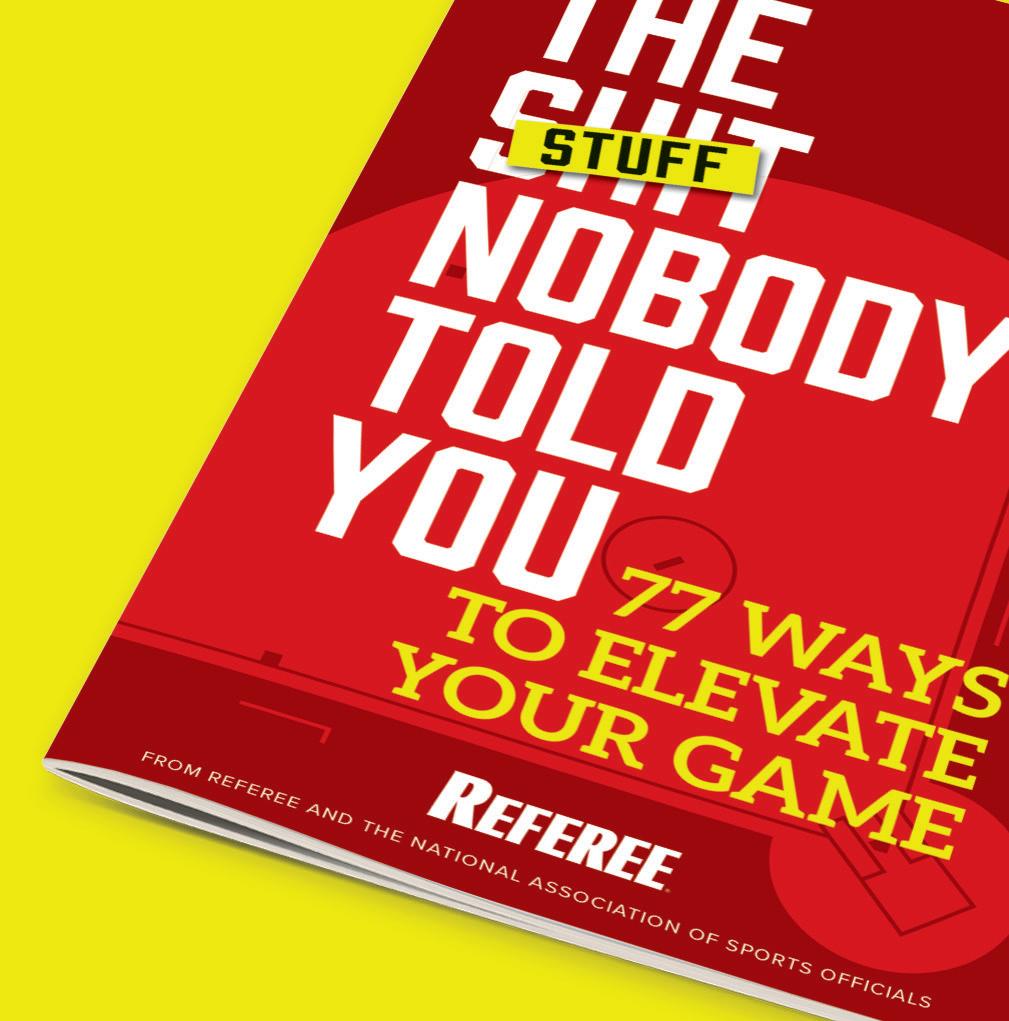

$395* DIGITAL $795 COMBO
PRINT $595*









B
P B Approximately 15 feet 8-10
This team is coming to bat
feet
learn more at STORE. /SOFTball *NASO member discount available.
8.5”
Size: 5.5” x
Pages: 32 SOFTBALL
PROFILES PERSONALITIES PLUS
Guest of Honor Never Saw Ceremony Coming
By Ray Hamill humboldtsports.com
Longtime basketball official Alan Mendes of Fortuna, Calif., was honored in January for his 40 years of service to the local sports community, and he had no idea it was coming.
“I was totally surprised,” said Mendes, who admitted he was a little teary eyed when his fellow Six Rivers basketball officials presented him with a plaque to commemorate the milestone achievement and introduced him to the crowd before a game between Eureka and South Fork high schools. “I wasn’t expecting anything of the sort,” he said. “I was very honored.”
It was well-deserved recognition for someone who has not only been an integral part of high school basketball on California’s North Coast for the past four decades, but someone who is among the most respected officials in the area.
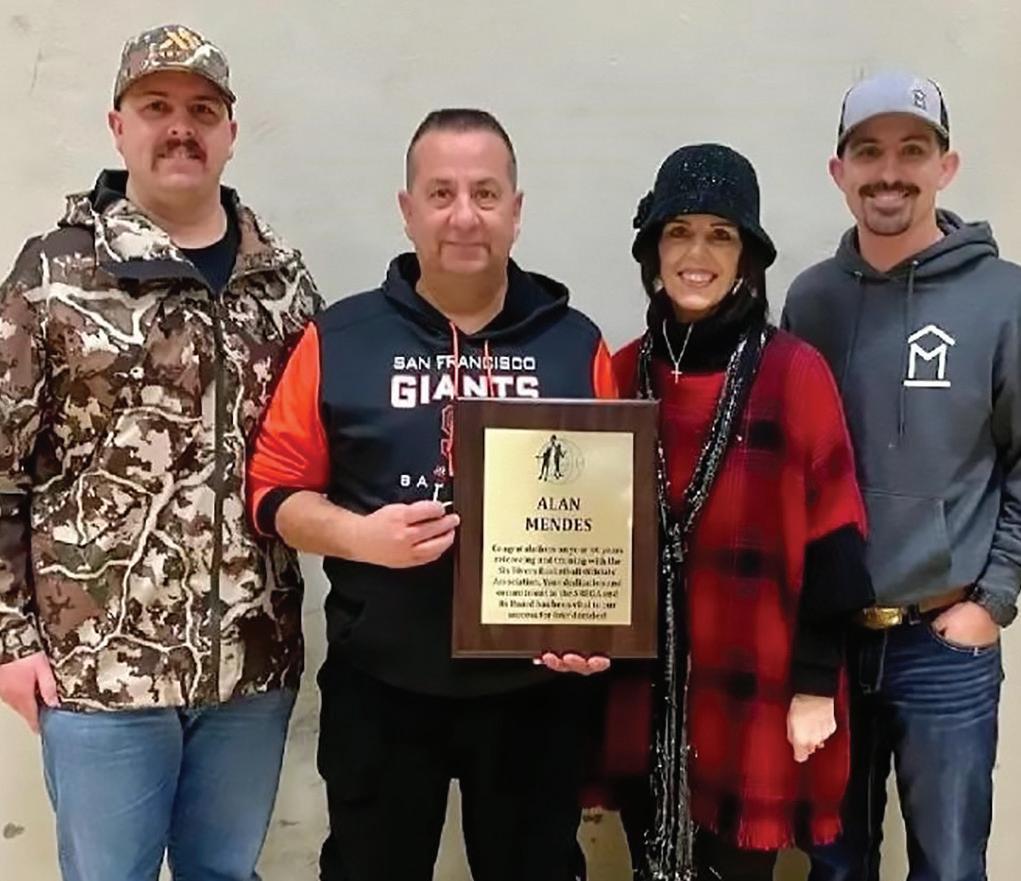
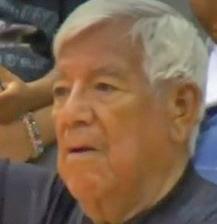
“There’s a lot of respect for him, not only for his knowledge of the game, but for the way he calls a
game,” Six Rivers Basketball Officials Association Commissioner Mike Harvey said. “He brings a passion and really cares, and when they see Alan coming in, they know they’ve got a good official that will keep them on their toes.”
For Mendes, it all began when he was still a student at Fortuna High back in the early 1980s. He played basketball before high school and tried out for his high school team as a freshman but failed to make the team.
“That’s when I realized I had other talents and started officiating junior high basketball,” he said.
After graduating from Fortuna in 1983, he joined the Six Rivers association and has “been going ever since,” he said.
Mendes’ ties to the local community go well beyond the basketball court. He worked for the Humboldt County Sheriff’s Department for 22 years before retiring in 2019 and has been a member of law enforcement for 36 years. When he’s not officiating basketball games, he works part-time as a reserve police officer in Ferndale, Calif.
In addition to his many years officiating basketball, Mendes also has umpired youth baseball and city league softball, but admits he feels more at home on the court.
“The rulebook for baseball is extremely complicated,” he said. “There’s so many ‘what ifs.’”
His wife of 32 years, Shelly, and sons Travis and Tanner — the latter of whom is also a local basketball official — were all on hand for the presentation.
“I teared up,” Mendes said. “It was emotional for me. My entire family was there. It was a great honor and very much unexpected. It’s never been about me. I’m out there for the kids, the players, the fans, the coaches, and that’s how it’s always been since I started.”
Ray Hamill writes for humboldtsports. com, based in Northern California.
Nonagenarian Referee Calls It a Career
Joe Galvan Oviedo, Fla.
For more than half of his life, Joe Galvan spent afternoons and evenings running around basketball courts, baseball diamonds and softball fields in Florida. But in February, he decided 47 years was enough. And so the 91-year-old worked his final game.
“I’m really sort of sad that this is the end of my career,” he told Orlando’s WKMG-TV. “But you’ve got to move on.”
Galvan said what he’ll miss most is the friendships made and camaraderie that comes with working with other officials.
“I look back on my years and I say, ‘Hey, I had a lot of fun. I did it because I like the game,’” he said.
SOURCE: WKMG-TV
Deafness Can’t Deter This Softball Umpire

Tim King Scottsdale, Ariz.
Deafness has never prevented Tim King from doing what he loves to do. And he’s darn good at it. He umpired three straight state softball championships in his native Tennessee and is now plying his trade in Arizona.
For more than 30 years, King has officiated softball, baseball, basketball and football. For the most part, he communicates to players and coaches through signaling and lip reading. “I’ve had no problems,” King said.
In fact, players on one high school team are fluent in American Sign Language.
King credits his love of sports and the people he has met as the reasons behind his long career.
SOURCE: AZ PREPS 365.COM
Do you know a person or group who should be profiled?
Send info to us at profiles@referee.com
74 | REFEREE October 2023
Alan Mendes (second from left) displays the plaque he received at a surprise ceremony marking his 40 years of officiating. Joining him were (from left) son Travis, wife Shelly and son Tanner.
PLAY IT FORWARD
You are part of an exclusive community of sports officials. Our nation’s sports cannot be played without you. Make sure you continue to advocate and protect yourself – and the future of our great avocation –by joining NASO today!
$6 million officiating liability insurance coverage ($14 million aggregate) – the most comprehensive protection available. You’re covered for any sport, any level, any time you officiate!

Huge discounts and cost-savings benefits from Ump-Attire.com, Marriott hotels, car rentals, Referee books & videos and more!
$100,000 in Game Call and Assigners insurance coverage with an additional $15,500 in Assault insurance protection.
Exclusive access to the NASO Member Information and Consultation Hotline. If you have problems in officiating, we are a phone call away!
NASO.ORG/JOINRENEW JOIN or RENEW NASO TODAY AT
Palermo’s First Pitch
Injured Umpire Honored at 1991 World Series
Forseveral reasons, the 1991 World Series is generally regarded as one of the best seven-game showdowns in the last 100 years.

It was the first time in MLB history that both teams, the AL champion Minnesota Twins and NL winner Atlanta Braves, finished in last place in their respective divisions the previous year.
Both teams concluded the 1991 season with almost identical winning records. The Twins went 95-67 with a .586 winning percentage, and the Braves were 94-68 for a .580 mark.
The two clubs had outstanding pitching rotations and several future Hall of Famers. Pitcher Jack Morris, outfielder Kirby Puckett and coach Tony Oliva are in Cooperstown for the Twins, along with Braves manager Bobby Cox, pitchers Tom Glavine and John Smoltz, and general manager John Schuerholz.


But in addition to the great plays and moments that still live on during latenight MLB Network and ESPN replays, for the umpires, one moment before Game 1 shines above all.








MLB honored umpire Steve Palermo for his heroism months earlier in Dallas when he saved the life of a woman in distress, and his life was forever changed.
Palermo slowly climbed out of a golf cart in the Hubert H.Humphrey Metrodome, grabbed his pair of canes and walked onto the field in
By Dan Ronan
front of the pitcher’s mound to throw out the ceremonial first pitch, moments before the game began.
“It was a truly fabulous World Series, and all six of us were honored to work that series,” retired longtime MLB umpire and current supervisor Ed Montague said. “Steve was probably one of my best friends. We went to umpire school together in 1972, and he went into the American League, and I went into the National League. We went to winter ball and we roomed together down in Puerto Rico.”
Six umpires worked the 1991 World Series. Crew chief Don Denkinger had two plate jobs, games one and seven. Harry Wendelstedt, Drew Coble, Terry Tata, Rick Reed and Montague were the others assigned to the series. Combined, the crew would work 23 World Series during their long careers, which in the case of Wendelstedt and Denkinger, stretched back into the mid-1960s.
During his 16-year AL career, Palermo had walked onto an MLB field and umpired 1,871 regular season games, often to boos and jeers. But on this day, 55,108 fans roared their approval as Palermo took the field, wearing a tan sport coat, a crisp white shirt, a blue tie, dark pants and soft-soled shoes, making it easier for him to walk on the rock-hard artificial turf of the multi-purpose stadium, which doubled as the football home of the Minnesota Vikings and the University of Minnesota’s Golden Gophers.
“It brought tears to my eyes. You talk about an emotional scene,” CBS play-by-play man and Hall of Fame announcer Jack Buck remarked during the broadcast. “Look at the affection shown to him by the umpires working the game and the players nearby. He walked out there on his own power, with the aid of those walking canes, and he was roundly applauded by the players when he tossed out the first pitch.”
“It was a touching time for us. Steve lived near me, in Connecticut, for a while,” Tata said. “It was very emotional. He was a great talent on the field. He was so very gifted. It was so good to see him.”
After Palermo threw a strike to a Twins bullpen catcher, the six umpires briskly together walked to the mound to embrace their beloved colleague, and CBS network microphones could clearly hear members of the crew, including Denkinger, Reed and Tata, encouraging Palermo and telling the stricken umpire, “We all love you, Steve.”
It was just three-anda-half months prior, early on the morning of July 7 in Dallas, when Palermo nearly lost his life and saw his steadily rising career as one of the game’s most highly regarded umpires end abruptly.
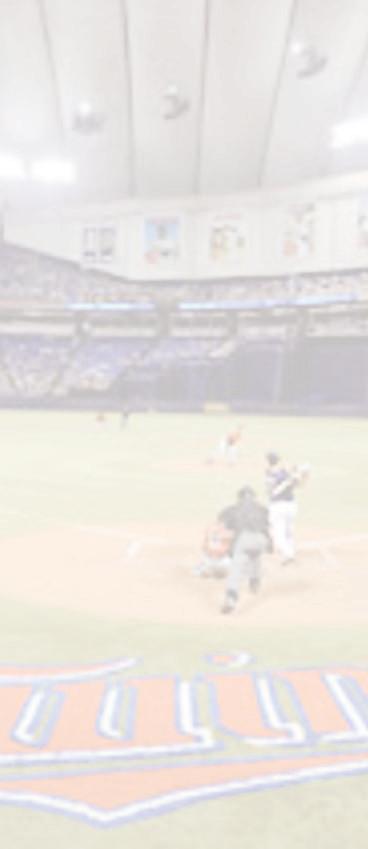
After having worked a Texas Rangers-California Angels game and following a postgame meal, he ran out of a restaurant, attempting to come to the aid of a waitress

76 | REFEREE October 2023
YOU ARE THERE
Denkinger Harry OCTOBER 19, 1991 2834 SEAT ROW SECTION vs
Don
Hubert H. Humphrey Metrodome Minneapolis, Minn.
who was being robbed at gunpoint in a parking lot as she walked to her car near Southern Methodist University.
As Palermo and others in a nearby restaurant ran to assist the woman and chase down one of the attackers, one of the other robbers who fled the scene fired several shots with a .32-caliber gun from a vehicle. A bullet penetrated Palermo’s lower back and damaged his spinal cord.
“And then instantly, I was paralyzed. I just kind of melted into the pavement. I knew right away, ‘Oh boy, this is serious,’” Palermo said in a 2017 interview with National Public Radio before he died later that year.
Palermo was told by doctors at Dallas’ Parkland Memorial Hospital that he would probably be confined to a wheelchair for the rest of his life. Through months of rehabilitation and determination, Palermo
recovered enough to walk with the assistance of a leg brace and canes.
Umpire Rich Garcia had been with Palermo at Campisi’s Restaurant until just before the shooting and left earlier because he didn’t feel well. A few hours later, Garcia was wakened from a sound sleep by a middle-of-the-night phone call from the restaurant owner, who helped get Palermo into an ambulance. The owner urged Garcia to get to the emergency room immediately.
“I got to the hospital and was there when they wheeled him into surgery,” Garcia said.
“It was a very tough time. I took it very hard. The doctor told me he would never walk
again and said he’s lucky he’s alive; another half an inch and he’s gone.”
“Steve proved them wrong on that,” Montague said. “He walked out to the mound. I had my son with me, and it brought tears to my eyes. It was really special to see him out there. Steve was a pretty high-strung guy. He had a lot of grit. Steve was a cut above when it came to umpires. He stood out. Steve didn’t take a lot of crap from anyone.”
While taken off the field by a bullet, Palermo stayed in baseball for the rest of his life, serving as a special assistant to the commissioner and an MLB umpiring supervisor alongside Montague and Garcia. He often evaluated umpires in-person at Kauffman Stadium in his adopted hometown of Kansas City, Mo..
But while he never worked another MLB game, on that night in Minneapolis, Palermo earned his place in baseball history and the unending respect of his colleagues.


“Steve was on his way,” Montague said. “If you want to be in a foxhole with someone, he’s that guy.”
Palermo would work for MLB for the rest of his life, until dying of cancer at age 67 in 2017. He is survived by his widow, Debbie, who married him just five months before he was shot.
“Steve’s onfield career should have been 15 years longer,” Garcia said. “He was an outstanding umpire. If you want to put a Hall of Fame plaque in Cooperstown for what he did and what he stood for, I have no problem with that. He was fearless, on the field and off the field. He had more talent than he really knew.”
Dan Ronan is a national journalist based in Washington D.C. He is a retired college baseball umpire and basketball official.
REFEREE October 2023 | 77
MLB umpire Steve Palermo throws the ceremonial first pitch at the 1991 World Series just months after being shot intervening in an attempted robbery. Below, umpire Terry Tata embraces Palermo after the pitch.
CRASH COURSE Seven Ways to Wreck Your Career
By Jeffrey Stern
You’veno doubt heard of the seven deadly sins. There is a religious bent to those vices, so the punishments for committing them are purported to be more severe than a slap on the wrist.
There are also seven ways to sabotage your officiating career. The retribution for those missteps vary from some people not liking you or not wanting to work with you to you not getting good games or not getting games at all.
The seven officiating sins are described here. They appear in no particular order although as explained above, the impact to your reputation and/or schedule can differ.
Backstab Other Officials
We are all supposed to be in this together, whether the “we” is our crew or the community of officials. Speaking ill about other officials — especially in an effort to further your own career — cheapens you.
A common scenario involves a coach at a pregame meeting asking about a situation from a previous contest. The coach will describe a ruling (which invariably went against his or her team) and ask if the officials handled it properly. Mind you, the coach may intentionally or accidentally leave out key elements that have a major bearing on how the play is adjudicated.

In order to curry favor with the coach, you enthusiastically tell him or her the ruling should have favored their team, thus sabotaging other officials. A better response is something like, “Coach, I’d have to see that in order to rule properly,” or “I’m sure given the information they had, the officials got it right.”
Get a Big Head
You deserve to be proud of any key assignments or promotions
ALL SPORTS FOR ALL SPORTS, ALL LEVELS 78 | REFEREE October 2023 EDITOR: JEFFREY STERN jstern@referee.com
HESTON QUAN
Working together for the simple task of measuring the net, Nick Hernandez, (left) Covina, Calif., and Bishoy Bestawros, Glendale, Calif., can help build trust and camaraderie that will carry them through the match. Having a reputation as a good crewmate will further your career.
you earn. But dropping them in to every conversation or wearing every potential piece of apparel from that game or league screams, “Ego!” The officiating grapevine is ever active. If you’re doing well, word will get around without you watering and fertilizing the ground.
Be Dishonest With Your Assigner
Know key family events far in advance so you can block out those on your calendar. But if you’ve forgotten Junior or Jill’s graduation is next Friday and you long ago accepted an assignment on that day, don’t lay a fib on the assigner to get out of it. Even in these days of officiating shortages, assigners will do their best to work with you. But if you tell the assigner your grandma died and then are spotted at graduation, you may well not get games in that conference or league ever again.
Double Book
A close cousin of the above, taking two assignments on one day will lead to an uncomfortable conversation with your assigner. In these days of electronic assigning, double booking should be rare.
If you have a game on a given day but are offered one at a higher level by a different assigner, contact the person who gave you the original assignment and ask (don’t demand) a release. Offer a capable substitute (i.e. not just a warm body) if possible. And again, don’t invent a sick relative or a job commitment as a way of dumping a game.
Be a Bad Partner
We all have quirks in our officiating personalities. Some umpires insist on taking the plate for the first game of doubleheaders. Some football officials choose to count the team on whose sideline they are positioned while others count the defense or offense before every play.
But demanding things be done your way all the time will not only result in confusion during the game, it will invariably lead to resentment from other officials. If
you’re working a high school game, use mechanics for that level. Don’t roll out, “Well we do it this way in college and it’s much better.”
Making calls outside your area, criticizing crewmates to coaches and players and being disruptive or acting disinterested during pregame meetings are among the other ways you can hurt your crew.
Disrespect the Game
You accepted the assignment and the conditions surrounding it. Now live with it. If the score gets out of hand or the quality of play is not what you were hoping for, work your way through it and hope for a better game to officiate next time. Don’t let your face or body give off that “I’d rather be somewhere else” appearance, which then manifests itself in poor play-calling and sloppy mechanics.
I remember a high school football official who went out of his way to find ways to shave time off the clock. When advised during a JV game he was giving the wrong penalty signals, he snorted, “For only $40, they don’t get the right signals.”
Once a respected official whose star was on the climb, the peak of his career was spent working regular season games between noncontending teams and not advancing beyond the first round of the playoffs.
We’ve been beaten over the head with reminders like, “We should treat every game like a championship game,” and, “It’s the most important game to the players, coaches and fans.” They’ve stood the test of time because they’re true. Keep them in mind if you find your spirit flagging or your mind wandering during a game.
Don’t Keep up With the Game
That can mean two things. But we’re not referring to hustle here. It means staying current with rules and trends.
The rules change every year. The new rules or the modifications are emphasized in association meetings and on tests. But what about the changes from last year? Or the year
SURVEY SAYS …
Are you seeing games canceled in your area due to shortage of officials?
Yes: 69.9% No: 30.1%
READERS
DID YOU KNOW?
Whistles were not always the noisemakers used to stop play and indicate fouls. Before 1930, some NHL referees rang small bells if they called a penalty. Early football referees wore a small horn on their wrists. When spotting a foul, they would toot the horn. That signal didn’t kill the play, however. The official had to remember the guilty player’s number, the nature of the foul and where the incident occurred.
THEY SAID IT
“Not just any son of an official is going to become a good official. But if you have that interest and the common sense and the ability, you’re miles ahead if you’re the son or daughter of an official than someone who just gets into it on their own.”
— NFL down judge Dana McKenzie, whose father, Dick, was an NFL official from 1978-94
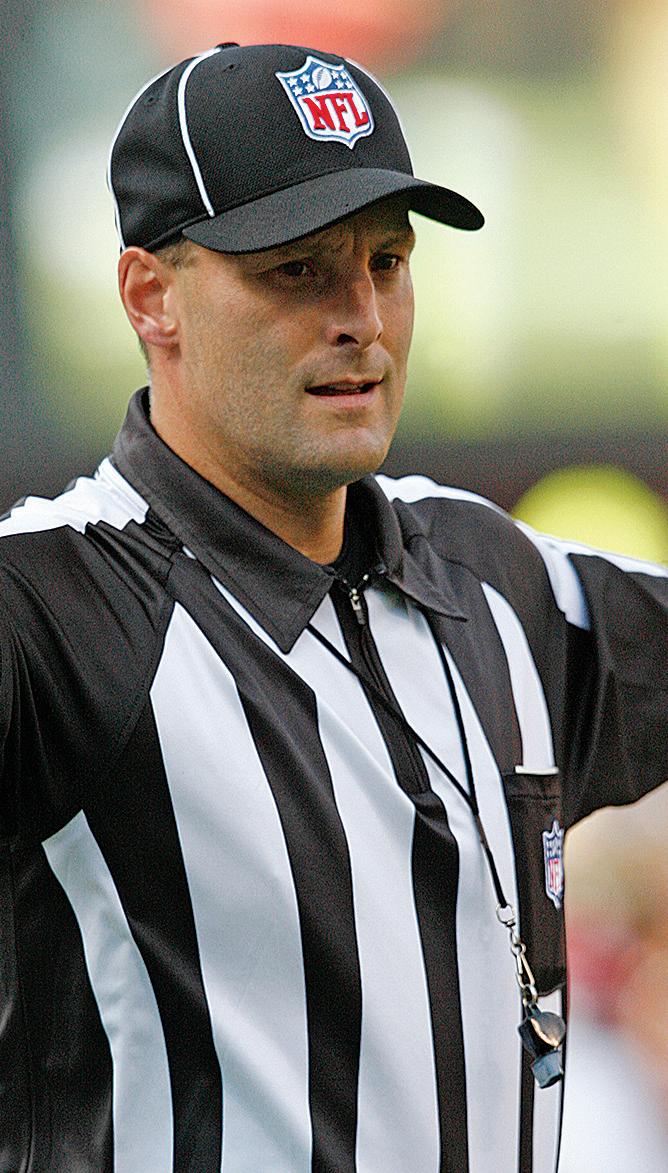
REFEREE October 2023 | 79 BILL NICHOLS
SOURCE: SURVEY OF 133 REFEREE
before? We often spend so much time on the here and now we forget what was so important in the recent past.
Rules study isn’t a must only during the season or only before a test. Keep a rulebook on your bedstand or on the coffee table so it’s handy when you have a spare moment or before you go to sleep.
Review a rule that’s given you trouble.
We do more than just make rulings and administer penalties. We’re trained observers. So while you are making sure that forward isn’t in the lane for more than three seconds, the player in motion isn’t moving forward before the snap, the pitcher’s
delivery is legal and the other myriad things you must be watching, take note of the patterns and strategies employed by the teams. They’ll help you be prepared for action to follow and where to be positioned to see it.
Jeffrey Stern is Referee’s senior editor. He formerly officiated high school and college football and high school baseball.

Time to Turn Off the Sound?
By Ken Schimpf
Whenit comes to dealing with verbiage from those involved in any sporting event, the difference between noise and unprofessional conduct must be clear in an official’s mind.
Comments from head coaches, their coaching staffs and fans can vary and deserve a multitude of responses. You must have absolutes you won’t tolerate and non-absolutes you will allow and treat fairly and evenly.
Here are some questions for officials to consider when establishing their own “noise vs. unprofessional conduct” policy.
•What words are on your own list of profanity? Is your own vocabulary and tolerance for others’ use of words close to the standard of the community in which you are serving as an official? Does officiating in a gym that’s affiliated with a parochial school make a difference in what you’ll allow? Should it?
•What types of nonverbal communication will you tolerate? Will a certain type of body language be permitted in one sport, but not in another? Can body language have different meanings to you than the person delivering the message?
•Does disregarding a directive from a game official once warrant a second chance? Does your policy have an elasticity that comes with the game situation? Do you treat something that would be unprofessional conduct in the early stages of a game as noise late in a game, fearing your call might impact the outcome?
Let’s look at a few situations that might help get your thinking started on how you’ll answer those questions.
Late in a game, a head coach yells, “What kind of frigging call is that?” The italicized word is being used as a substitute for a more profane word. However, if penalized, the speaker of the word would declare he or she had not uttered a profanity. Yes, the gentler word could be deemed as offensive toward the official, but probably falls on the side of noise.
When the moment settles, the official might simply tell the speaker, “You can use a better choice of words.” Most often, the speaker will retreat from the remarks, recognize the official has made an effort to defuse the situation and move toward resolution.
Should the speaker return to the language, it’s time to say, “I’ve asked you, now I’m telling you to use better words.” While it should remain unspoken and never threatened, the speaker now has two strikes and a penalty looms on a third offense.
Midway through the first quarter, a coach rises from the bench and receives an explanation for a traveling call. As the official walks away, the coach gives a dismissive wave. Many basketball officials consider that an absolute example of unprofessional conduct, so much so that partners will often call the technical foul if it’s done behind the official’s back.
That is unprofessional conduct. Coaches deserve explanations occasionally. The official’s explanation must be respected — even if not agreed with or understood. The conduct should be penalized.
Same game, but this time in the third quarter, the other coach stomps his or her feet as the opposing team takes the ball from his or her offensive frontcourt toward its own basket following a steal. There was contact during the steal, possibly either a foul that was not called or contact not qualifying as a foul. The nearest official does not see the stomping, but definitely hears it.
ALL SPORTS 80 | REFEREE October 2023
HESTON QUAN
The tone, volume and nature of the coach’s language will determine how Haakan Spaberg, Garden Grove, Calif., reacts. Sometimes the best response is no response, but Spaberg will eject the coach if necessary.
Most often, that is noise. The coach is reacting to the play, primarily in frustration over the turnover. Any game is emotional, especially for the nonplaying participants who have hours of coaching work invested in the outcome. A spontaneous and even demonstrative reaction can be

tolerated; if it’s a “missed” call, even more leniency can be applied by the officiating crew.





































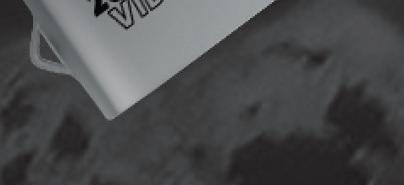

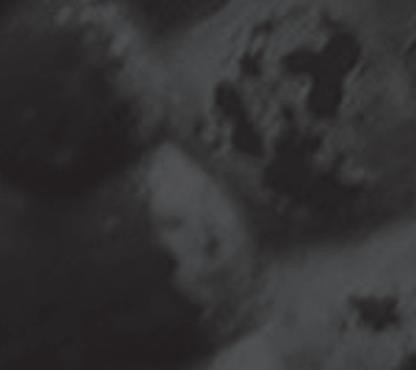
























Nonverbal communication is much more difficult to judge definitively. Be cautious in penalizing it. Yet, always know when a nonplaying participant is “looking at you in that tone of voice.”
Officials are hired to do a job — administer the game by an agreedupon set of rules. Without the rules, we have little purpose.


Ken Schimpf, Pewaukee, Wis., officiates high school basketball, softball and football, and is the past president of the Wisconsin Basketball Officials Association.
Be Strong When the Game Goes Long


Games at most levels and most sports are taking longer to complete, and can now be drawn-out affairs. You can be sure you’ll have at least one or two games each season that will keep your focus to the final play. But you’ll have some stinkers, too — games that simply drag on.

It might be easy to stay focused early on, but how can you stay attentive in games that seemingly won’t end? And how can you







maintain concentration in those lengthy contests even when the score is close?


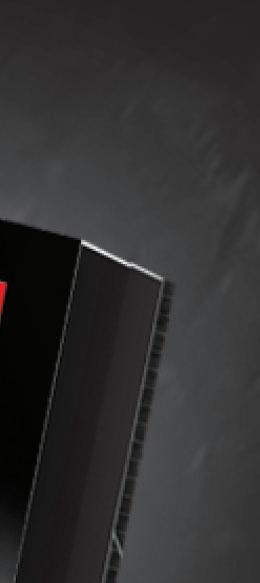














• Talk to yourself. Don’t be self-conscious. It’s a way to try to maintain focus. Do anything to keep in the game. If you don’t, you could be lulled into complacency and not be ready for the next play.
•Anticipate. If it’s a sport that has down time between plays, consider what a team might try to do. It will
keep your mind from wandering and help make you a better official.

• Remember the embarrassment factor. Think about how mortified you’ll feel if you miss an easy call because you lost focus. The fear of embarrassment can be a motivator to stay in the game.
• Hydrate. If you’re hot and thirsty, you could lose focus, especially if all you’re thinking about is getting a drink. Brought
to you by Tim Kiefer and MIBTonline.com, the latest edition of “High School Officiating Best Practices” focuses squarely on the 2023 high school rule changes, including all the significant changes and updates. Additionally, Tim takes you through all the 2023 Points of Emphasis and fully reviews last season’s critical rule changes. •Fouls Behind the Line of Scrimmage Explained •All new Enforcements & Exceptions •Player Out of Bounds Changes •Legal Grounding Clarifications •Intentional Pass Interference Removal •And More! Fouls All Player Legal Intentional And • • • • • • ANYWHERE! Enhanced HD Video delivered via USB Drive AL L NEW 2023 HIGH SCHOOL RULES ORDER YOURS TODAY! STORE. /FOOTBALL $2495 CLARIFIED & EXPLAINED WITH VIDEO PLAYS TAKE IT
PROFESSIONAL POSTSEASON ASSIGNMENTS
•The Birmingham Stallions defeated the Pittsburgh Maulers, 28-12, to win the 2023 USFL championship. Officials were (crew order is referee, umpire, down judge, line judge, field judge, side judge, back judge): Larry Smith, Scott Walker, Walter Flowers, Quentin Givens, Glen Fucik, Frank Steratore, Joe Johnston.

Officials for semifinal games — Birmingham 47, New Orleans 22: Derek Anderson, Tuta Salaam, Josiah Ford, Brett Bergman, LaShell Nelson, Justin Larrew, Jacob Kemp. Pittsburgh 31, Michigan 27: Bryan Banks, Scott Campbell, Stephen Ray, Catherine Conti, Michael Griffith, Jim DeBell, Martin Hankins. Mike Pereira was in the command center for all games.
HIGH SCHOOL
•Officials working spring state championships for the Kansas State High School Activities Association:
Softball — Class 6A: Bruce Andrews, Topeka; Thomas Browne, Topeka; Mark Kenyon, Augusta; Brian Miller, Wichita; Linda Weber, Olathe; Scott Wetterstrom, Olathe. Class 5A: Mike Burns, Wichita; Bradley Eberhardt, Derby; Kurt Lohse, Topeka; Louis Mignone, Winfield; Diane Smith, Wichita; James Wilson, Wichita. Class 4A: Gary Davis, Chetopa; Thomas Drake, Ottawa; Charles Gibson, Wichita; Janet Johnston, Salina; Manuel Motto,
FOR THE RECORD
AWARDS, ROSTERS, NOTABLES
Belleville; Martin Ramirez, Hutchinson. Class 3A: Mark Brack, Ellis; Jeff Freeman, Topeka; Mike Holt, Topeka; Jeff Johnson, Hutchinson; Monte McGinnis, Oskaloosa; Ron Price, LaCygne. Class 2-1A: Cameron Chandler, Sterling; Victor Downing, Lawrence; Scott Goodheart, Pratt; Jeffery Ridgway, Hays; Phil Reilly, Cherryvale; Bill Seidl, Paola.

Baseball — Class 6A: Peter Cannizzaro, Lenexa; David Gonzales, Olathe; Dan Key, Topeka; Keith Kinley, Wichita; Phil Lombardi, Kansas City; Chad McFarland, Olathe. Class 5A: Mark Borst, Goddard; Jason Clemensen, Pittsburg; David Highfill, Overland Park; Ted Rankin, Wichita; Brad Schmitt, Great Bend; Eddie Smith, Andover. Class 4A: Scott Burkhart, Lawrence; Timothy Cashero, Pittsburg; Ron Maring, Osawatomie; Patrick Sarwinski, Pittsburg; Lary Trowbridge, Lawrence; John Wondra, Manhattan.
Class 3A: Travis Griffin, Council Grove; Gerald Henderson, McPherson; Darrell Holaday, Wamego; Michael Shayne Lickteig, Ottawa; Robert Schuh, Topeka; John Sweet, Topeka. Class 2-1A: Lawrence Combs, Manhattan; Gene Cox, Thayer; John Deedrick, Topeka; Scott Krominga, Spearville; Rodney Palen, Beloit; Kim Sutphin, Wichita.
Girls’ soccer — Class 6A: Nathan Colling, Lenexa; Scott Dyer, Wichita; Phil Gomez, Mission; Mike McNally, Olathe; Larry Weigant, Haysville; Matt Weigant, Wichita. Class 5A: Jose Gonzalez, Wichita; Klaus Kollmai, Wichita; Anthony Sobolevsky, Overland Park; Ben Siemer, Wichita; Marc Tiemann, Leawood; Gordie Wetmore, Overland Park. Class 4-3-2-1A: Luke

Cavazos, Topeka; Aaron Dietz, Wichita; Troy Fowler, Wichita; Joe House, Topeka; Naomi Omenski, Kansas City; Alan Peil, Wichita.
AWARDS & HONORS
•Four officials comprise the Montana Officials Association’s 2023 Hall of Fame induction class. Jim Foran, Hilger, officiated basketball for 32 seasons before retiring in 2022. Suzette Harkin, Bozeman, was one of Montana’s first volleyball officials when the sport was introduced in the state in the 1980s. Bryan Larson, Missoula, officiated 15 boys’ and seven girls’ state basketball tournaments; umpired American Legion Baseball for 40 years; spent 10 years as a Pioneer League umpire fill-in and worked two NAIA national basketball tournaments. Football official Bob Rowling, Butte, called four NCAA Division I-AA national title games, three MontanaMontana State games and more than 300 games in total. He was also inducted into the Big Sky Officials Hall of Fame.
•Officials inducted into the Ohio High School Athletic Association Hall of Fame for 2023: Rick Bayless, Delaware (BK); Dave Campbell, Cincinnati (BK, FB, CC, TF); Phil Colflesh, Dublin (FB); Charles “Ron” Golemon, Van Wert (BK, BB); Andrew Holloman, Orwell (BB, SB, BK); Carl Jordan Sr., Pepper Pike (BK); Bill Mason, Granville (BK, LX); Donald Mason, Zanesville (WR); Cheryl Opperman, Wellington (SB); Michael Porpora, Wadsworth (SO); Michael Rauch, Beverly (BK); Katie Roesch, Galion (VB, TF, BK); Kevin Schwarzel, Athens (BK); John Whitson, Newark (BK, FB, BB).


•Recipients of 2022-23 Ohio High School Athletic Association Official of the Year awards were:Baseball –Christopher Prokes, Vandalia; Boys’ basketball – Chase Hiles, Wheelersburg; Girls’ basketball – Erin KenneyLevin, Cincinnati; Boys’ cross country – Carl Fisher, Delaware; Girls’ cross country –
Timothy Stith, Brewster; Field hockey – Darcel Arrington, University Heights; Football –Carl Davidson, North Canton; Gymnastics – Kathleen McIntire, Wadsworth; Ice hockey – Justin Phillips, Ypsilanti, Mich.; Boys’ lacrosse – Nick Adamski, Toledo; Girls’ lacrosse – Matthew Farthing, Perrysburg; Boys’ soccer –Michael Althoff, Worthington; Girls’ soccer – Mark Kleman, Lima; Softball – Gary Russell, Duncan Falls; Boys’ swimming and diving – Robert Meredith Jr., Cincinnati; Girls’ swimming and diving – John “Jack” Gardner, Massillon; Boys’ track and field – Karen Sapp, New Waterford; Girls’ track and field – Emily Hickerson, McConnelsville; Volleyball –Sterling Kaimimoku, Huber Heights; Wrestling – Tom Martin, Dublin.
MILESTONES

•Domingo German of the New York Yankees threw a perfect game June 28, beating the Oakland A’s, 11-0. Umpires were Edwin Moscoso, plate; Nate Tomlinson, first base; Jordan Baker, second base, and Chris Guccione, third base.
•Three Detroit pitchers combined to pitch a no-hitter July 8 as the Tigers defeated Toronto, 2-0. Umpires were Erich Bacchus, plate; Andy Fletcher, first base; Mike Estabrook, second base, and Jeremy Riggs, third base.
OBITUARIES
• Ber nard “Bernie” Barribeau, Oshkosh, Wis., died June 14. He was 77. He officiated more than 60 years, working basketball, baseball, football, softball and volleyball. He officiated men’s and women’s basketball in the Big Ten, Big Eight, Southeastern, Mid-Continent, Missouri Valley and Gateway conferences.
• Jeff Konesko, Kenosha, Wis., died July 10. He was 69. He was a veteran umpire for amateur baseball and softball.
Do you have any rosters, assignments or awards that warrant mention? Send info to us at ForTheRecord@referee.com
82 | REFEREE October 2023
Designate NASO as a beneficiary of your retirement plan or life insurance policy.
LEARN MORE AT NASO.ORG/LEGACY OR CALL 800-733-6100
ROSTERS NFL
The 2023 NFL officiating roster by crew. Crew order is referee, umpire, down judge, line judge, field judge, side judge, back judge, replay official, replay assistant.
Canadian Football League
REFEREE October 2023 | 83
122 Brad Allen 42 Duane Heydt 53 Sarah Thomas 32 Walter Flowers 15 Rick Patterson 41 Boris Cheek 38 Greg Yette Kirt Shay Brian Davies 3 Tra Blake 115 Tony Michalek 13 Patrick Turner 85 Daniel Gallagher 97 Tom Hill 58 Don Willard 30 Todd Prukop Andrew Lambert Larry Hanson 34 Clete Blakeman 127 Scott Campbell 8 Dana McKenzie 10 Julian Mapp 43 Terry Brown 99 Lo van Pham 120 Jonah Monroe Chad Adams Ken Hall 51 Carl Cheffers 22 Brandon Cruse 63 Mike Carr 87 Tom Eaton 33 Nate Jones 103 Eugene Hall 133 Martin Hankins Kevin Brown Karlton Derrick 130 Land Clark 121 Paul King 68 Tom Stephan 40 Brian Bolinger 26 Jabir Walker 114 Dominique Pender 88 Brad Freeman Bob Hubbell Rick Loumiet 76 Alan Eck 110 Tab Slaughter 74 Derick Bowers 134 Robin DeLorenzo 117 John Jenkins 104 Dale Shaw 78 Greg Meyer Denise Crudup Gerald Frye 29 Adrian Hill 81 Roy Ellison 24 David Oliver 17 Brett Bergman 31 Mearl Robinson 5 Jim Quirk 12 Greg Steed Roddy Ames Joe Wollan 83 Shawn Hochuli 77 Terry Killens 106 Patrick Holt 47 Tim Podraza 72 Jason Ledet 125 Chad Hill 39 Rich Martinez Tyler Cerimeli Mark Bitar 35 John Hussey 124 Carl Paganelli 44 Frank LeBlanc 101 Carl Johnson 90 Anthony Flemming 56 Allen Baynes 96 Matt Edwards Jamie Nicholson Larry Hill Jr. 55 Alex Kemp 89 Mike Morton 113 Danny Short 59 Rusty Baynes 28 Sean Petty 95 James Coleman 93 Scott Helverson Mike Chase Jamie Alferi Tuss 19 Clay Martin 73 James Carter 6 Jerod Phillips 98 Greg Bradley 80 Alonzo Ramsey 107 Dave Hawkshaw 119 Greg Wilson Brian Matoren Bryant Thompson 1 Scott Novak 131 Mark Pellis 112 Brian Sakowski 75 Mark Stewart 23 Tra Boger 118 David Meslow 111 Terrence Miles Matt Sumstine Tim England 126 Brad Rogers 128 Ramon George 79 Kent Payne 16 Kevin Codey 50 Aaron Santi 36 Anthony Jeffries 2 Tyree Walton Durwood Manley Chad Wakefield 14 Shawn Smith 92 Bryan Neale 84 Jay Bilbo 45 Jeff Seeman 109 Dyrol Prioleau 18 Clay Reynard 105 Dino Paganelli Mike Wimmer Sebrina Brunson 62 Ron Torbert 20 Barry Anderson 21 Max Causey 100 Maia Chaka 25 Ryan Dickson 7 Keith Washington 67 Tony Josselyn Artenzia Young-Seigler Desiree Abrams 52 Bill Vinovich 49 Alex Moore 129 Dale Keller 9 Mark Perlman 57 Joe Blubaugh 86 Jimmy Buchanan 82 Jimmy Russell Mark Butterworth Julie Johnson 4 Craig Wrolstad 54 Steve Woods 48 Jim Mello 37 Tripp Sutter 60 Jeff Shears 132 Frank Steratore 27 Grantis Bell Kevin Stine Gavin Anderson Swing officials 102 Bruce Stritesky 11 Fred Bryan
roster of
for the
video officials. Referees 74 Tim Kroeker 67 Justin McInnes 28 Andre Proulx 60 Tom Vallesi * 30 Dave Foxcroft * 31 Ben Major * Umpires 92 Mike Ciona 61 Patrick MacArthur 98 Kyle Mikulik 34 Ritchie Miller 45 Adam Paradowski 24 Troy Semenchuk Down Judges 25 Ron Barss 36 Thomas Cesari 63 Rob Hill 19 Chris Shapka 49 Jordan Titosky 27 Andrew Wakefield * Line Judges 97 Eric Gyebi 81 Walt Hawrysh 83 Dan Mulvihill 33 Georgina Paull 89 Marc Cobb * Field Judges 23 Jim Carlisle 73 Brian Chrupalo 93 Chris Donaldson 50 David Kendall 37 Jason Maggio * Side Judges 59 Larry Butler 35 Laurent Dubreuil 78 Tobin Horton 18 Pierre Laporte 40 Kevin Riopel 52 Ryan Stark Back Judges 44 Blair Brown 70 Benoit Chapdelaine 22 Murray Clarke 39 Emily Clarke 65 Iain Cropper 29 Ryan Lange 46 Robert Skaggs 68 Rob Hand * 75 David Gatza * Replay Officials Al Bradbury Jeff Harbin Video Official Rob Crifo
The
officials
2023 Canadian Football League season. Officials with asterisks (*) also serve as
The ‘L’ Word
By Scott Aronowitz
Think about the amount of preparation and training we undertake leading up to our contests. The reasons are multifold: We want to provide the best service possible so the participants decide the outcome, as well as anticipate any situations that may arise during the contest. No less important is the direct relationship between preparation and training and limiting our liability.
We often throw around the word “liability,” but what exactly is it? One of the most significant words in the field of law, liability is the legal responsibility for one’s acts or omissions, and usually occurs when a party is negligent. Negligence means
with a coach who was standing in the restricted area; sadly, the coach sustained a serious head injury and incurred a permanent disability.
After paying the coach’s medical bills, Midwest, the workers’ compensation insurer, sued the entire officiating crew — whose insurance covered the defense — to recoup the insurance payout to the coach. The officials were successful at the trial level in September 2007, and Midwest appealed. In June 2009, the appellate court upheld the lower court’s decision, summarized by the statement, “The fact was that the referee was where he was supposed to be, doing exactly what his job required (emphasis added). For the referee to perform the essential functions of his duties as a linesman referee, while the ball was in play, he had to focus on the football field and not look for coaches inside the restricted area.”
Kentucky Appeals Court Rules Against Referee
The Court of Appeals of Kentucky ruled earlier this year against a basketball referee who was assaulted by a coach at a youth tournament and sued tournament organizers for negligence. The court ruled the coach’s criminal act in punching referee Kenny Culp “was not reasonably foreseeable” and organizers did not breach a duty of care so as to be negligent with respect to the injuries the referee sustained.
Culp’s attorneys had argued tournament organizers should have known of the coach’s violent tendencies by conducting a criminal background check and not enough was done to protect officials, such as providing security guards and having safety policies and procedures.
The ruling does little to incentivize tournament organizers in Kentucky to provide security for their events to protect officials.
a party had a duty to the injured and failed to exercise the care that a reasonable person would do under the circumstances. Failure to meet that responsibility leaves a person open to a lawsuit for any resulting damages.
The concept of liability often accompanies insurance and NASO members are fortunate to possess its comprehensive insurance plan, which covers officiating-related activities no matter what level or sport you work. The purpose of insurance is to transfer liability from the insured to the insurer.
For example, when you get sued, the complicated nature of litigation necessitates the retention of counsel which, unfortunately, can be expensive. If your matter is covered under the insurance plan, the insurer has a duty to defend you. In our profession, there is no better example than the case of Midwest Casualty v. Harpole et al. In 2004, a Texas high school football official was running down the sideline and collided
In June 2010, six years after the incident, the trial court awarded the officials more than $400,000 collectively in sanctions, fees and court costs. In addition to the mental strain such litigation can bear on a person, imagine the enormous financial and legal burden the officials would have endured had they not been properly insured. The Harpole case underscores several important tenets: the importance of preparation and training, as cited by the court, and the significance of having insurance.
In an overly litigious society, anyone can be sued for anything, even things outside of our control. The essential question is whether we are liable, and to what extent. Limit your liability by controlling what you can control: Know where you are supposed to be and protect yourself with insurance.
Scott Aronowitz is a professor and attorney and lives in Middleburg, Fla. He has officiated high school football for over 20 years and was a college referee for seven years. He is currently a replay official in the Collegiate Officiating Consortium. This column is informational and not intended as legal advice.
Culp, a Paducah, Ky., resident, was attacked by Keyon Menifield, of Flint, Mich., during an April 2019 youth basketball tournament at the Paducah Regional Sports Plex. Culp was hospitalized for nine days. Menifield was sentenced to six years in prison for the attack.
SOURCE: COURT OF APPEALS OF KENTUCKY
Survey Says …
Should states have penalty enhancements for assaulting sports officials or should those incidents be handled under existing general assault laws?
82%

18% Penalty Enhancement General Laws
SOURCE: REFEREE POLL OF 93 OFFICIALS
PRESENTED BY
In an overly litigious society, anyone can be sued for anything, even things outside of our control.
ISSUES AFFECTING OFFICIALS Go to www.naso.org and click on member benefits for more on MICP.
LAW
84 | REFEREE October 2023
CLASSIFIEDS
CAMPS/CLINICS/ SCHOOLS
ATTENTION ASSOCIATION LEADERS! Are you holding a camp or a clinic? Do you know of a camp or a clinic coming up? Referee can help get the word out! Call our sales department at 262-6328855 for more information.
LEADERSHIP RESOURCES
Association Advantage Membership to Association Advantage provides officials, associations and their leaders the tools to conduct wellrun meetings, education resources for officiating training and access to years of association management articles. Member associations
also receive 12 issues of Referee magazine, monthly Advisor newsletters, Click e-newsletters, massive discounts on training materials and optional insurance coverage exclusive to membership. For additional membership information, contact Ken Koester at 262-632-5448 or visit the Association Advantage website at nasoadvantage.com.
EQUIPMENT/APPAREL
Purchase Officials Supplies — Everything for Life Inside the Lines. Call 800-767-2233 or visit our website purchaseofficials. com for the best products and prices in the market.

Ump-Attire.com — The #1 website for officials’ sporting goods. Now serving


QUIZ ANSWERS
BASKETBALL
1 — NFHS, NCAAW – a (NFHS 4-8-1; NCAAW 8-2.1); NCAAM –d (8-2.1)
2 — All – a (NFHS 5-7-1; NCAAM/W 5-6.1)
3 — All – c (NFHS 4-18-1, 4-19-4; NCAAM 10-1.18, 10-5.2, 10-5.3; NCAAW 10-14, 10-15.2, 10-15.3)
4 — NFHS, NCAAW – d (NFHS 10-5-1 Pen.; NCAAW 10-12.4.a Pen.); NCAAM – c (10-3.2 Pen.)
5 — NFHS – d (3-4-3d); NCAAM/W – e (1-22.7)
6 — NFHS, NCAAM – e (NFHS 5-8-3; NCAAM 5-15.1.c); NCAAW – d (5-14.1, 5-15.1.c)
BASEBALL
1 — All – c (NFHS 2-16; NCAA 2-37; pro Foul Ball and Foul Tip Definitions)
2 — NFHS – a, c (3-3-1p Pen.); NCAA – c (5-16c); pro – c, d (8.01c)
3 — NFHS – a (2-32); NCAA, pro – b (NCAA 8-4; pro 6.01j)
MISSION
FOOTBALL
1 — Both – b (NFHS 6.1.9 A; NCAA 2-27-15, AR 6-2-2 IV)
2 — Both – a (NFHS 3-4-2, 5-1-


3d, 9-4-4 Pen.; NCAA 3-3-2e-1, 7-3-12, 9-1 Pen., 10-2-2e)
3 — NFHS – b (10-3-1b; 10-4-2b); NCAA – a (10-2-2e)
4 — Both – c (NFHS 2-19-1,
2-19-2; NCAA 2-13-1b, 2-13-1c, 7-1-6)
SOFTBALL
1 — NFHS – b (1-6-2, 3-6-1 Pen.,
1.6.2A); NCAA, USA Softball – c
(NCAA 3.7.1 Eff.; USA Softball

3-5E-1 Eff.); USSSA – e (2-1).
2 — NFHS, NCAA, USSSA – a, b, c (NFHS 2-1-3b-1; NCAA
7.1.2.2.1; USSSA 9-3); USA Softball – a, c (8-7I Eff. 3)
3 — All – a (NFHS 9-1-1 Exc. a; NCAA 6.2.3.1; USA Softball 5-5B-
1; USSSA 4-2C-5)
4 — NFHS, USA Softball, USSSA – b (NFHS 7-4-12 Pen.; USA Softball 7-6K; USSSA 8-17I); NCAA – a (12.17.3.2)

free returns to go along with more brands, product reviews, same-day shipping and world-class service.
Smitty Outlet Store
Visit the NEW Smitty Outlet Store featuring discontinued, factory seconds and individual slightly defective items at great prices. Go to smittyoutletstore.com to shop now!
TRAINING RESOURCES
Referee Training Center
— The largest library of officiating training materials in the world. Rules study, mechanics updates and materials on important topics can all be found in one location 24 hours a day, seven days a week, with sample chapters and video samples. Discover it all at store.referee.com.

FLASHBACK OCTOBER
SOCCER
1 — All – b (NFHS 12-9-2C; NCAA 12.7.4.6; IFAB 12.3)
2 — All – c (NFHS 12-9-1C; NCAA 12.4.3.3; IFAB 12.3)
3 — All – a (NFHS 12-3-1, 12-91f6; NCAA 12.4.3.8; IFAB 12.3)
4 — All – b (NFHS 12-8-3; NCAA AR 12.3.4.a; IFAB 12.2)
VOLLEYBALL
1 — All – a (NFHS 6-4-2a, 9-91h; NCAA 6.3.2.11, 12.1.1; USAV 16.1.3, 19.1.1, 19.3.2.9)
2 — NFHS – b (10-3-6); NCAA –a, b (11.3.6.1); USAV – a (15.7)
3 — NFHS, USAV – d (NFHS 11-2-1; USAV 15.3.1); NCAA – e (11.2.6.1)
4 — NFHS, NCAA – a (NFHS 7-4a-1; NCAA 10.1.1.9); USAV – b (7.3.5.1)
Referee is a magazine written from an officiating perspective, blending editorial credibility and business viability. It educates, challenges and inspires officials at the youth, recreational, high school, collegiate and professional levels in all sports, with an emphasis on baseball, basketball, football, soccer, softball and volleyball. Referee is the journal of record for officiating and takes informed positions on selected issues. The magazine provides a forum for its readers, facilitates the flow of information, raises public consciousness about officials’ roles and serves as a catalyst for improved officiating worldwide.

40
YEARS AGO … 1983
•Boxing referee Richard Green, 46, is found dead in his home shortly after working an ESPN-televised boxing card held at the Showboat Hotel in Las Vegas. In the week following the tragedy, the county coroner ruled Green’s death a suicide.
30 YEARS AGO …
1993
•AL umpire Steve Palermo is named the sixth recipient of NASO’s Gold Whistle Award. The highest honor in officiating is awarded annually to someone who exhibits a service-above-self mentality and who has made significant contributions to the betterment of officiating. Palermo was shot while attempting to break up a robbery outside a Dallas restaurant. He and his wife then started the Steve Palermo Foundation for Spinal Injuries.
20 YEARS AGO …
2003
•NCAA women’s basketball referee Joanie Harper, her three children and her mother are found dead in Harper’s house. Her ex-husband, Vincent Brothers, was convicted of the murders in 2007 and was sentenced to death.
10 YEARS AGO
… 2013
•NHL Senior Vice President and Director of Officiating Terry Gregson retires after four years in the role. He replaced Stephen Walkom, who decided to leave the front office and return to the ice. Walkom then returned to the position in the office after officiating on-ice for the four years Gregson held the position.
REFEREE October 2023 | 85
Best Seat in the House
Referees share a common bond in many respects, whatever the sport. I was once a professional tennis player and then a professional tennis coach before moving into officiating. I had raged at referees for many years; and then became one. I was a poacher turned gamekeeper! Dealing with angry players (and their entourages) is something that is just a necessary part of the job. You make your decision, explain it slowly and calmly while making sure all involved understand what it is, and then move on. Yes, you learn to grow a thick skin and not be too sensitive, but equally there’s
any of you know Aljosa Asanovic or Igor Stimac?” They looked surprised and suddenly our conversation was all football. How did I know the two Croatian footballers, who were stars in their own country but also for my own English team, Derby County? I’d broken the unseen barrier between player and official and was now just a normal bloke who was a human being and not a faceless official in their eyes. When decisions needed to be made in the heat of the battle later in the week, it was an easier sell because of the work I’d put in earlier.
As a Wimbledon referee for 14 years, I dealt with all the major players and they are simply human beings. They have doubts, fears, hopes and worries like anybody else. If you treat them with respect — but not awe — in an approachable and friendly (but not overly familiar) way, you develop the good working relationship that’s required to get the job done. Working colleagues, yes. Friends, no. That may come later after retirement.
right and you’ll be successful. Get it wrong and controversy will dog you every step of the way. Every situation and every player is different, and you’re always thinking on your feet.
a responsibility to the sport and to maintaining the discipline required for it to be admired and not mired in controversy.
Knowing the players helps and a little work on this behind the scenes is valuable. Assigned to referee a Davis Cup match between Croatia and Brazil in Zadar, Croatia, I arrived at the hotel a few days early to supervise practice and ran into the Croatia team in the lobby. Shaking each by the hand, I was able to say something like, “Hi, and bad luck, you’ve got me this week!” but then followed it up with, “Right, you lot. I’ve got a question for you. Do
Tennis officiating has several different roles and responsibilities. Line umpires are those only responsible for the calls on the line(s) to which they are assigned. Chief umpires put the line umpire teams together and manage all the housekeeping necessary for their offcourt welfare. Chair umpires run the matches, call the score, make overrules on clear mistakes and are the first port of call for most player protests and arguments. Referees (sometimes called supervisors) manage the tournaments, do the entries, make the draws, do the order of play each day, assign chair umpires to matches, make rain and roof decisions, and decide on any disciplinary measures when required.
Any referee knows selling a decision is key. You must know the rules. It is, after all, a prerequisite for being an official. But it’s one thing to know the answer and quite another to get players to accept and buy into it. The attitude, the manner, the body language, and the words and tone used to deliver them are all a major part of the referee’s arsenal. Get it
One regular challenge for me, and one that involved trying to find different ways to achieve the same result, was getting players on court on time. Some cultures are more relaxed than others and you quickly get to know those who are keen to go out as soon as they’re called and others who are in need of a little geeing up. One tactic I’d use was only good if the competing players were out of earshot of each other in the changing room. I might tell the fast player 10 minutes to walk on and then move on to the slower player and tell him it was only five minutes. Further updates would then try to take into account the likely final trip to the toilet. You might say, “OK lads, we’re all set to go,” and then one disappears to have a last pee, which always sends the TV directors into fits as to why you couldn’t get them to walk on court just as the ad break finished.
Once you join the referee’s club and have officiated at major events, you always keep an eye on colleagues from different sports with great interest, even when just spectating. If I watch a passionate game with high emotions and I’ve seen a quiet but firm hand guide it all to a successful ending, I like to have a quiet word and say, “Well done referee, you had a good game.”And I know it’s appreciated because I’ve been there myself.
In his career of more than 40 years, Andrew Jarrett was The Championships Referee at Wimbledon for 14 years, retiring in 2019. Prior to that, he played professionally on Tour and in the Davis Cup, before moving into coaching. In June 2023, he released his book, Championship Points, a look at the world of professional tennis, as seen from his rare position of former player, coach and official.

Do you have a personal officiating story to tell?
Send your story or queries to lastcall@referee.com
86 | REFEREE October 2023 SHUTTERSTOCK LAST CALL A PERSONAL STORY
BY ANDREW JARRETT
Get it right and you’ll be successful. Get it wrong and controversy will dog you every step of the way.




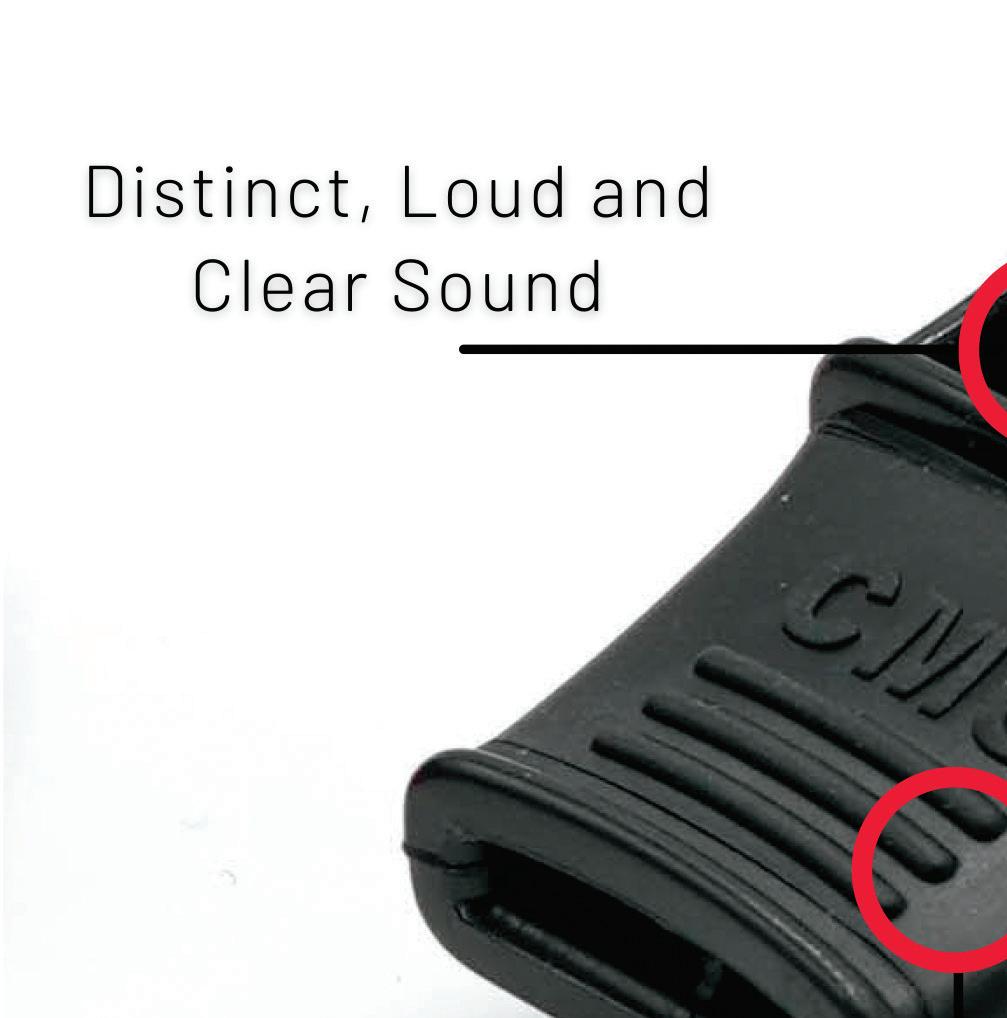
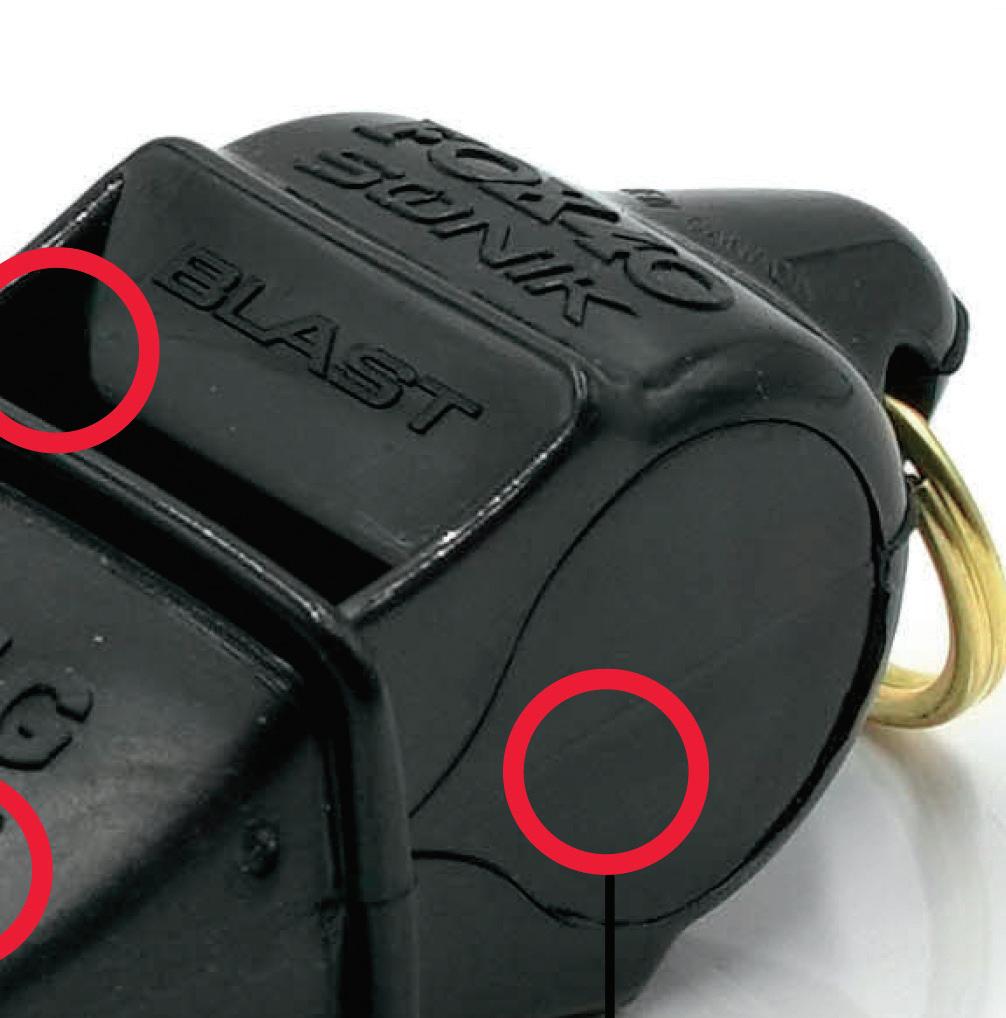




IT’S OFFICIAL










october
Summit Reaches Southern California
Returning to the West, the NASO Sports Officiating Summit featured a packed house in Riverside, Calif., over a three-day span, July 30-Aug.
1.With the theme “Better Sports Through Officiating,” the 41st installment of the annual event brought more than 400 officials and officiating leaders, representing over 20 different sports, together from around the world to celebrate.
“NASO and California have a great working relationship and it was fantastic to be able to host this prestigious event in Riverside,” NASO President Bill Topp said. “Being able to draw from such a deep talent pool on the West Coast made the event remarkable. And being able to work side by side with the CIF (California Interscholastic Federation) and CIF-Southern Section to put on this type of event makes us all proud of the work we do.”

The Summit Grand Opening on the evening of July 30 included welcoming remarks from Topp and featured a video welcome from Barry Mano, former NASO president who stepped down this summer. The opening also featured welcoming remarks from Dana Pappas,
NASO outgoing board chair, as well as remarks from CIF Executive Director Ron Nocetti and CIF-Southern Section Commissioner Rob Wigod. The Grand Opening was moderated by Joan Powell, NASO’s 2022 Gold Whistle Award recipient.
“I want to thank the Riverside Convention and Vistors Bureau for hosting us in this great city,” Nocetti said. “I want to especially thank Bill Topp and NASO for giving us the privilege of hosting Officiate California Day along with Rob (Wigod) and the Southern Section office. It was a great day for all of us. ”
“We are honored to have been chosen by the National Association of Sports Officials to host this event,” Wigod said. “Barry Mano came to us and offered us this opportunity and we really saw that as an honor. They can go anywhere, and they chose us.”
The first full day of events kicked off on July 31, as NASO revealed details of the 2023 National Officiating Survey, powered by Referee.com. NASO board member Sandra Serafini, who recently retired as the director of strategic initiatives and innovation










NATIONAL ASSOCIATION OF SPORTS OFFICIALS
2023 1
More than 400 officials and officiating leaders gathered in Riverside, Calif., for the 2023 NASO Summit.
for the Professional Referee Organization, presented the findings of the survey, which was completed by more than 35,000 officials.
The first panel session, “Sports Is Life With the Volume Turned Up,” addressed what officiating in today’s supercharged environment looks like. Led by Marcia Alterman, coordinator of volleyball officials for multiple D-I conferences, the session gave tips and techniques to handle working through the chaos. Panelists Steve Shaw (College Football Officiating national coordinator and the NCAA secretary-rules editor for football), Lisa Jones (2023 NCAA D-I women’s basketball national championship referee), Jeff Cluff
(assistant director in charge of officials for the Utah High School Activities Association) and John Lozano (past president of California Basketball Officials Association) kicked off the panel sessions and set the tone for the event.
Other sessions on the second day included “Innovation by Invitation,” which allowed speakers the opportunity to communicate what is key about their product/service up on the big stage in a “Shark Tank” like experience, moderated by Ronnie Foxcroft, director of sales and business development for Fox 40 International Inc. The Officiating Industry Luncheon was also held Tuesday. It featured “state of the officiating industry” remarks by Topp and NFHS Chief Operating Officer Davis Whitfield.
director of the Washington Officials Association) and Ernie Yarbrough (assistant executive director and coordinator of officiating for the Georgia High School Association).
Tuesday also included the session “Unconscious Bias,” a presentation led by Robert Smith (Big Ten football official and newly elected NASO board chair) and Powell. The presentation focused on practical strategies to counteract bias through behavioral change.
“Officiating is a community that most people will never understand,” Smith said. “And the more people we can get into this business, I firmly believe in my heart, that officiating is something we can use to make our society a better place.”
Editor: Julie Sternberg
Sports Editor: Brent Killackey
Graphic Designer: Dustin Brown
Contributors: Don Collins, George Demetriou, Alan Goldberger, Joe Jarosz, Patrick Rosenow, Tim Sloan, Jeffrey Stern, Brad Tittrington, Scott Tittrington, Bill Topp
NASO BOARD OF DIRECTORS
Robert Smith, Waterloo, Iowa, Chair
Lisa Jones, Phoenix, Vice Chair
Bill Topp, Racine, Wis., President, Secretary
*Bill Carollo, Shorewood, Wis., Treasurer


*Ron Foxcroft, Burlington, Ontario, Special Adviser





Dean Blandino, Santa Monica, Calif.
Paul LaRosa, Metairie, La.
Dana Pappas, Lebanon, Ind.
Pati Rolf, Pewaukee, Wis.
Sandra Serafini, Yachats, Ore.
Ron Torbert, Hanover, Md.
Mark Uyl, DeWitt, Mich.
Rob Wigod, Los Alamitos, Calif.
*Non-voting members
NASO MISSION STATEMENT








The mission of NASO is to:
• Serve members by providing benefits and services.
• Improve officiating performance through educational programs.
• Advocate opportunities for officials and engage in programs to recruit and retain officials.


• Create alliances with organizations that benefit from healthy officiating programs.
• Enhance the image of officials.
© 2023 NASO/Referee Enterprises, Inc. All rights reserved. It’s Official is published by the National Association of Sports Officials and Referee Enterprises, Inc.
Find NASO @ facebook.com/NASOofficiating
The second day also included “Too Few of Us,” which took a strategic look at how to deal with the shortage of officials. It featured breakout workshops, which divided attendees into nine different rooms to discuss specific initiatives to deal with sportsmanship issues.
While the first full day of sessons at the Summit focused on some major issues within the industry and how sportsmanship has impacted it, the next day began with a session on “How We Make Things Worse,” which focused on the ways those of us inside the industry perpetuate some of the problems and how we can correct it. The session was led by Christina Drumm (commissioner of USA Softball Southern California) and featured Chris Rastatter (NCAA national coordinator of men’s basketball officiating), Devonie McLarty (FIVB, USAV, PAVO and NFHS volleyball referee and Great Lakes Region Board of Director for USAV), Todd Stordahl (executive
The last day’s events also featured “Sportsmanship: They’re Doing Something About It,” which showcased ways organizations are combating sportsmanship issues. “Critical Issues in Officiating: A Legal and Liability Perspective” and “You Make the Call,” which included supervisors sharing unique plays, were held as well.
Tuesday wrapped up with one of NASO’s most emotional sessions, “Referee Voices.” The session included “Ted Talks” from Penny Davis (NCAA women’s basketball national coordinator of officials), Paul LaRosa (former Louisiana High School Officials Association president), Michol Murray (NCAA D-I women’s basketball championship game official) and Larry Young (MLB umpire supervisor and 2002 NASO Gold Whistle recipient).
The Summit wrapped up with the Celebrate Officiating Gala with a night of awards as the NFLRA (Mel Narol Medallion Award) and Violet Palmer (Gold Whistle Award) were honored.
2 IT’S OFFICIAL - OCTOBER 2023 NATIONAL ASSOCIATION
NASO Board Meets in Riverside
It wasn’t exactly business as usual when the NASO Board of Directors met Aug. 2. It marked the first meeting for Bill Topp as NASO president. It also came after execution of a bylaw provision to enact a one-time waiver of the waiting period for a board member. As a result, Dana Pappas, Sandra Serafini and Paul LaRosa were re-elected to additional two-year terms.
The meeting took place in Riverside, Calif., where many of officiating’s luminaries had already gathered for the 2023 NASO Summit.
“It was an excellent opportunity to begin to map out NASO’s future,” said Topp, who succeeded NASO founder Barry Mano as president on July 1. “We’re looking forward to continuing strategic discussions and formulating strategic partnerships.”
In addition to Pappas, Serafini and LaRosa, board members attending were Robert Smith, Lisa Jones, Ron Torbert, Rob Wigod, Mark Uyl, Pati Rolf and Dean Blandino. Bill Carollo is treasurer and Ron Foxcroft is special adviser. Both serve in non-voting capacities.
The agenda items included:


• The annual insurance report from Drew Smith, president of American Specialty Insurance.



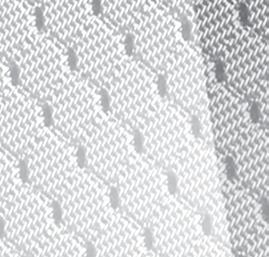


















• A discussion of Officiate California Day, which preceded the Summit, including record sponsorships.
• Efforts to sell group memberships to football associations and other groups. NASO is aiming to grow that program as well as retain the current groups.




• A discussion on energizing and reengaging the Strategic Development Committee.
• An update on the national survey conducted by NASO. Results of the survey were revealed during the Summit and will be distributed via Referee
The survey was a significant and noteworthy undertaking, Pappas said.
“Figuring out what we can do more of as an organization from the perspective of recruitment, retention, behavior, officials’ safety and well-being, advocacy and support will be a challenge,” Pappas said. “But it is an exciting challenge to ‘hear’ the voices of those who responded and create actionable plans to address them. The board and its committees need to collaborate both internally and externally to take the organization into its new chapter.”
Pappas called the transition from Mano to Topp “seamless,” because of Topp’s long tenure with NASO. “Bill has always been an integral part of the board meetings, so this was no different. He knows the organization inside and out,” Pappas said.
It was the final meeting for Pappas as chair of the board. “It was such a dream come true to serve as the chair,” Pappas said. “The opportunity to work with the board and to serve officials in this unique way was a tremendous honor.”
Smith moved up from vicechair to chair. Lisa Jones is the new vice chair.
The next NASO board meeting will take place in October in Chicago.



3 OF SPORTS OFFICIALS
For additional tax information visit www.naso.org/resources SAVE UP TO $35 OFF YOUR 2023 OFFICIATING TAXES naso.org/joinrenew OR CALL 1-800-733-6100 Join or Renew with NASO before December 31 to use the tax deduction on your 2023 o ciating taxes. NASO members can access the exclusive Tax Guide through the NASO Members App.
California Celebrates State Day




Officials from all over the Golden State had an opportunity to take their games to new heights during Officiate California Day, which took place Saturday, July 29, the day before NASO’s 41st annual Summit. The event was held at the Riverside Convention Center.


“We want you to know that we support officiating,” said Rob Wigod, California Interscholastic Federation (CIF) Southern Section commissioner, who retired Aug. 1. “We support officiating in California, we support officiating in the Southern Section.”

Attendees participated in sport-specific breakout sessions, multiple general sessions and had a chance to visit with vendors. Those sessions included presentations by Brian Seymour (CIF associate executive director), Carl Cheffers (Super Bowl LVII referee) and Violet Palmer (2023 NASO Gold Whistle Award recipient). Two “Legal and
Liability, Spectator Behavior Workshops” were also held, featuring Alan Goldberger (sports law attorney) and Don Collins (Commissioner Emeritus for the CIF-San Francisco Section).

“The entire leadership team from the CIF and CIF-Southern Section, the hundreds of officials attending the sport breakouts and the guest speakers, all these things made for a great day of learning, fellowship and networking,” said Bill Topp, NASO president.
One of the highlights of the sport breakouts was the baseball training session led by MLB. Rich Rieker, director of umpire development for MLB, and Raquel Wagner, MLB’s manager of umpire operations, combined with a group of current and former professional umpires to lead a group of 200 people through a one-day MLB Umpire Camp (MLBUC) at San Manuel Park in San Bernardino, Calif. It
was the largest MLBUC to date this year and multiple attendees were offered a scholarship for an all-expense paid MLB Umpire Prospect Development Camp in Vero Beach, Fla., in January.








“It really is a privilege for us to introduce people into professional umpiring,” Rieker said. “Our instructors really do love to teach.”
The instructors for the camp included Jim Reynolds, Ed Rapuano, Mike Winters, Ted Barrett and Charlie Reliford. It also included a guest appearance by Gerry Davis.
“We are just trying to help people get better,” said Winters, who retired from MLB after the 2019 season. “If I can help others get better, I am lucky. The great Doug Harvey always said, ‘If you aren’t learning every day, you are done.’”
Gold Whistle, Mel Narol Medallion Presented at the Celebrate Officiating Gala
The Celebrate Officiating Gala, sponsored by Fox 40, capped off the annual Summit, in Riverside, Calif., July 30-Aug. 1. Violet Palmer was the recipient of NASO’s Gold Whistle Award, the highest honor in officiating, and the NFL Referees Association (NFLRA) was awarded the Mel Narol Medallion for its support of NASO and its mission.
Palmer is a retired NBA referee — the first female to
officiate a major professional sports league game in the U.S. — and currently serves as the coordinator of women’s basketball officials for the Pac-12, West Coast, Western Athletic, Big Sky and Big West conferences.
“I can honestly say I really believe that officiating was my calling,” Palmer said in her acceptance speech. “After one of my games early in my career, my

mother said the most profound thing to me. She said, ‘Vi, you have found your God-given talent. You are in your element and exactly where you need to be.’ Those words have stuck with me my entire career.”

Palmer also thanked family, friends, partners and current officials in her program. “Who knew that when I started, that the Gold Whistle Award would be part of my destiny?” she

4 IT’S OFFICIAL - OCTOBER 2023 NATIONAL ASSOCIATION
said. “And I think that’s what my mother was talking about. Living out my dreams and my desires, receiving this award I can honestly say is the highest recognition in my industry and my career.”
Palmer’s career accomplishments include five NCAA women’s Final Four and two NCAA women’s championship assignments. She worked the 1997 WNBA Finals. She also made history in 2006 when she became the first female to officiate an NBA playoff game and again in 2014 when she became the first female to officiate a major professional all-star event at the NBA All-Star Game. She served on the NASO board from 2005-08.
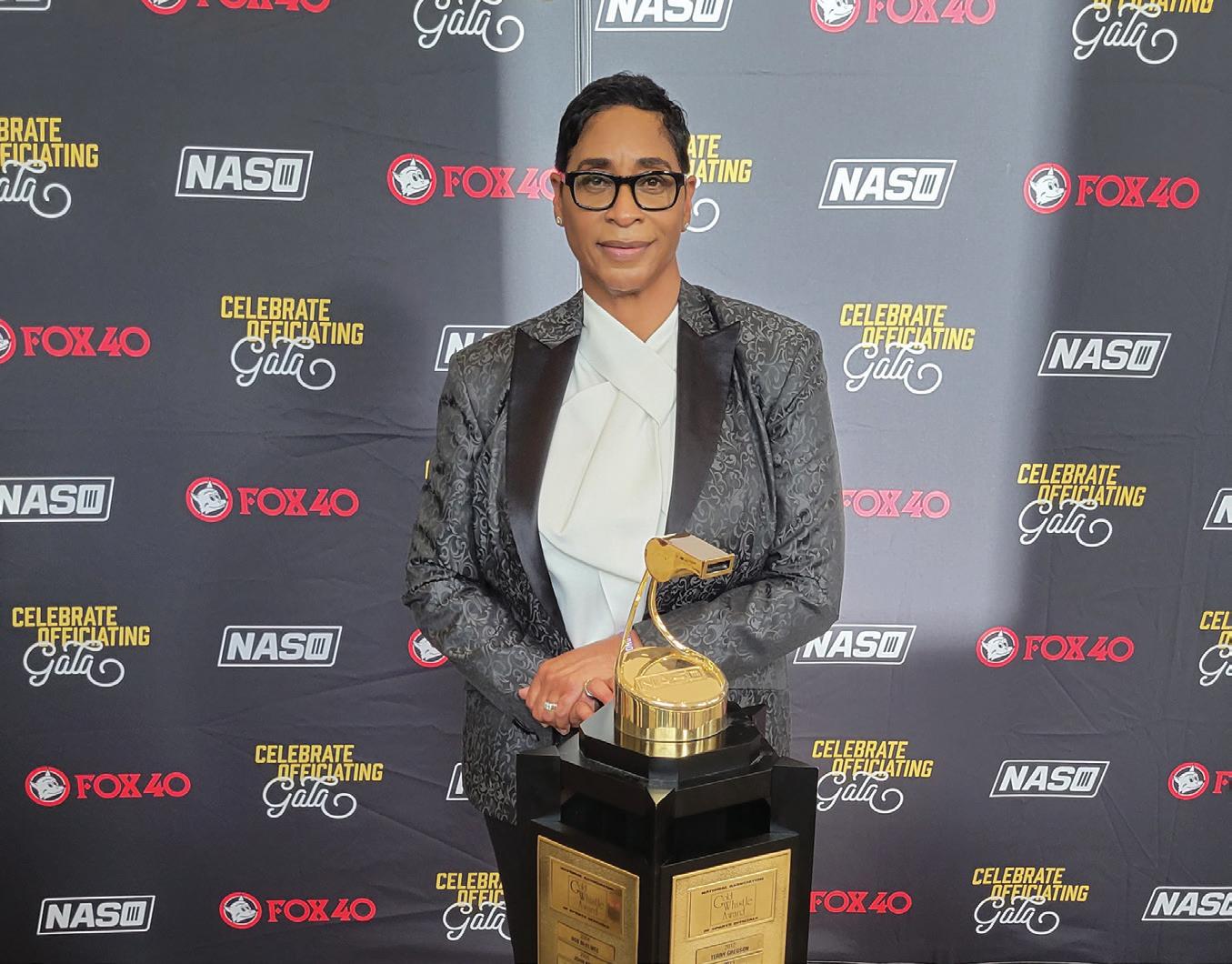
Formed in 1972, the NFLRA is the sole bargaining representative of everyone employed by the NFL to officiate. In 2005, the association became the first professional league group to enroll all its members into NASO’s group membership program. The NFLRA has stood shoulder-toshoulder with NASO ever since to








further the mission and better the industry for everyone involved.
NFLRA Executive Director Scott Green served on the NASO board from 2014-18 and was at the Gala in Riverside to accept the award on behalf of the NFLRA. Bill Carollo, former NFLRA executive director and current NASO board treasurer, introduced the Mel Narol Medallion. He called Green to the stage and the two of them were joined by NFL referees and current NFLRA board members Carl Cheffers, who served on the NASO board from 2018-2021, and Ron Torbert, a current NASO board member, and retired NFL officials Jeff Triplette and Mark Baltz.
“The accomplishments of the five active and retired NFL officials on the stage with me tonight are astounding, Green said. “All of us up here served on the NFLRA board at some point during our onfield careers or in retirement. We cherish the connection with NASO and look forward to many more years of partnership.”
All NASO members get an exclusive 10% discount as a benefit of NASO membership. Members are able to use the discount on Ump-Attire.com’s 850+ o ciating gear and apparel and qualify for free shipping o ers and free returns. Registered NASO members will be able to access the discount automatically without using a coupon code or having to call to place an order.


















5 OF SPORTS OFFICIALS
10% DISCOUNT AT UMP-ATTIRE.COM
EXCLUSIVE
Violet Palmer was the recipient of the 2023 Gold Whistle Award, officiating’s highest honor.
Officially Speaking Jason Shook, JBOA VP of Education, on Association Advantage

Jason
Shook is the vice president of education and rules interpreter for the Joliet (Ill.) Basketball Officials Association (JBOA). He is a 22-year veteran official. The association serves 275 members. The association is a Titanium member of NASO’s Association Advantage, which provides the JBOA guidance, materials and services.
NASO: How did you hear about the Association Advantage program and how long has your association been a member of the program?
SHOOK: We’ve been members since 2018. We heard about it through Referee magazine.
NASO: Was there any one particular feature that led your
association to join Advantage?
SHOOK: The insurance coverage ($6 million per occurrence individual general liability coverage, $100,000 game call and assigners coverage and $15,500 assault protection) and help that NASO could provide in case an official gets assaulted or sued by someone.
NASO: As part of your membership, your members receive discounts on Cliff Keen officiating gear. Do your members take advantage of that?
SHOOK: Yes, they do.
NASO: Do you find Referee magazine and the NASO website helpful to your trainers in creating meeting programs?
SHOOK: Yes, we have talked about some of the stories that have appeared and have discussed them among our membership. The articles have been a great way to get the discussion started on a variety of officiating topics.
6 Ways to Promote NASO
Great NASO benefits are nothing new to you, but what about your partners or association members? Let your peers know what NASO provides. Here are some common things officials might say and how NASO can help:
1. “I’m always looking for new ways to improve my game.”
Referee magazine is included in NASO membership along with It’s Official, which includes more officiating content and caseplays.
2. “Our group needs to come up with new recruitment ideas.”
NASO’s Say Yes to Officiating website (sayyestoofficiating.com) offers free recruitment resources.
3. “Did you hear about that official who was sued? Scary.”
NASO benefits include general liability coverage for claims of bodily injury, property damage and personal injury (alleged slander) while officiating.
4. “It’s tough to know what to do when officiating issues arise.”
NASO: One way NASO provides assistance to Association Advantage groups is through its Member Information and Consultation Program (MICP). Has your organization or members taken advantage of this program or how do you see potentially using it in the future?
SHOOK: I do not know of any of our members that have utilized the MICP, but I feel it could be very useful for the financial, tax and legal information that is available.
NASO: What would you say to another association leader who is thinking about joining Association Advantage?
SHOOK: It is a really good program that every association should at least offer to their members. Hopefully an official never needs to use the legal (consultation) NASO can offer, but there are so many other benefits to being a part of the Association Advantage group.
NASO’s Member Information & Consultation Program provides free information from NASO’s Legal Library and consultation.

5. “You shared a helpful article. Where did it come from?”





NASO and Referee offer great content on their websites and social media.
6. “If you find any other solid training materials, let me know.”
The NASO member discount for store.referee.com makes resources more accessible











6 IT’S OFFICIAL - OCTOBER 2023 NATIONAL ASSOCIATION
The Next Step for Newcomers
By Carl Smith
Most associations enroll new officials every season — some new to officiating, and some maybe just new to the area. How your association treats those officials will go a long way toward determining if they’ll stick around. Does your association have any “hard and fast” rules about advancement for “new” officials? Should your association develop some?
First of all, advance officials based on attitude and aptitude. Availability also has a bearing on the assignments a new official might get. Those three A’s are time-tested and proven.
1. Attitude
A consistent, positive, hardworking attitude should advance one official over another of similar talent with a negative attitude or lazy work ethic. A sense of entitlement is also not the right way to get the assignments you think you deserve. There seem to be too many officials who rely on that sense of entitlement to get games, rather than the principles of hard work and time applied to improving.
How does the attitude of your new official stack up to the association’s “rank and file”? Are they humble or arrogant? Are they confident or cocky? Sometimes you can pick these traits out in your first meeting with them, or in your initial conversation with them, but you want to see how they measure up on the field and court as well.
2. Aptitude




What is the actual talent level of your new official? Have they worked all levels of the sport? Are they a student of the game? Are they “coachable” or do they have a “yeah but” reply to every comment? As a board member, a big thing to consider is, what is their “value” to your association?


Utilize postgame reports from the trainers or observers to determine the new officials’ capability and attitude. As an assigner, get out and observe officials, both to offer immediate feedback and also compare notes with what you’re hearing.
3. Availability
What is your new official’s situation with work and family? Officiating is usually done as an avocation, not a vocation. Does your new official have a flexible job situation? Is he or she able to take off early, travel out of town? Does the official have small kids at home? As an assigner and as a person,
ASSOCIATION ADVANTAGE
Running a local officials association is demanding. You volunteer your time and effort to make it the best you can. But there’s no reason you have to do it alone. NASO Association Advantage exists to help you face any challenge and elevate your association in the process. Whatever challenges you have — training, insurance, legal issues, meeting help, bylaws and organization, membership issues and more — WE HAVE A SOLUTION TO MEET YOUR NEEDS.
PLATINUM & PLATINUM SHIELD
Association Advantage Platinum is the premier resource for maximizing the performance of your group, providing leadership and administrative resources to help you elevate your organization with a focus on training,
FROM OUR DATABASE
understand that family is first before officiating. Try to keep an eye on the situations of each official and be receptive to time off needed. If you have more than one official with good attitude and ability, but one is ready to go at a moment’s notice, the reality is there will likely be more games for that more available official.
When officials are new to your association, welcome them with open arms. You can always use more officials. When working with unknowns, there may be some lumps of coal in there, but every once in a while, there’s a true diamond that doesn’t require as much polishing as some of the others. It’s OK if they advance faster than some of the others, as long as you’ve got good reasons: observed attitude and aptitude by trainers and board members, documented by feedback in postgame reports. If you’ve got that, you’ve covered your bases. Carl Smith, Anchorage, Alaska, is a former treasurer and assigner for the Anchorage Sports Officials Association.
assigning, legal issues and best practices specific to local officials association management.
TITANIUM & TITANIUM SHIELD
The Titanium solution is ideal for officials associations that want to maximize their organization’s performance while fully protecting both their organization and individual members.







DIAMOND
The most comprehensive solution for officials associations that want to fully protect both their organization and individual members, as well as provide full training and testing solutions with an emphasis on video. Association Advantage Diamond is the ultimate answer to every challenge your association faces.



To learn more, go to NASO.org/Advantage or call us at 262-632-5448

7 OF SPORTS OFFICIALS
Smart Talk
By Patrick Rosenow
QHow can what an official says or doesn’t say on the field or court bring about a lawsuit?

AThe other day, I was chatting with a highly recruited high school soccer goalkeeper. He knew I refereed basketball and we started talking about the soccer officials who work his games. He described at some length a referee who regularly works his games and is infamous throughout the league and even much of the state. Apparently, the players, coaches, and even fans, refer to this official as “the talker.”
The young player explained how this referee incessantly comments on the action, makes recommendations, praises and chastises, and will sometimes go so far as to stop the game to finish a monologue. Almost every call, no matter how obvious, is accompanied by an explanation, whether anyone is listening or not. There may be times when the referee is saying something important, but no one is able to pick it out from the background noise of his neverending rhetoric. It was clear that the players regard him as almost cartoonish in the way he tries to “manage” a match.
Of course, there is a time and place for officials to communicate with players and coaches in every sport. A closed mouth official who refuses to say a word does him- or herself no favors and appears unapproachable and
confrontational. On the other hand, officials who yield to the urge to explain everything, can look like they’re working too hard trying to convince everyone they got it right.
More importantly, words can lead to legal trouble. Let’s suppose, for example, that “the talker” decides to handle a possibly dangerous and illegal challenge by keeping his yellow card in his pocket, but telling the offender, “If you do that again, it’s a red card for you.” Let’s also imagine a few minutes later the same offender, making an equally aggressive, dangerous, and illegal challenge, destroys all of the ligaments in his opponent’s knee. And finally, let’s imagine further the player/ victim or his family or their insurance carrier decides to sue him, alleging the referee’s failure to follow the rules and send off the aggressive player resulted in a career-ending injury.





Our chatty official is in a bind. When he said, “If you do it again, it’s a red card,” he was saying the first challenge was an illegal act, which, under the rules, is penalized with a sendoff. He can try to explain away that statement later, but it will be hard to dispute that he simply didn’t do his job the first time around. A review of game film might clearly show the offender should have been sent off after the first challenge, but had he kept his mouth shut, he could at least argue he had a different view. But “the talker” couldn’t help himself and, as a result, basically confessed he failed in his obligation to keep the game safe for all the players. Naturally, we can all think of similar examples in other sports.



YOUR RIGHTS AND RESPONSIBILITIES
The most obvious might be basketball and football, where officials regularly warn players to take it down a notch. How many of us who work basketball haven’t said, “I see that again, you’re gone”? It’s tempting to try to get a player’s attention by warning him or her about the possible consequences of their actions. If you’re going to do that, make sure you don’t inadvertently give anyone the idea you “could have” or “should have” ejected a player for an unsafe or violent act. If you choose not to eject the player, it needs to be because your assessment is that his or her actions did not meet the standard for ejection under the rules.








There is a time and place in every sport and every contest for the right kind of communications. The best officials know when that time comes and when it has passed. Talking is fine, but don’t be “the talker.”
Patrick Rosenow, Mandeville, La., is a retired Air Force judge who now sits as a federal labor administrative law judge. He officiated basketball at the high school, college and international levels. This article is for informational purposes and not legal advice.
8 IT’S OFFICIAL - OCTOBER 2023 NATIONAL ASSOCIATION
sports section




How to Build Crew Chemistry
 By Leah Berard
By Leah Berard
Have you ever been the new face to a crew or been the official welcoming a new face or faces to a crew? Whether a new crew member is filling in on the crew one time or working on it for the entire season, building team chemistry quickly isn’t an easy task; however, being the go-getters that officials are, it’s an achievable task when using various techniques. It’s both the off- and the on-thecourt/field dynamics and chemistry that translate into a high level of excellence when game time arrives. Here are some tips on how to build strong crew chemistry as expeditiously as possible.
Welcome the New Crew Member the Old-Fashioned Way: There’s nothing that can replace picking up the phone and calling a new crewmate to welcome him or her to the team. Coming out of a pandemic where isolation became all too familiar, a phone call packs a lot of power behind it and creates an instant bond. In a world where people suffer from getting too much screen time, picking up the phone to welcome a newbie breaks the ice and starts building a foundation. A house may not be built in a day, but the bricks and mortar must start being laid at some point. It’s a great way to offer support as well as an open
platform to ask questions about each other’s lives, creating a sense of familiarity and building connections within the crew. The effort put forth pays great dividends in building crew chemistry quickly.
Prioritize Clear and Open Communication: By prioritizing












Open communication, which also stresses being an active listener, is essential to being successful as a crew, allowing crew members to address any issues or challenges toward finding solutions to tackle crew matters needing further development.
clear and open communication, crews can achieve higher levels of performance and success; however, this may take some courage and vulnerability. Effective communication on the court or field is the backbone of building crew chemistry, while inadequate communication typically is the root cause of crew blunders. Holding regular team meetings — and including new crew members — will cultivate that environment of open dialogue, trust and collaboration.
Utilize Technology: Although the last thing those who suffer from too much screen time want to do is look at computer screens more, using technology as a tool for consistent crew meetings carves out a time where the crew can actively build on the chemistry. Virtual meetings offer a way to stay connected when logistics make it impossible to schedule in-person meetings or team-building activities. Using Zoom, Google Meet, etc., brings officials together in a beneficial way. Such meetings weren’t as prevalent and accessible before the pandemic. They can be challenging if technological issues arise, but that just another test of adversity for officials. And it’s sure to be an exercise in patience at some point, which is also beneficial to an official’s development!
Travel Together: Game officials traveling together might not reach the level of a new National Lampoon’s Vacation movie; however, the Griswolds did some epic bonding on their road trips. It’s not always possible to travel with crewmates due
OF SPORTS OFFICIALS NATIONAL ASSOCIATION OF SPORTS OFFICIALS
9
There’s nothing that can replace picking up the phone and calling a new crewmate to welcome them to the team.
to geographical challenges, so when the opportunity to do so presents itself, take advantage of it. The time spent together in closer proximity helps cultivate bonds and foster a sense of unity. It’s quality time that no doubt provides the opportunity to stack more bricks on the crew’s foundation. Officials are each other’s family, after all, and time on the road, where distractions are sidelined and pressure is off, is an opportune period to learn all the “ins and outs” about a crewmate. The miles on the road together can create an inclusive space where crew members can share any thoughts, ideas or concerns that relate to the crew, or they can share stories about their families, work, pets, favorite foods — the subject really doesn’t matter. The time is used to learn about others on the crew all while working toward a common goal to perform as successfully as possible. The additional company makes the hours spent on the road go by much quicker and more painlessly as well!
Hold Yourself and Crewmates Accountable: It’s inevitable that a crew is going to make what may (or may not be) considered a colossal mistake, and the crew will be forced to build chemistry quickly. How a crew rebounds is the real test of its foundation. Making mistakes together, owning up to those mistakes, supporting each other and picking each other up along the way, helps lay the bricks of the foundation. Hold yourself accountable first before holding other crew members accountable, then move forward as a united front. Don’t be afraid to have honest conversations. They will build trust and deepen bonds. If an official’s job on the day is to get a little dirty in the






foxhole with their crewmates, honesty and transparency will be vital to success.
As more time is spent getting to know the new face or faces, the chemistry grows. Even setting aside time the night before a game or the morning of (if time allows) to meet in person and share a meal together builds upon the crew’s chemistry. Although finding time to meet in-person for team-building activities is challenging, those opportunities should also be explored. It is important to observe what makes one another tick, which leads to enhanced onfield understanding of crewmates. At the end of the day, quickly building crew chemistry is part of the job for officials, and the more solid the foundation from the get-go, the better chance of success on the day of the game or match.
Leah Berard, St. Paul, Minn., officiated international rugby and now officiates high school and college football.
BASKETBALL
First Game of the Season
Whether you have been officiating for two years or 20, the first game of a new season presents a full set of challenges that may not be present at any point throughout the remainder of the year.
It goes without saying that you should not be focusing on items such as whether your uniform still fits or if you are in good enough shape to make it up and down the floor for 32 minutes (or more). That’s what the offseason is for.
It’s about actual officiating questions. Which is why your first pregame of the season may be the most important one of the
year. It will set the tone for how you and your partners pregame for the remainder of the season.
New Rules
• The most important aspect of a first-game pregame is making sure you and your crew are familiar with any new rules that have come into play during the offseason. It is a good idea for the R to reach out to the other members of the crew ahead of time to stimulate rules study in the days leading up to the game, and for the crew to read such rules and any applicable caseplays together to make sure everyone has a thorough understanding and is on the same page.
• Just as important, be aware of any rules that are no longer part of the code. Avoid the embarrassment of calling something that is no longer applicable and having to be corrected by a coach or a crewmate on the floor.

• Did you or any of your crewmates work a preseason scrimmage? If so, share information gleaned from that contest that will be helpful from a rules standpoint as you take the floor for the first official contest of the new season.
• Each member of the crew should come into the pregame prepared to discuss areas of the rulebook that have proven troublesome for that particular official in the past.
Points of Emphasis









• Discussion of the new points of emphasis for the season is a must. Again, the first game of the season will be, in many ways, establishing a tone for what’s to come during the next four months. Your crew needs to be ready to emphasize the areas the NFHS or NCAA wants emphasized, rather than

10 NATIONAL ASSOCIATION IT’S OFFICIAL - OCTOBER 2023
simply falling back on the way things have always been done.
• Also, make sure there is crew consistency on how the new points of emphasis will be applied and adhered to. The last thing you want is one member of the crew deviating from the others and leaving coaches and players confused about how POEs are being addressed.
Mechanics
• A quick refresher of two-person and three-person mechanics is a must, with added focus on any changes implemented during the offseason.
• Make sure to focus on mechanics related to the types of plays that can get a crew in trouble right off the bat — drives to the basket that result in a crash, goaltending/basket interference, last-second shots, etc.
Other Items for Discussion




• Be aware of whether a member of your crew is working his/her first game, first threeperson game, first varsity contest, etc. All of these “firsts” represent an opportunity to take the pregame discussion in a number of different directions suitable to that night’s contest.
• Communicate, communicate, communicate. You and your crew are not going to be in midseason form. Your comfort level and ability to pick up on subtle cues will not be finely honed. Make a commitment to communicate on every little thing so there are no misunderstandings or misapplications that could set a negative tone for the remainder of the season.
The preceding was an excerpt from “Pick a Pregame — Match It to the Game You’ve Got,” available at store.referee.com.
FOOTBALL
Fundamental Differences
 By George Demetriou
By George Demetriou
The NFHS football rulebook contains 49 fundamentals. A “fundamental” is a basic principle that serves as the groundwork for a system and can aid greatly in understanding the rules. Most of these fundamentals are excellent and apply universally to all football codes. Here are a few that do not apply to NCAA rules.












No live-ball foul causes the ball to become dead. That is true in all cases except for an illegal kick in NCAA play. An illegal kick is a kick made in a perfectly legal manner, but is not allowed because of when or where it is made. An illegal kick is most likely to be a scrimmage kick from beyond the neutral zone, but may also be a return kick (a kick after a change of possession). For a return kick and a scrimmage kick from beyond the neutral zone, the ball becomes dead the moment it is illegally kicked. Under NFHS rules, the ball remains live in each case. Illegal kicks, in effect, are treated as if the kicking team fumbled.
A scrimmage kick recovered in or behind the neutral zone may be advanced by either team. That is always true in NFHS. It does not matter whether the ball has or has not been beyond the neutral zone. Any member of the kicking team may catch or recover and advance a scrimmage kick while it is in or behind the neutral zone.
On the other hand, that is a relevant issue under NCAA rules. The kicking team may not catch or recover and advance
a scrimmage kick while it is in or behind the neutral zone unless the kick has not crossed the neutral zone. In such a case, the ball becomes dead and may not be advanced. Touching by the kicking team is a violation (illegal touching). When the ball becomes dead, the receiving team has the right to take the ball at the spot of the violation unless that spot is in the kicking team’s end zone, in which case it is a safety.
Any kick which is not a scoring attempt becomes dead when it breaks the plane of team R’s goalline. The difference between the two codes in that rule is sometimes troublesome for officials who work both sets of rules.
Under NCAA rules, when any legal kick touches the ground in team R’s end zone, the ball becomes dead unless on a free kick it had been touched by a team R player before touching the ground in team R’s end zone or unless on a scrimmage kick it had been touched by a team R player beyond the neutral zone and before touching the ground in team R’s end zone.
Play: K1’s punt, field goal attempt or free kick is muffed by R1 on his five yardline. The ball rolls into team R’s end zone and is recovered there by (a) K7, or (b) R2. Ruling: Under NFHS rules, the ball is dead as soon as it breaks the plane of the goalline. As a result, both players recovered balls that were already dead. Result in (a) and (b): touchback, team R’s ball on its 20 yardline. In NCAA play, the ball remains live while loose in the end zone. In (a), K7 scored a touchdown; in (b), it’s a touchback, team R’s ball on its 20 yardline.
George Demetriou has been a football official since 1968. He lives in Colorado Springs, Colo.
11 OF SPORTS OFFICIALS
SOCCER Blast to Tweet


 By Paul Rojas
By Paul Rojas
A referee whistle is a compulsory part of the uniform, and referees need to make sure it works before each match. Some referees say they check the whistle and wash it with peroxide to make sure there are no leftover germs after leaving it in the referee bag for a few months. Some rinse it with soapy water. Whatever method is chosen, the whistle should be cleaned on a regular basis. Another important tip is to always have more than one whistle for a game. Murphy’s Law will apply if the referee only has one whistle — either the whistle will not work, or it will drop to the ground and get filthy dirty. Easy fix. Pull the spare out of a pocket. Most referees learn to use the whistle properly at clinics. This small piece of plastic or metal can greatly help in match control and can clearly tell players that the referee is not pleased with an action and wants it stopped immediately.
The whistle is not always needed to stop or start play. When the ball obviously goes out of bounds, even the most unknowledgeable fan knows it is out and the match is restarted with a throw-in, goal kick or corner kick. A whistle is not needed to draw attention to the referee. The less opportunities there are to draw attention to the referee the better. The referee merely has to give the proper signal so the match can restart. Also, to restart the game after a foul or offside, a second whistle is not needed, unless the referee has advised the team taking the kick that they are not to put the ball into play
until the whistle is sounded. This may occur because the referee is talking to a player about unacceptable conduct or establishing the proper distance for the defensive wall. If this method is used, care should be taken not to use the whistle to move the wall. This is giving the attacking team permission to take the kick.








Note: The only time a whistle is required is for the kickoff (NCAA and NFHS). IFAB indicates the play is started with a referee signal. The same applies for the taking of a penalty kick. Normally a signal is interpreted as a whistle.

The whistle is used to recognize the few stoppages and restarts. Usually, a good tweet is sufficient for most of these calls but occasionally it can help you when you are in a jam. A simple foul or offside infraction calls for a whistle to recognize something happened on the field and players need to know a stoppage is necessary and a restart is next. Sometimes a good sounding tweet is needed when the ball is out of play, like crossing one of the boundary lines and re-entering the field quickly. A sharp whistle stops play and players will stop when they recognize that sound. However, when you get that feeling a whistle needs something else to calm down the players, a hard loud whistle will tell them enough is enough, along with a loud, “Don’t make me go to my pocket!” This happens quite a bit with older players; for some reason, they have a lot to lose, and the referee needs to keep a positive flow for the 90 minutes. What works in a tough match might be the very short, rapid tweets after a stoppage, making sure the guilty party knows that kind of play must not happen again.
A good tip to let players know what the whistle is going to sound like when the referee is not pleased with play is to start the match with that type of sounding whistle. Tell the players at the kickoff what the sound will be like if they cross the line.
Go back to the time when your mother raised her index finger, shaking it and saying in a calm voice, “No, No, No, No!” The whistle can have the same effect.
Potential problems between clubs should be discussed before kickoff and the referee crew always needs to be ready to control the match. When there is a hard foul or a potential problem, one technique that works quite well for referees is the sharp, hard whistle and running to the spot. Getting close to the play while letting players know there is a problem by the sound of the whistle could defuse the situation. However, on occasion, the players do forget good sportsmanship, and tempers will start to flare up. This could be a good time for a very hard whistle followed with loud hard blasts, and done close to the players who were ready to create a problem. Instead of clenching hands for what was about to follow, a fast cupping of their ears with their hands was needed to stop that loud irritating sound coming from the referee. Now, the players were looking at the whistle instead of each other. All 22 players were still present on the field after the foul because the referee used the whistle to prevent an altercation.
The whistle is needed; it is part of the uniform. Blowing it hard or just a short tweet is a case-by-case decision. Read the match, adjust techniques as the match progresses; let the players know what they cannot get away with fouls. This part of





12 NATIONAL ASSOCIATION IT’S OFFICIAL - OCTOBER 2023
the uniform not only can stop play, when necessary, it even can assist in stopping a potential problem.


Paul Rojas, Ed.D, Morton Grove, Ill., has been a referee for more than 30 years, and is a high level Assessor and Instructor.




VOLLEYBALL Ballhandling Brains
By Referee editors





Judgment is a word referees use on a regular basis, and it is the key factor when making ballhandling calls. While it is easy enough to say, it is much more difficult to apply. By definition, judgment is “the ability to make considered decisions or come to sensible conclusions.” While there are many coaches (and parents) who disagree referees always reach sensible conclusions, the first referee has responsibility for making the final decision on ballhandling faults.
In any match, there are hundreds of ballhandling contacts that must be judged. Most are clearly legal, and some are clearly illegal; however, there are many that fall into a “gray area” that require the first referee to make a decision about whether or not the contact is legal. Developing your own personal ballhandling judgment is not an easy task, but there are some points that can assist in the task of sorting out the legal from the illegal.


1. The different rule sets have slightly different criteria for judging ballhandling. In USAV and NCAA, the ballhandling directive specifically allows referees to be less severe in their judgment on a team’s second contact when a
player is making a challenging or spectacular play on the ball. NFHS rules do not provide for that allowance.
2. Consistency is the most important factor when judging ballhandling calls. That does not necessarily mean the same number of calls will be made against each team, but it does mean similar contacts should be judged the same way. The referee must set a level of ballhandling that he or she is comfortable with and maintain that level throughout the match.

3. Only the actual contact of the ball should be used when judging ballhandling. The sound of the contact, body position of the player or flight of the ball should not be used to judge the legality. Especially at higher levels where the speed of the game is faster and the players are more athletic, there are many unusual-looking contacts that are indeed legal.
4. Referees should avoid making “automatic” calls based on the type of contact. For example, a ball recovered out of the net is legal as long as there is no prolonged contact and the ball is not caught or thrown. In addition, it is legal to play the ball with an open hand, even if the player’s follow-through is in an upward motion. The actual contact with the ball must be judged, and the contact is legal if the ball rebounds from the hand and is not caught or thrown.

5. Multiple contacts are permitted on the team’s first contact. That includes the ball rebounding from one body part to another, as long as that is part of a single effort to play the ball. For example, a ball that rebounds from the forearm to the upper arm. Even though the other team may yell, “Lift!” that contact is nearly always legal, since it is difficult to catch/


throw the ball on that play.
6. When executing a two-handed set, the player’s hands must contact the ball simultaneously. If the first referee sees the hands contact separately, a double-contact fault should be called. While the spin of the ball may be an indicator of a double-hit, it is entirely possible for the ball to spin after a legal set. For example, if a setter has his or her hands too close together when contacting the ball, it will often create back spin even though both hands contacted the ball at the same time. It is imperative the first referee sees the actual contact of the ball in order to judge those contacts fairly.
7. “Deep dish” or “beach” sets can be difficult to judge. If the ball is over-controlled or the ball comes to rest in the setter’s hands, an illegal hit should be called. If the setter initiates contact with the ball in the chest area and releases the ball from the same area, the contact is legal. However, if the contact is initiated in the chest area, and the setter lifts the ball significantly before releasing it, an illegal hit is the correct call.
8. Many one-handed sets come out with a great deal of spin, unless the setter is extremely skilled. Those contacts should only be whistled if there is prolonged contact or the ball is caught or thrown. One-handed sets often come off the fingertips of the setter and should not be judged any more severely than any other one-handed contact.
9. Another type of contact that can be difficult to judge is a “tip” or a “dump.” The player’s hand should already be in motion before it comes in contact with the ball. If the player’s hand stops the ball
13 OF SPORTS OFFICIALS
before sending it forward, the result is a catch/throw action, which is an illegal hit.
If the player contacts the ball behind his or her head and brings it forward, an illegal hit has most likely occurred. Beware of when a player moves the ball sideways across the plane of the body. If the contact begins on one side of the body and the ball is released on the other side, the contact is illegal.
ASK US FOOTBALL
Roughing the Kicker
Play: Third and 20 for team A from its own five yardline. Quarterback A1 throws a backward pass to halfback A2, who gets off a quick kick. Is A2 entitled to the same protection as a conventional punter?
Ruling: Any player of team A may legally kick the ball and is eligible for protection assuming it is reasonably certain a kick will be made (NFHS 9-4-5a; NCAA 9-1-16a). A quick kick is one example in which there is not reasonable certainty a kick will be made. As a result, team B is given more latitude than during conventional punting situations (NFHS 9.4.5B; NCAA AR 9-1-16 III).











False Start
Play: First and 10 for team A from its own 20 yardline. Receiver A1 is on the line of scrimmage. After the ready but before the snap, A1 flinches. Should the covering official blow the play dead immediately and charge A1 with a false start, or allow the play to continue and call an

illegal motion foul? Ruling: If the covering official believes A1 has made a quick movement or otherwise simulated action at the snap, a foul for a false start has occurred (NFHS 7-1-7a Pen; NCAA 7-1-2b).

BASKETBALL

Throw-in Spot After Timeout
Play: A1 is dribbling the ball in team A’s frontcourt in the corner near both the sideline and endline. B2 knocks the ball out of bounds along the sideline. A1 is holding the ball out of bounds during A1’s throw-in on the sideline near the corner and (a) A1 signals for a timeout, or (b) passes the ball to A2, who is still in that corner nearer the sideline, and A1 signals for a timeout. The official grants the timeout. Where shall the throw-in be administered following the timeout? Ruling: In all codes, when a timeout is granted by the throw-in team before the throw-in has ended as in (a), the throw-in following the timeout shall be at the spot of the original throw-in, which is along the sideline near the corner in team A’s frontcourt. In NFHS and NCAAM, when a timeout is granted when the ball is inbounds in a team’s frontcourt, which causes a dead ball with an ensuing throw-in in the team’s frontcourt as in (b), the throw-in shall be at one of the four designated spots nearest where the timeout was called. In this case, the throw-in shall occur at the 28-foot line along the sideline in team A’s frontcourt. In NCAAW, when a timeout is granted when the ball is inbounds, the throw-in spot shall be at the out-ofbounds spot nearest to where the ball was located when the


timeout was granted. Therefore, team A shall receive a throwin along the sideline near the corner in team A’s frontcourt (NFHS 7-5-2, 7-5-3; NCAAM 7-3.2.a; NCAAW 7-3.2.b).
Simultaneous Violation
Play: A1 is attempting the first of two free throws. A4 and B5, who are in marked lane spaces, step into the lane at the same time prior to A1 releasing the ball on the try. A1 then shoots the ball, and the free throw is (a) successful, or (b) not successful. What is the result?
Ruling: A4 and B5 stepping into the lane at the same time while A1 is still holding the ball results in a simultaneous free-throw violation. A1’s free throw is canceled, and play is resumed with A2’s second free throw (NFHS 9-1-3d Pen. 3; NCAAM/W 9-1.1.e Pen. c).
BASEBALL
Gone Too Far
Play: With the bases loaded and two outs in the top of the seventh inning, Smith replaces Jones on the mound. The coach, as he is walking back toward the dugout and in foul territory, turns around and heads back out toward the mound to visit Smith. Ruling: In NFHS, the trip is allowed. If the team has not used all their free trips to the mound, the pitcher may remain in the game. In NCAA, the umpire should recognize a second trip is illegal and warn the coach to not proceed. If the coach continues to the mound, the coach shall be ejected and the pitcher must complete pitching to the batter; when the batter’s turn is completed, the pitcher shall be removed from the game. In pro, it is the same as NCAA except the pitcher

14 NATIONAL ASSOCIATION IT’S OFFICIAL - OCTOBER 2023
is not removed until he has pitched to three batters (NFHS 3-4-1; NCAA 9-4c3; pro 5.10L3).






No Dice
Play: With R1 on first and no outs, F2 interferes with B2, who is still able to hit the ball for a base hit to the outfield. R1 misses second on his way to third while B1 reaches first safely. The defensive appeal that R1 missed second is upheld. The offense’s head coach comes to the plate umpire and states he elects to take the catcher’s interference penalty. Ruling: The play stands. There is no option to take the penalty for catcher’s interference because the batter-runner and all runners advanced at least one base. A runner who misses the first base he advances to is considered to have reached that base (NFHS 8-1-1e; NCAA 8-2e1; pro 5.05b3).



Umpire’s Choice
Play: B1 hits a bounding ball into the right-field corner. A spectator leans out onto the playing field and scoops up the ball. Ruling: The umpires should take into account the runner’s speed and his position on the bases at the time of the interference to award him the base they think he would have obtained without the spectator interference (NFHS 8-3-3e; NCAA 8-3n; pro 6.01e).
SOFTBALL
Batter Holds Bat in Strike Zone
Play: B1 squares to bunt and holds her bat motionless in the strike zone as the pitch passes by high and inside near B1’s eyes. Ruling: In NFHS, NCAA and USSSA, B1 is charged with a strike. In these codes, holding the bat in the strike zone is
considered a bunt attempt. For a batter to take a pitch, the bat must be withdrawn and pulled backward and away from the ball (NFHS 2-8-2; NCAA 11.7.2.1; USSSA 3-Bunt, Attempted). In USA Softball, the pitch is a ball. The mere holding of the bat in the strike zone does not constitute a strike. For a swinging strike to be called in USA Softball, the batter must move the bat toward the ball (R/S 10).
Batter Hits Illegal Pitch
Play: With R2 on second and a 1-1 count, F1 commits but delivers an illegal pitch. B2 steps on the plate and hits a foul ball. Ruling: The ball is delayed dead on the illegal pitch but becomes immediately dead in NFHS, USA Softball and USSSA when B2 steps on the plate and contacts the ball. In NCAA, it becomes dead when the play is over. The illegal pitch takes precedence over the illegally batted ball. Though the situation technically presents an option for the offensive team to take the result of the play, the team at bat will certainly want to have the illegal pitch penalty enforced. Therefore, a ball is added to B2’s count. Play continues with B2 at bat with a count of two balls and one strike and R2 remains at second. (NFHS 6-1-1 Pen. and Exc.; NCAA 10-8 Eff.; USA Softball 6A 11b-2; USSSA 6-3a, c).
Incorrect Pitching Distance
Play: With two outs in the top of the second inning, it is discovered the pitching distance is incorrect. Ruling: In all codes, correct the incorrect distance immediately when discovered and continue the game without penalty (NFHS 1-1-9; NCAA 2.22.1 Note; USA Softball 2-1; USSSA 1-1 Note).





SOCCER

Encroaching Wall
Play: Team A is awarded a direct free kick. Three players for team B establish a wall 10 yards from the ball. Just prior to the kick, B1, a player in the wall, moves forward about two yards. As the kick is taken, B1 jumps up and heads the ball. Ruling: Assuming there is no advantage for team A, stop play, caution B1 for encroachment, and have the kick retaken (NFHS 13-3-1; NCAA 13.2.1; IFAB 13.2).
Goalkeepers Rights
Play: Goalkeeper B1 saves the ball with the hands. B1 then drops the ball to the feet and begins to dribble toward the edge of the penalty area. A2 shoulder-charges B1, in a fair manner, and takes possession of the ball, shoots and scores. Ruling: Goal. B1 relinquished the privileges of a goalkeeper when the ball was dropped to the feet (NFHS 12-8-1; NCAA 12.2.12; IFAB 12.2).
Advantage Applied


Play: A1 shoots on goal. B2 extends the arm to block the shot and makes contact with the ball. The ball continues forward and enters the goal. Ruling: Goal. The referee applies advantage. B2 is cautioned for the attempt to deny an obvious goal scoring opportunity (NFHS 12-9-1f14; NCAA 12.4.3.8; IFAB 12.3).
Fouled Twice
Play: A1 is tripped just outside the penalty area. A1 stumbles but retains balance and moves forward with the ball. The referee applies advantage. Just after entering the penalty area, A1 is tripped again and falls to the ground. The referee stops play and
15 OF SPORTS OFFICIALS
awards a direct free kick for the first foul since the advantage did not materialize. Ruling: This is an incorrect decision. The advantage did occur and A1 was fouled a second time. The referee should award a penalty kick (NFHS 5-3-1C; NCAA 14.1.1; IFAB 14).
VOLLEYBALL
and Pen. 10-1-2c). In NCAA and USAV, if the referees do not authorize (whistle) in response to the request, an improper request results; if the referee(s) whistle and then realize the request is improper, a delay sanction is assessed (NCAA 6.3.2.2, 11.2.6.1; USAV 15, 15.4.1, 16.1).
Team Composition
team’s best blocker and does not want to play in the back row.
Requests
Play: After the first referee beckons for service, team A’s coach, thinking the team is out of alignment, clearly requests a timeout. Ruling: In all codes, no requests for timeout, substitution or service order/lineup check are allowed. In NFHS, the coach’s request should be ignored if possible; unnecessary delay results if a referee whistles in response to the request (9-9-1p
Play: A1 is injured during a set after crashing into the bleachers while trying to chase down an errant pass from her setter. After being evaluated by the trainer, it is determined she cannot continue play. Team A wants to play shorthanded even though there are two substitutes on the bench — A2 has not yet entered this set, and A3 has already played in another position in this set. The coach wants to save player A2 for the team’s next rotation as she is the
Ruling: In all codes, A2 must substitute for the injured A1. In NFHS, a team may play with fewer than six players only if there are no eligible substitutes on the bench (6-2-1, 6.2.1). In NCAA and USAV, a team may never play with fewer than six players (NCAA 5.2.1.1; USAV 7.3.1).
Playing the Ball
Play: A1 jumps to block an attack by an opponent. The jump is too early causing A1 to contact the ball on the way down. A1 is not reaching higher than the top of the net at the time of contact. Ruling: In all codes, A1’s contact is the team’s first hit. Team A has two hits remaining to return the ball to the opponent’s side (NFHS 9-4-3, 9-5-1c; NCAA 14.6.1; USAV 14.1.1).
The National Association of Sports Officials (NASO) is a nonprofit, educational association providing services and benefits for sports officials. It is run by officials, for officials. If you know a good candidate for membership, please send us his or her name and address. We will forward an invitation to join. For more information contact 262-632-5448 or www.naso.org/membership
Your Company Can Help Improve the Quality of Officiating
NASO EDUCATION PARTNER PROGRAM MEMBERS:










Alabama High School Athletic Association
American Specialty Insurance & Risk Services Inc.
ArbiterSports

Arizona Interscholastic Association
Atlantic Coast Conference
Big 12 Conference
Big East Conference
Big Sky Conference
Big Ten Conference
Big West Conference
California Basketball Officials Association
California Interscholastic Federation
CIF-Southern Section
Canadian Football League
Capelli Sport
Chief Zebra Enterprises
Cliff Keen Athletic
College Football Officiating LLC
Collegiate Officiating Consortium
Colorado High School Activities Association
Court Club Elite
D-II - Collegiate Commissioners Association
DVSport Software Inc.





Eagle Tax Res
Fox 40 International
Fox40Shop.com
Gamekeepers
Georgia Athletic Officials Association
Georgia High School Association
Gulf Coast Conference
Honig’s
Hudl IAABO Inc.
Illinois High School Association
Indiana High School Athletic Association
Iowa High School Athletic Association
Kansas State High School Activities Association
Kentucky High School Athletic Association
Louisiana High School Athletic Association
Louisiana High School Officials Association
Major League Baseball
MIBT Media
Michigan High School Athletic Association
Mid-American Conference
Minnesota State High School League
Missouri State High School Activities Association
Missouri Valley Football Conference
National Association of Intercollegiate Athletics
NBA
NCAA
Nevada Interscholastic Activities Association
New Mexico Officials Association
N.Y. State Public High School Athletic Association
NFHS
NFL Foundation
NFL Officiating Department
NFL Referees Association
NHL
NHL Officials Association
Officiating Collective
Ohio High School Athletic Association
Oklahoma Secondary School Activities Association
Oregon Athletic Officials Association
Oregon School Activities Association
Pac-12 Conference
Pac-12 Football Officials Association
Professional Association of Volleyball Officials
Professional Referee Organization
Purchase Officials Supplies
QwikRef Inc.
Referee Enterprises Inc.
RefReps
Reveal Media
South Dakota High School Activities Association
Southern California Intercollegiate Athletic
Conference
Southeastern Conference
Sports Officials Care
Sun Belt Conference
Texas Association of Sports Officials
Texas High School Basketball Officials Association
U.S. Center for Safe Sport
Ultimate Fighting Championship
Ump-attire.com
UMPS CARE Charities
United States Polo Association
United States Tennis Association

University Interscholastic League - Texas
USA Cheer/STUNT the Sport
USA Hockey
USA Softball
USA Volleyball
US Youth Soccer
Vokkero by Adeunis
Washington Interscholastic Activities Association
Washington Officials Association
West Coast Conference
W.Va. Secondary Schools Activities Commission
Wisconsin Interscholastic Athletic Association
16 IT’S OFFICIAL - OCTOBER 2023
an NASO
Partner Today!
Become
Education















































































































































































































 BY RICK WOELFEL
BY RICK WOELFEL














































 DALE GARVEY (BASEBALL: TERRY GRANILLO, NORTH BEND, WASH.; FOOTBALL: FROM LEFT, BOBBY BEAULAC, AUBURN, WASH., KEITH SMITH, LYNNWOOD, WASH.)
DALE GARVEY (BASEBALL: TERRY GRANILLO, NORTH BEND, WASH.; FOOTBALL: FROM LEFT, BOBBY BEAULAC, AUBURN, WASH., KEITH SMITH, LYNNWOOD, WASH.)






















































































































































































































































































































